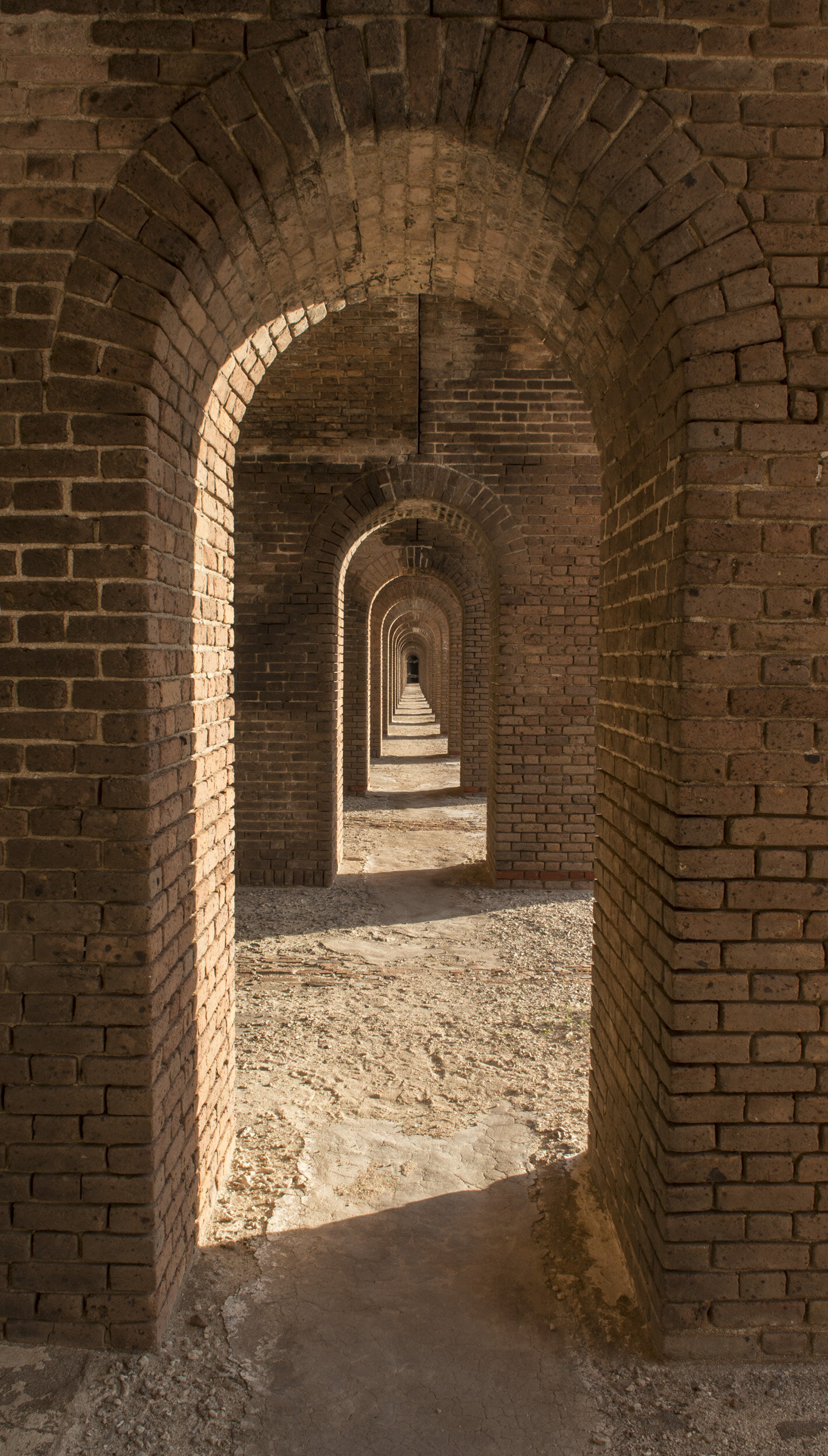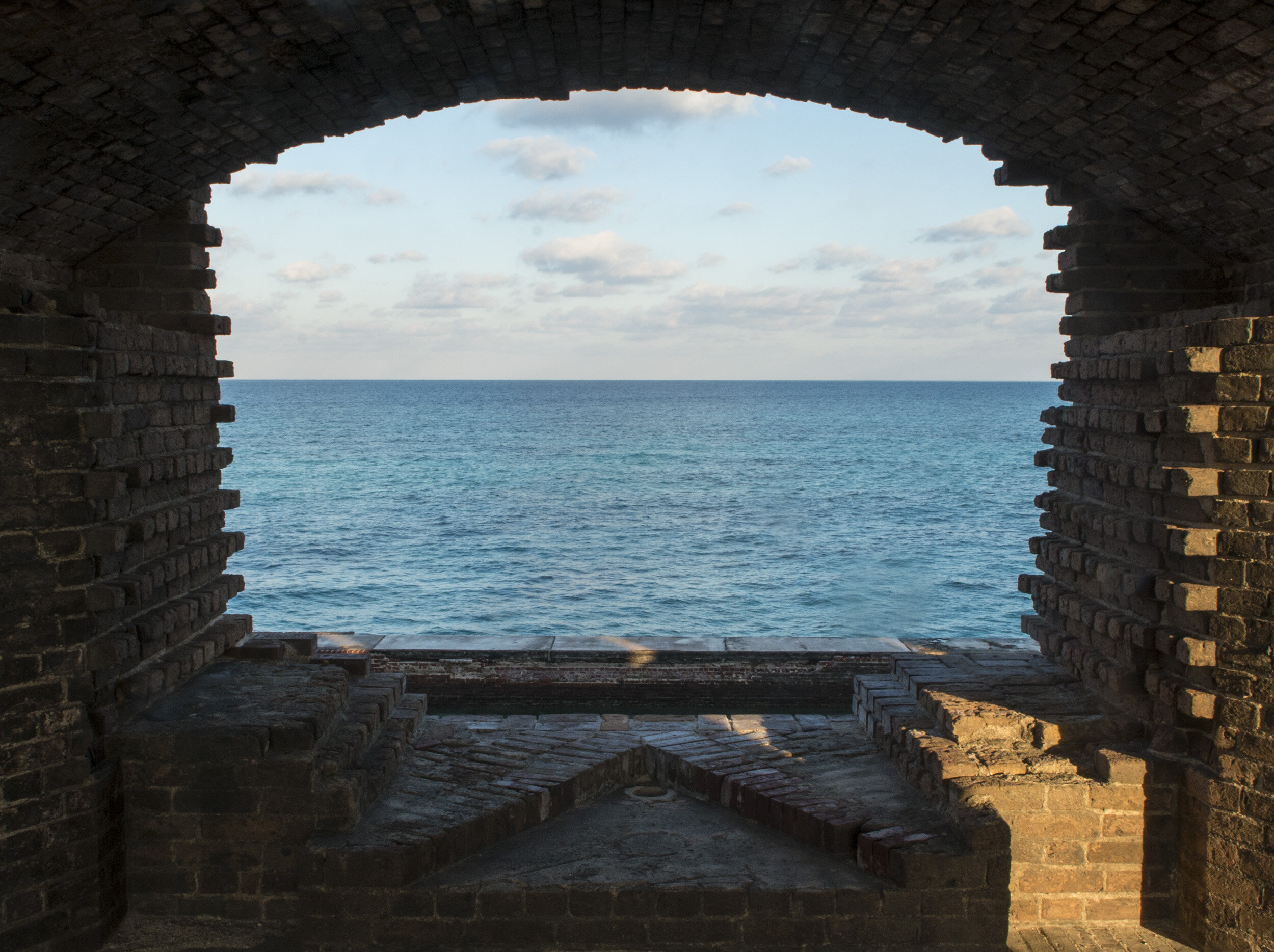Park visit: Dec. 5-7, 2019
(For those just interested in practical, trip planning information, I’ve highlighted relevant passages in bold italics)
DAY ONE: HAPPY BIRTHDAY TO ME
As I sat in the ferry terminal in Key West waiting to board the Yankee Freedom III, it really started to hit me; I was finally going to experience Dry Tortugas National Park. Ever since developing a serious interest in visiting the national parks of the U.S. in the ‘90s, there has been something very compelling about Dry Tortugas that had always captured my imagination and put it at the top of my national parks bucket list. I love little islands, I love ruins, and Dry Tortugas has both. So more than 20 years after first reading about it, I was only three hours from arriving on its shores. And to add to my excitement, it was also my 47th birthday. I dare say I was getting a little choked up.
Being a camper, as opposed to a day tripper, I had checked in at 6:00 a.m. so security could go through my stuff to make sure I wasn’t bringing any prohibited items (fuel, weapons, etc.). Dry Tortugas has no facilities, stores (aside from the small gift shop), or fresh water of any kind on it, so I would have to bring anything and everything I anticipated needing, including water. So with my stuff loaded on the ferry, I waited in the terminal for boarding. At about 7:00 a.m., a half hour before departure, the crew of the Yankee Freedom III (YFIII) started giving us info about what to expect on the ride out there and once we’re on the island. The main crew member talking to us was a very outgoing man who went by the name Hollywood. I never did learn his real name. He appeared to be 40-something with shoulder length, sun bleached, blonde hair. He seemed like the type destined to be doing one of two things; a) exactly what he’s doing now, a tour guide or b) a singer from an ‘80s rock band currently on the nostalgia concert circuit.
He gave us a little history, some handouts, told us the boarding procedure, etc., and announced that there would be a complimentary, one hour tour of the fort as well as free snorkel gear for those interested. I also learned two very important things that I hadn’t known about before that I would take full advantage of during my stay. The first was that while the YFIII was docked on the island, they would serve a lunch buffet in the main cabin. Every passenger gets one free lunch per trip. Campers can take their free lunch on whatever day they choose, and then it’s only $7 per person after that. Roughing it in the campground is a great experience, but so is someone making lunch for you in the air conditioned main cabin. The other thing I learned was that the aft of the YFIII was fitted with several hot, fresh water showers. You’re not allowed to use soap or shampoo, but after snorkeling in salt water, or just after camping for a day or two in the middle of nowhere, the ability to rinse off with a daily hot shower feels like a decadent luxury.
After we had all boarded, we set sail. Of the roughly 200 passengers, less than ten of us were campers. The rest were all day trippers who would only be on the island for a mere five hours before heading back to Key West. I started off sharing a table with a group of older women as we ate our complimentary continental breakfast, we got talking. They seemed fascinated by the fact that I would be spending three days on the island. Not that they were going to do it, but it sounded very adventurous.
I wandered around the vessel, checking out the forward and aft decks. It was a partly cloudy day so the sun wasn’t too hot. We passed several keys before hitting the open sea between Key West and Dry Tortugas. We were told to keep an eye out for sea turtles, which are common in the area. We did indeed spot a few along the way.
Fort Jefferson as we approach on the ferry.
After a while, from the forward deck, the first signs of the park could be seen; the upper portion of Fort Jefferson. After two decades of waiting, this place that had so captured my imagination was within sight. I started getting a little choked up again (I’m a big softy). I stood at the bough of the ship, transfixed. I don’t think I took my eyes off of it the whole way to the dock. It became larger and larger until we could see the full extent of the island and fort. The ferry circled around the west side of the island and pulled into the calm, protected waters of the anchorage. As the ferry approached the dock, it really started setting in that I was actually here. I was trying to stay cool, but I could feel myself welling up a little bit. I stood on the deck of the ferry trying to take in the full expanse of Fort Jefferson. It was absolutely enormous and beautiful.
I wasn't allowed to get off the ferry just yet. As a camper you have to go through an orientation with one of the park rangers before being allowed on the island. It’s fairly standard stuff; pack in, pack out, protect your food from rats, quiet hours, etc. As we disembarked, there were carts on the dock near where our gear had been unloaded by the crew. I loaded my cart and headed down the walkway off the dock. I got to the end and stepped off, and there I was; I was finally on Dry Tortugas!
I wanted to stake my claim in the campground quick so I could make the tour, so I headed straight there. As I hauled my cart the 500 feet towards the campground, I kept looking up at Fort Jefferson and trying to take in just how big it was. It’s more on the scale of European castle than an early 19th century American fort.
A few of the many hermit crabs in my campsite
I entered the campground and passed two sites which were taken and found a site a little more in the trees that seemed suitable. As I approached the picnic table for my site I saw something I was truly not expecting: hermit crabs. So many hermit crabs. Scores of hermit crabs. They were crawling all over the place. Under the trees the ground was covered with dead leaves which produced a constant rustling noise as the crabs crawled through them. Some people might be skeeved out by them, but I found them utterly fascinating. They would be a fixture in the campground during my stay. But the tour was starting soon, so I took a few pics of the crabs, parked my cart, and headed back to the fort.
The tour meets across the moat from the sally port of the fort, right near the dock. Hollywood and another crew member, Bryan, we’re leading the tour. Hollywood normally would be the tour guide, but this was Bryan’s inaugural run as main tour guide, with Hollywood there just as back up. They lead us over the moat bridge and through the sally port. I had another one of those “holy shit! I’m actually here and doing this!” moments as I walked through the sally port and entered the inner grounds of the fort.
Bryan telling us the story of Fort Jefferson
We gathered on some benches in the shade of some trees (even in December that sun was getting pretty warm). Bryan started his talk about the history of the fort, from the discovery of the island, to the fort’s early days as a military instillation, to its final days as a federal prison. Bryan did pretty good, only stopping once in a while to get a queue for the next part from Hollywood. He took us down the lower level of the fort, through the casemates, pointing out various features, then up the spiral stairs to the second level, and then up to the tour’s final stop on the roof. The view from up here was spectacular, with a commanding view of the island and surrounding sea. In the shallow waters around the fort I could even make out where the seagrass beds were. The tour is only about 50 minutes and if you want to learn about the history of the fort and some of its special features, is highly recommended.
After the tour I went back to the campsite to set up my tent. The day trippers we’re still all over the place so I wasn’t in a huge hurry to walk around. Pitching a tent isn’t something I would normally write about, but in this case it was noteworthy since I had to clear away a dozen hermit crabs from my tent site to make space. Plus I was always looking down to make sure I wasn’t stepping on any. As I was setting up, a ranger came through to remind everyone of securing their food properly. I knew about the rats so I had brought my bear can to keep my food and scented items in. I put the can on my campsite’s grill that I would not be using. The ranger said that would be fine. What I didn’t know was that the rats will also chew through plastic water bottles. He had me put the two 2.5 gallon water jugs I’d brought in my storage tote, which I then locked with a carabiner. I hung anything else I was worried about (garbage, dirty laundry, etc) on the food pole. The rats start to come out around dusk and are harmless, you just don’t want them getting into your food.
After stopping for my free birthday lunch buffet on the ferry, it was time to explore and get the lay of the land a little. I walked back into the fort to check it out more. The fort has six corners that protrude out, or ‘bastions’. They are labeled Bastions A thru F. The stairwells in Bastions C, D, and E are not accessible, so you must walk across the grounds to either Bastion A, B, or F to access the second level and roof. All levels of the western side of the fort, including the roof, are off limits starting from just past Bastion D, through Bastion E, and almost to Bastion F. This is the housing section for the rangers and employees.
I was like a little kid again exploring the fort. It reminded me of the castles I had explored as a youth while on family vacations in England. One of my favorite features of the fort is the hot shot furnace. They would get the cannon balls red hot and then fire them into an enemy ship, not only putting a hole in the hull, but also igniting the munitions inside. There is also a small boat on display on the first level near Bastion B. This was a homemade boat outfitted with what looked like a small car engine that was used by a group of Cuban refugees to cross the 90 miles of open sea from their homeland.
Looking down the casemates of the second level
Then I headed out onto Bush Key. Despite the day trippers still being there, Bush Key was almost empty. I passed one girl sitting on the beach reading. Between May and September, Bush Key is home to a huge nesting ground of sooty terns and is off limits to visitors. So if you want a bigger island to explore, come during the winter months. Bush Key is undeveloped with long stretches of coral beaches. Out past Bush Key is Long Key. Long Key is home to nesting frigate birds and is off limits to visitors. The frigates can be seen circling Long Key all day long, from sunrise to sunset. If you look over there, you’ll see them.
Next I checked out the moat wall. The wall is around five to six feet thick, and wraps around the fort. There are two breaks in the wall, between Bastions E and F, preventing you from walking the full perimeter of the fort. Snorkeling is the only way to see this section of the wall. Only one break is currently shown on Google maps. From the wall you can see the corals growing on its side and lots of fish, along with the occasional jellyfish.
At around 3:00 p.m., the 200+ day trippers all filtered back onto the YFIII and it pulled away from the dock to start its journey back to Key West. And just like that, the island fell quiet, nearly abandoned. It’s population going from well over 200 to less than twenty. I felt like the island was all mine. This was the Dry Tortugas I had come to see. As the ferry’s engines faded in the distance, I started feeling it: island time. Just that peaceful feeling of enjoying the moment, where the only thing I had to worry about was being on time for sunset.
I made one last trip inside the fort before it closed for the day. I wanted to scope out some potential snorkel sites from the roof, and to visit the cell of Dr. Samuel Mudd, located directly above the sally port on the second level. Mudd was arrested, tried, and convicted as a coconspirator in the assassination of President Lincoln and is Dry Tortugas’ most famous inmate from its days as a prison. He arrived here on July, 24, 1865. See the video for more details on that story.
By this point it was starting to get twilight, and I wanted to go see the sunset, which would be at about 5:45 p.m. So I left the fort for the day and picked out a spot on the moat wall just across from Bastion E. I wasn’t alone. There was a group of six that had come in on a private boat anchored just south of the dock. They were a fun bunch. I had heard of the nightly ritual in Key West of people gathering to watch the sunset, and I understand why. If I was treated to this spectacular display everyday I’d make a point to watch it as well.
Sunset panorama from Bastion E
I ended the day with dinner with my neighbors. After I made my cold quinoa and flavored tuna concoction, I struck up a conversation with them. A nice young couple from the Midwest. They were both pharmacists. They were also Game of Thrones fans, so we talked about that for a while. As it got darker, we could start to see the rats coming out. We’d catch them out of the corner of our eye as they scurried along the edges of the trees and shrubs. They are definitely there, so heed all precautionary measures in regards to food storage.
With that, I said goodnight to my neighbors, got ready for bed, and crawled into my tent. I drifted off with the contentment of having checked off one my big bucket list items. Regardless of what the rest of the trip brought, I would always have this one perfect day in the Dry Tortugas.
DAY ONE PHOTO GALLERY:
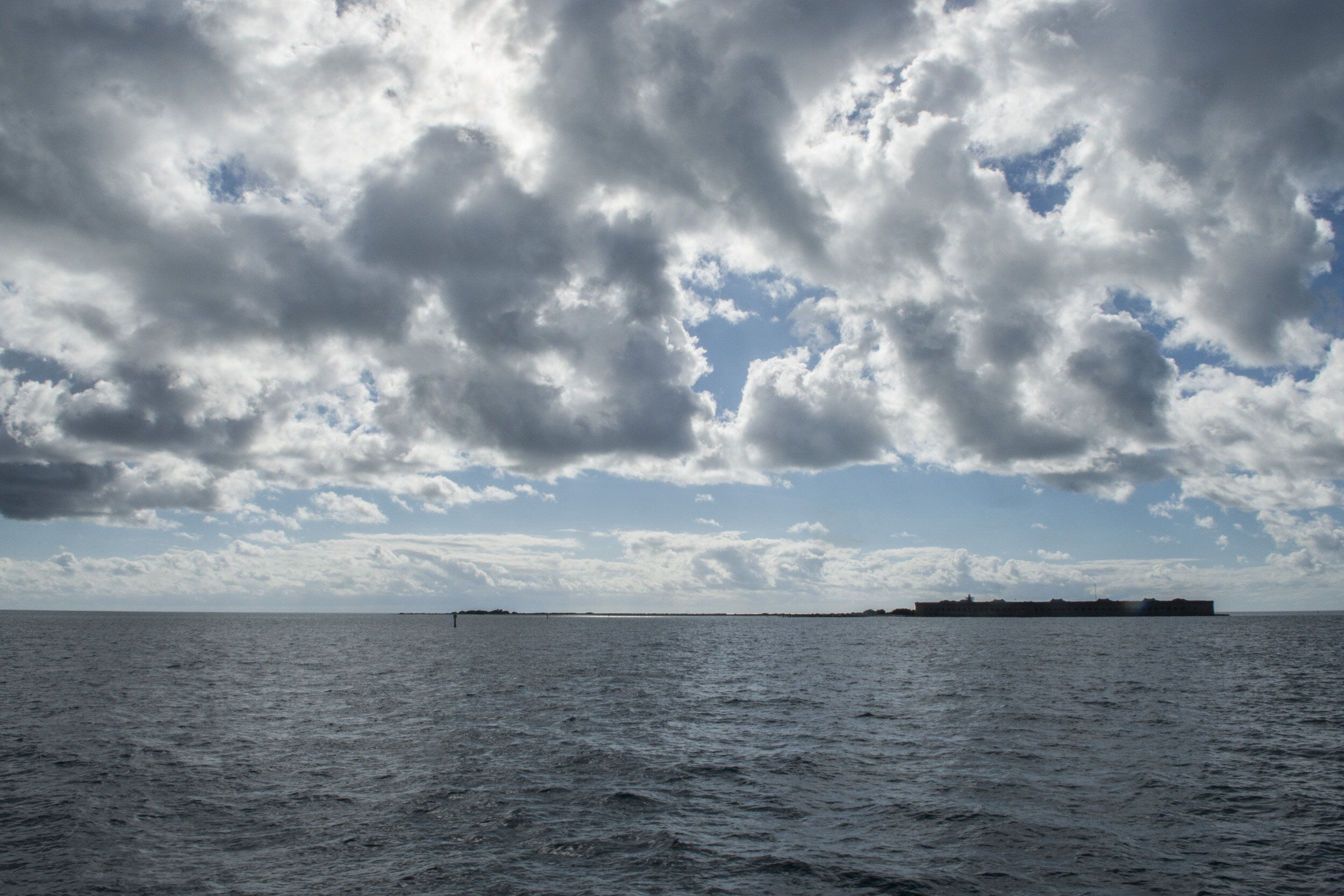
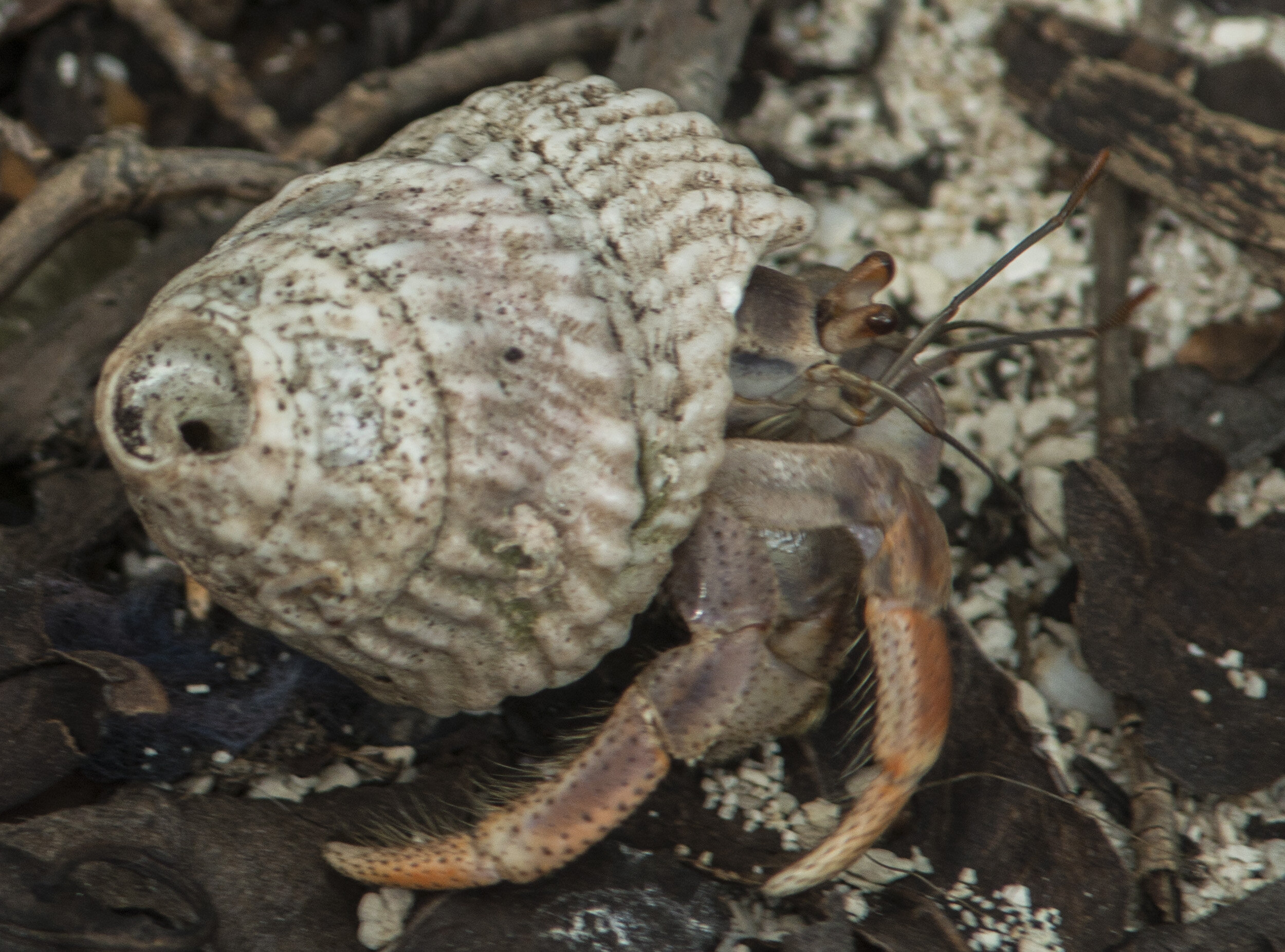

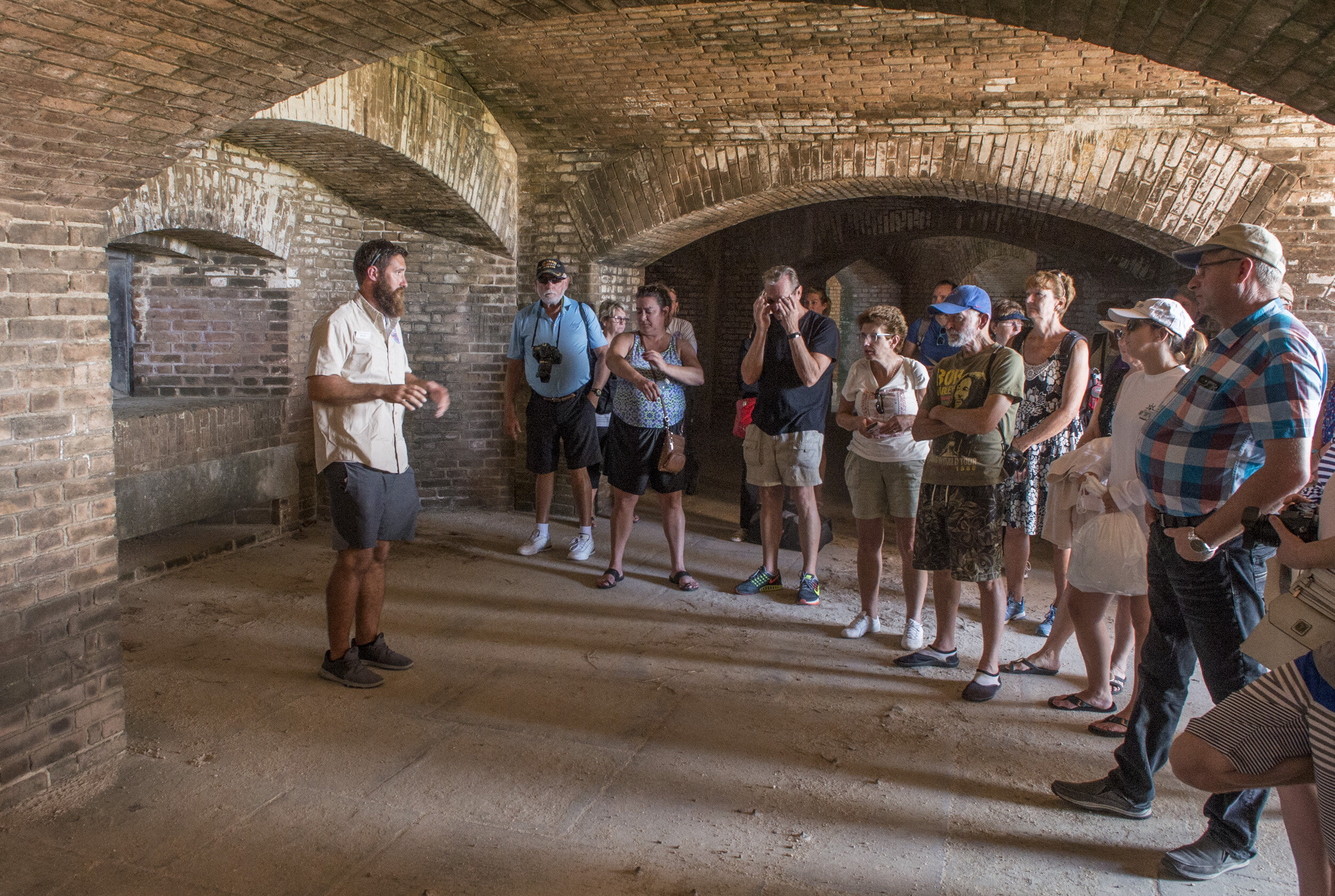
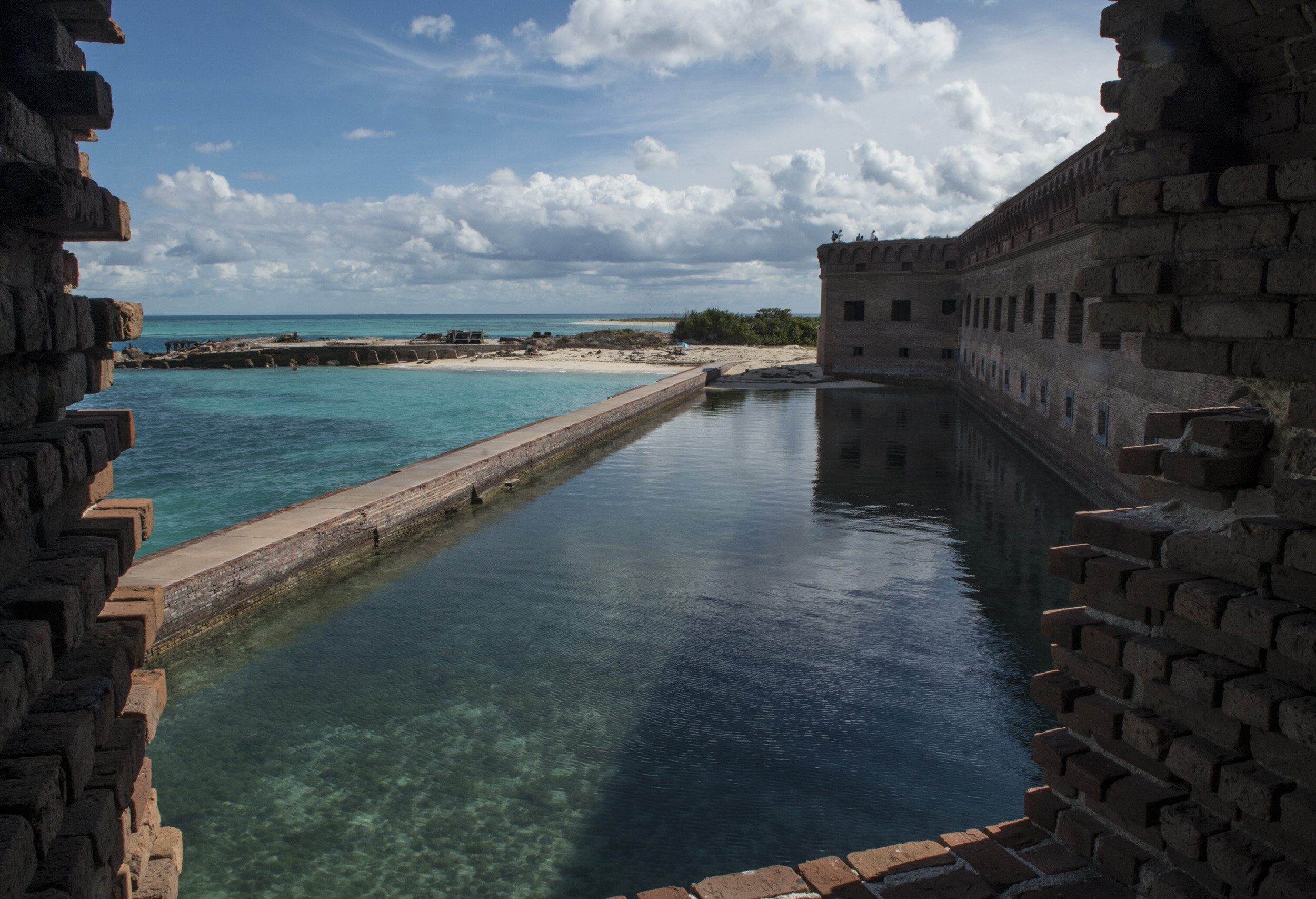
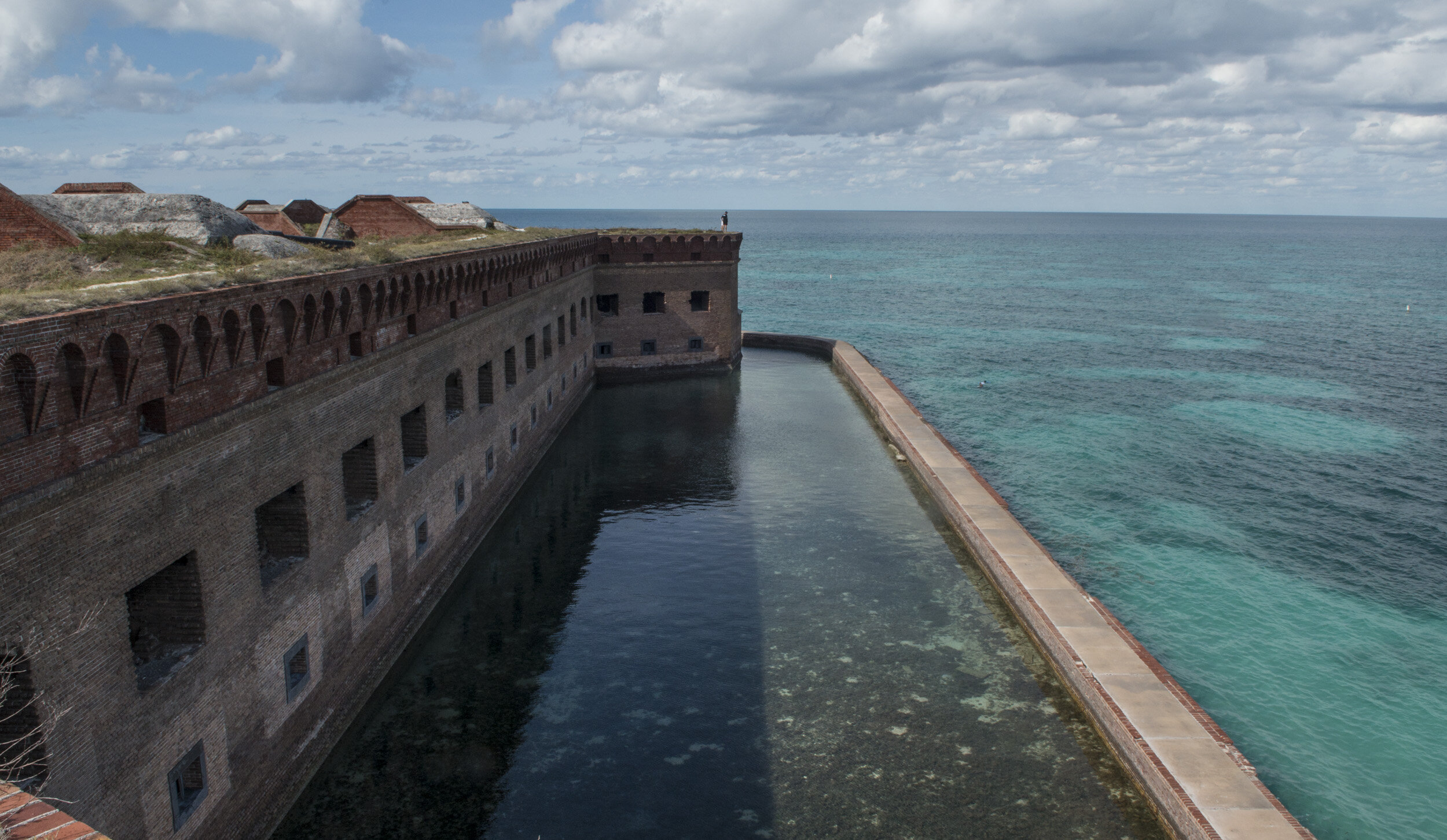
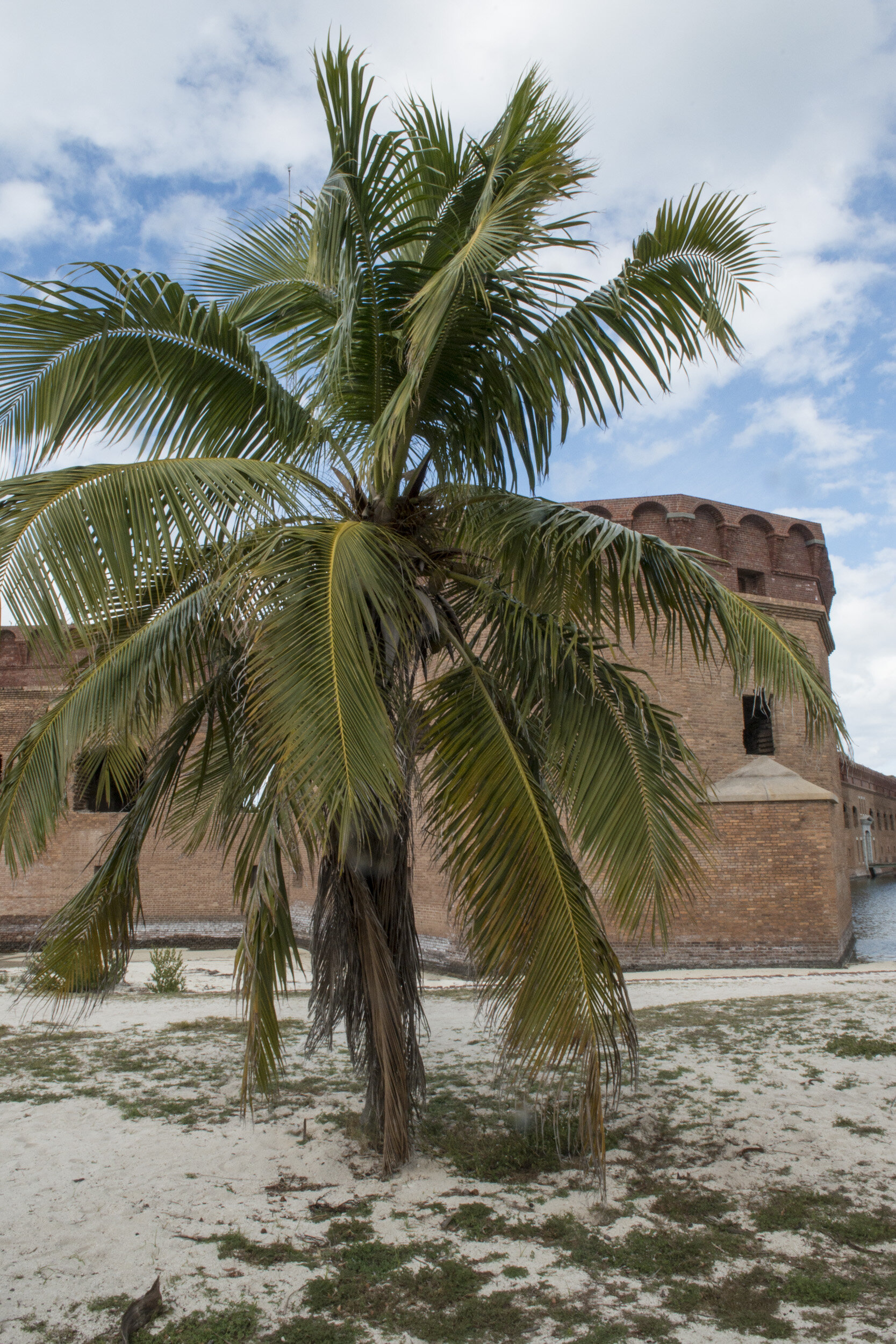
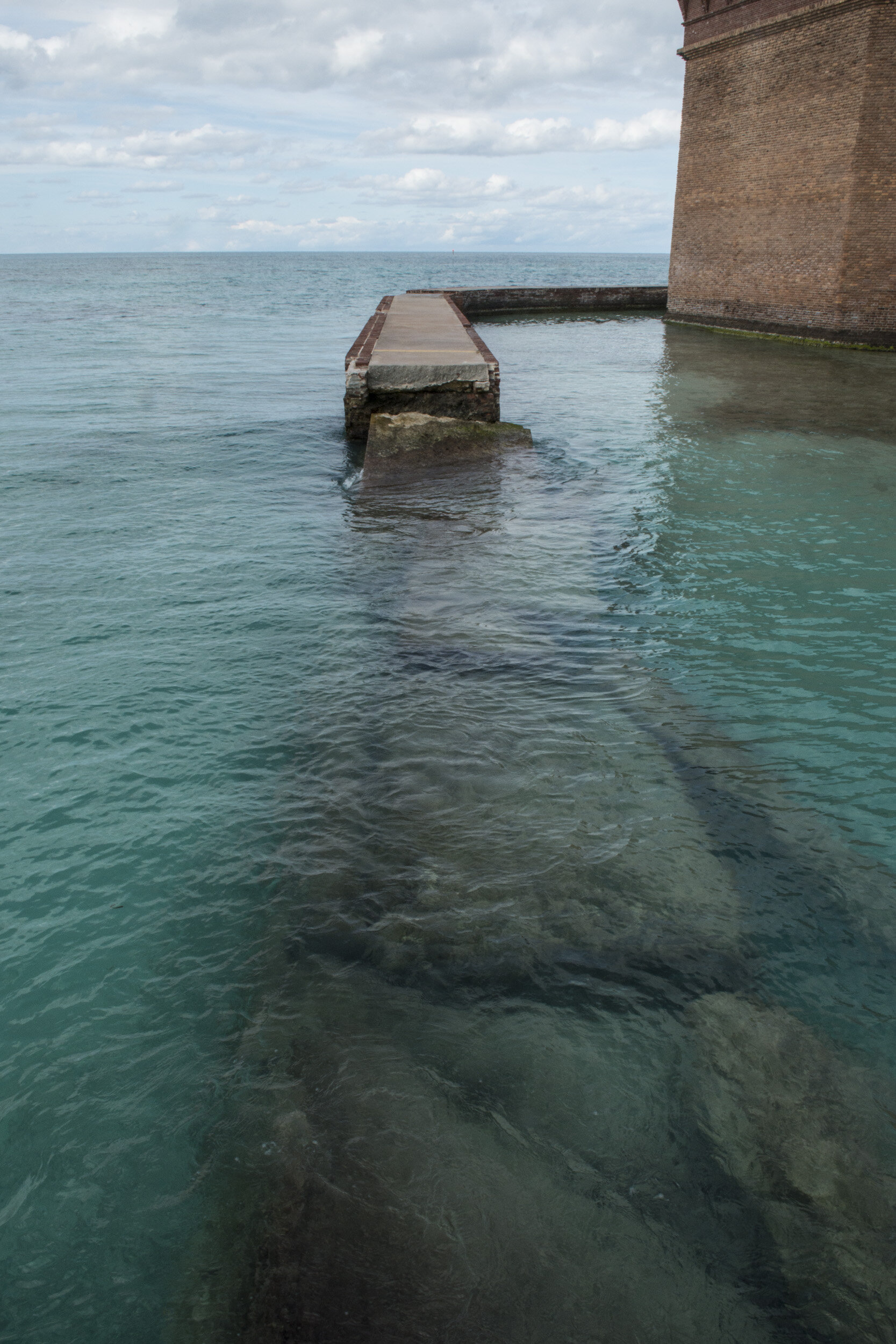
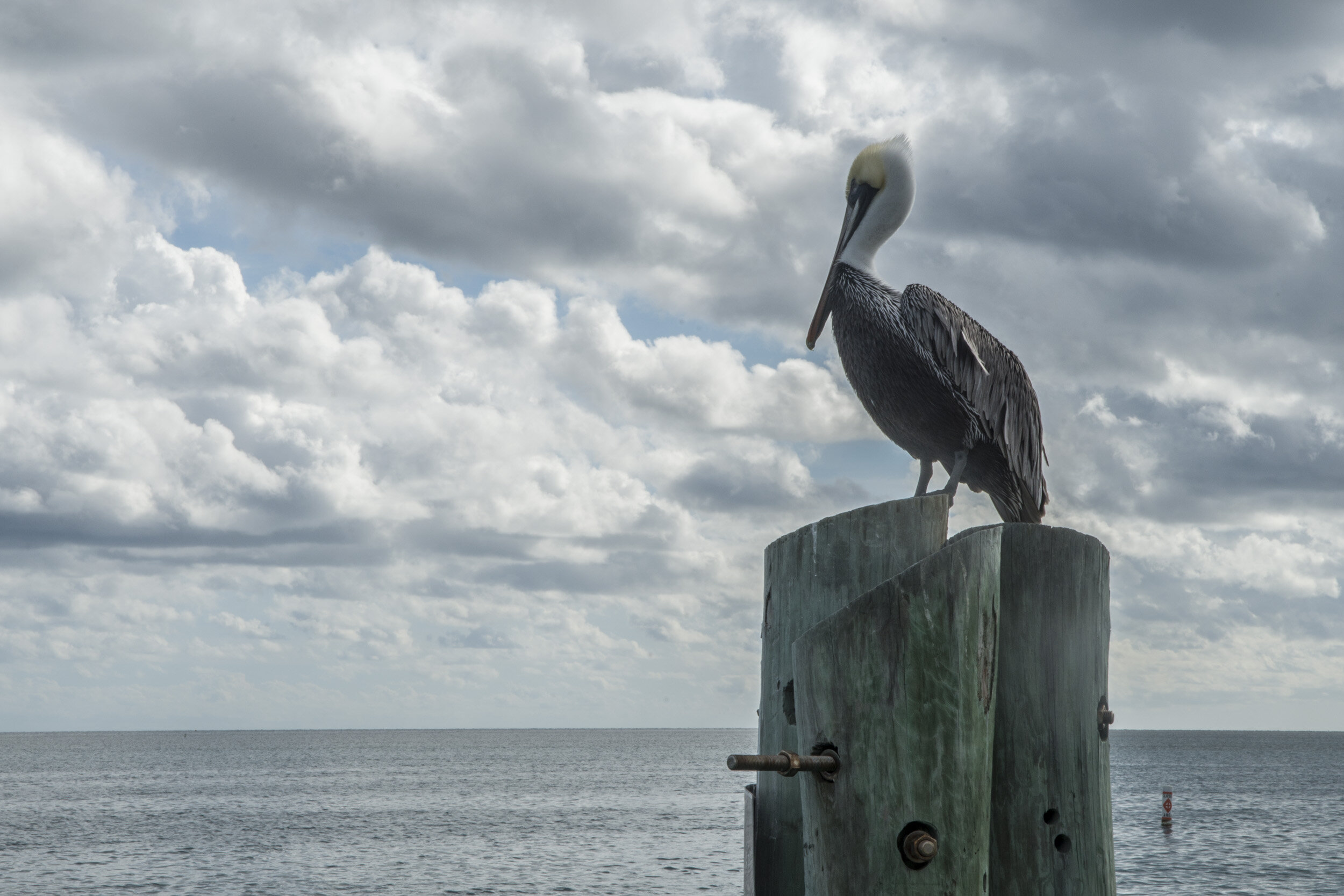
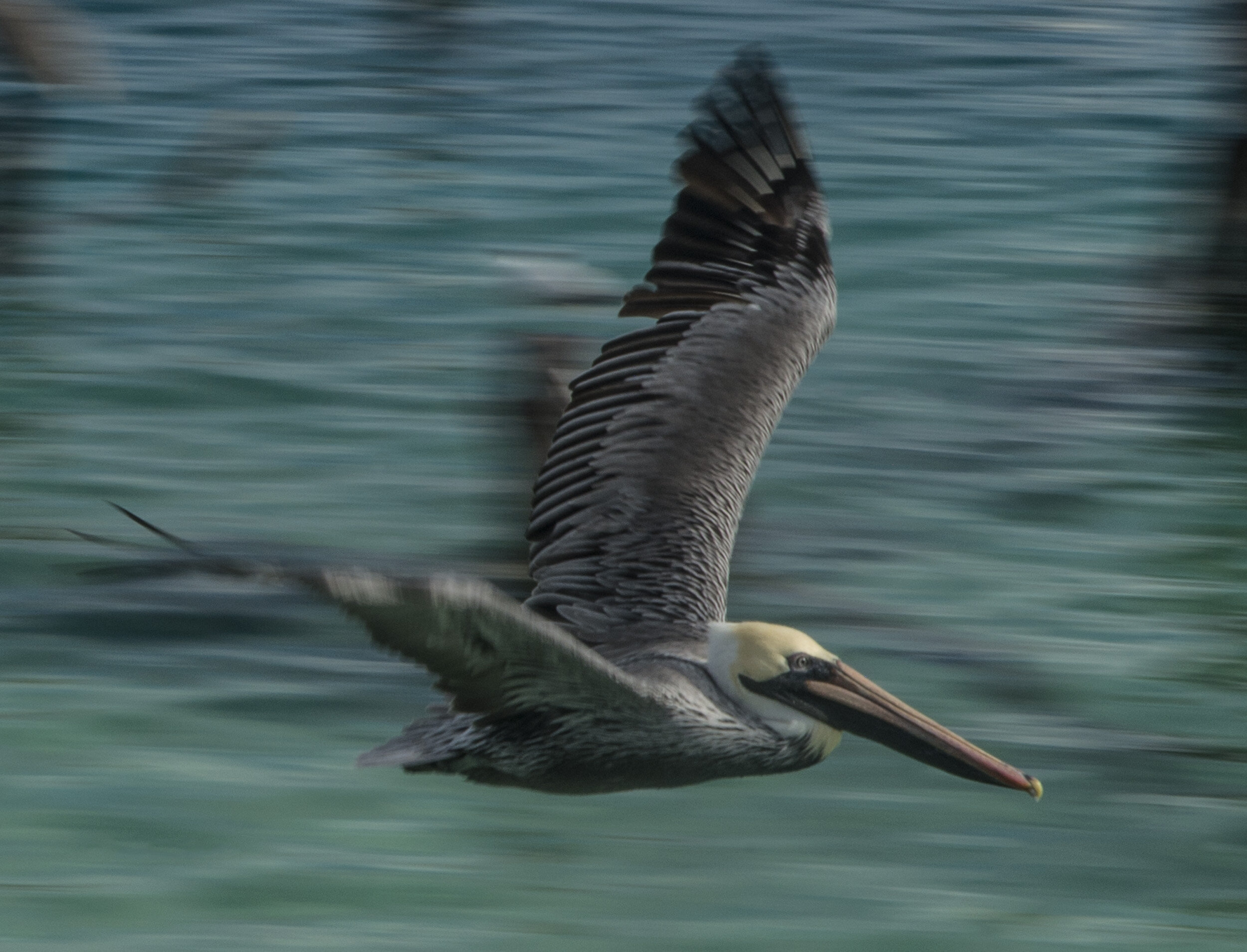
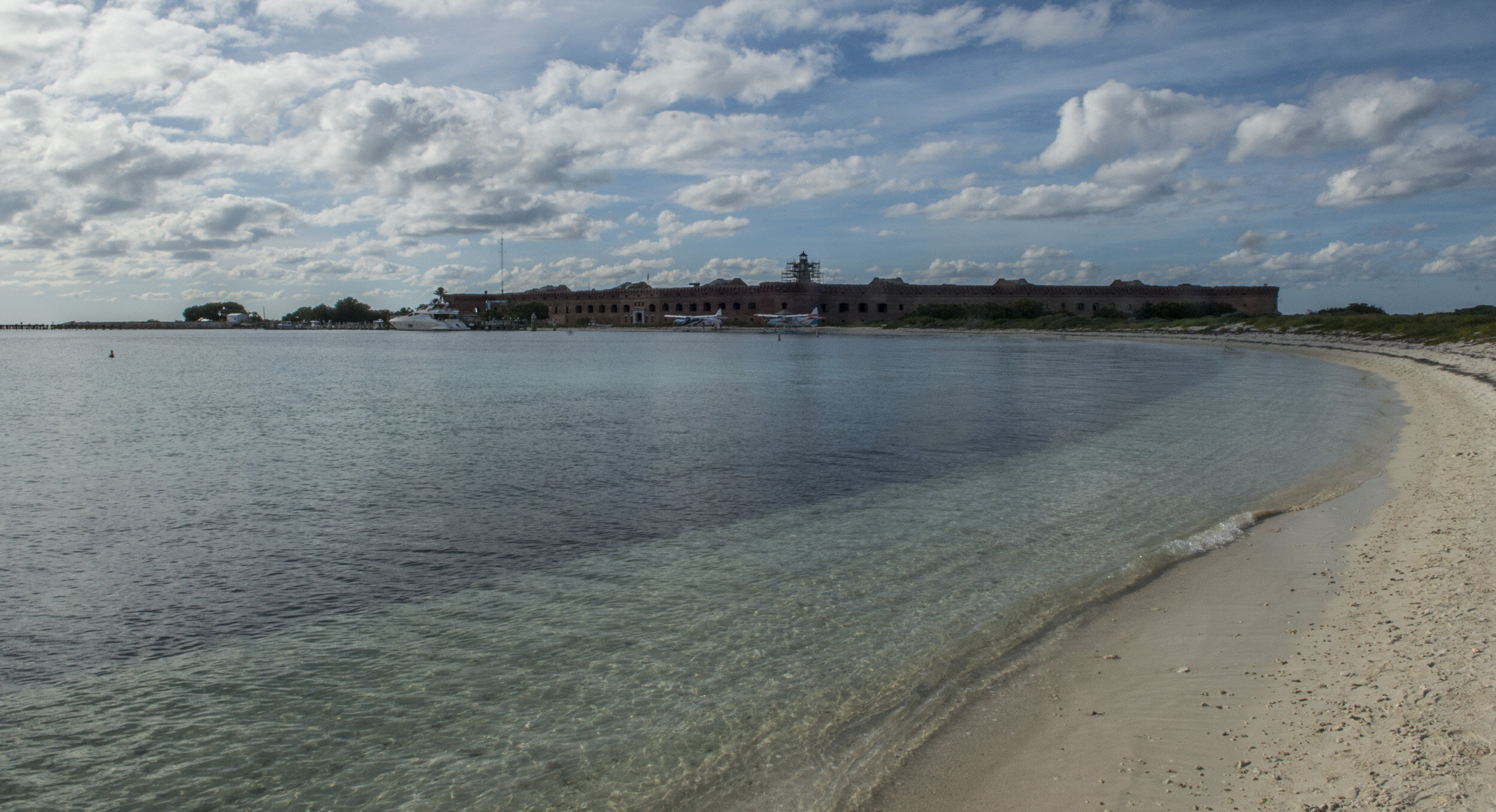
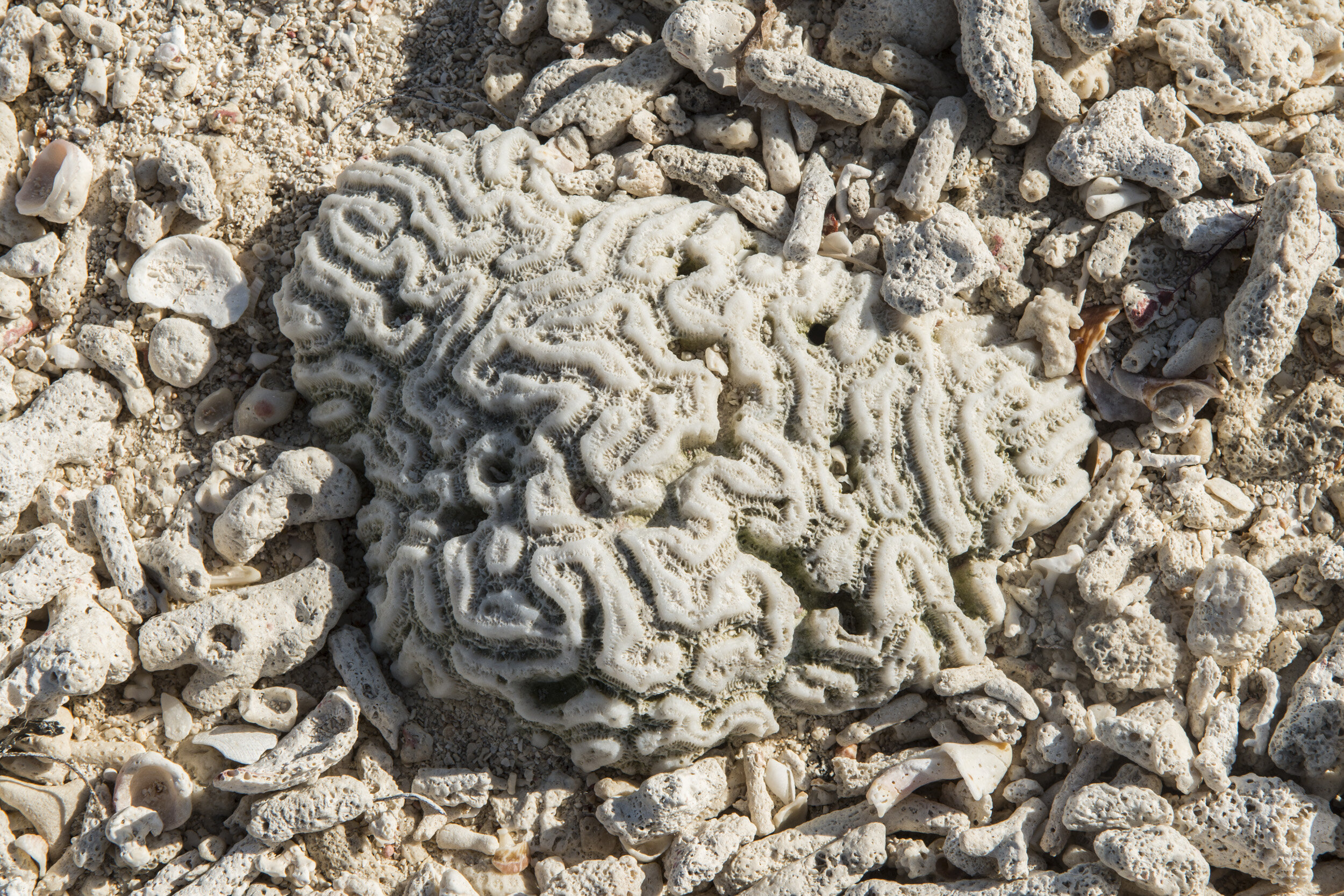
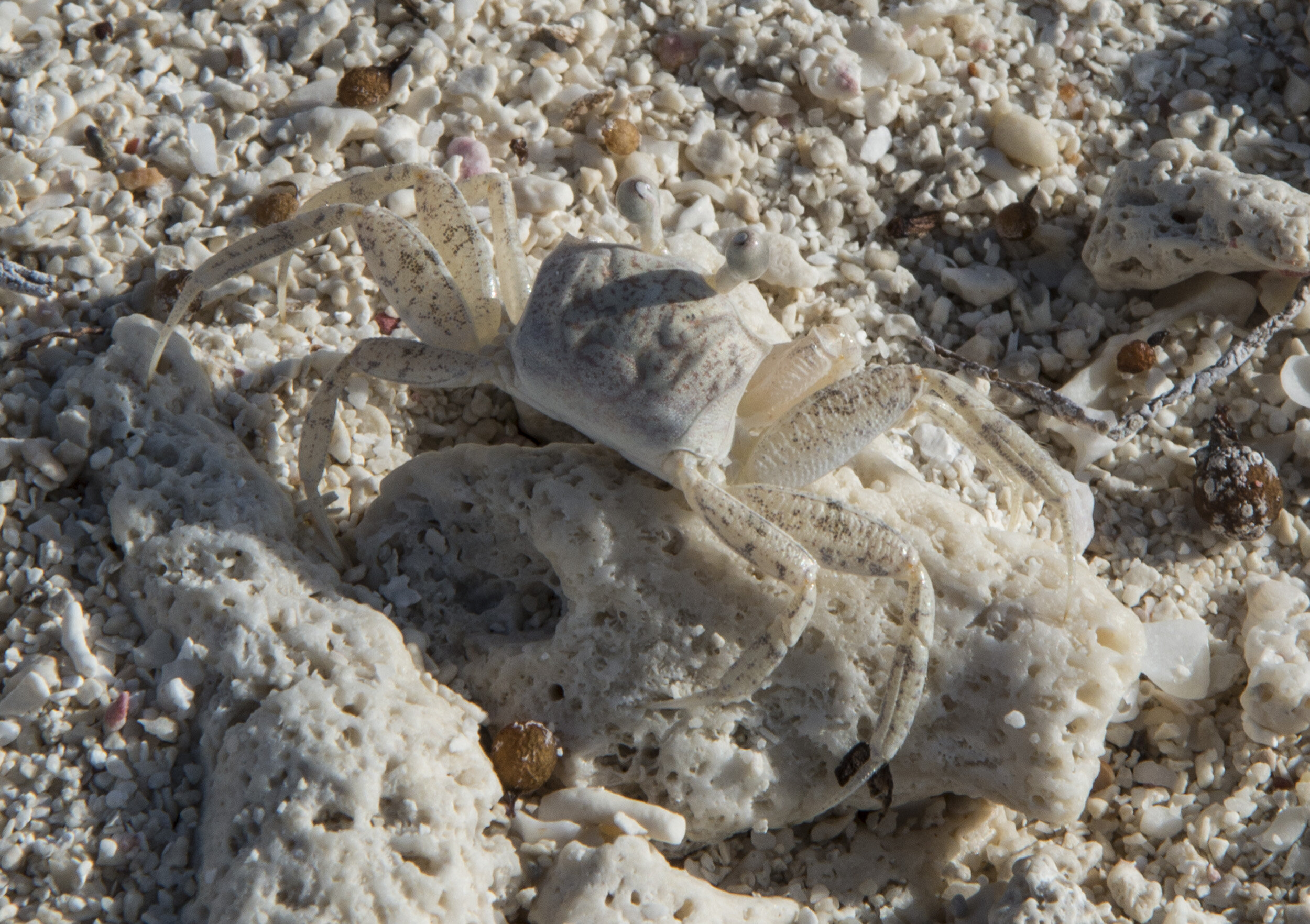
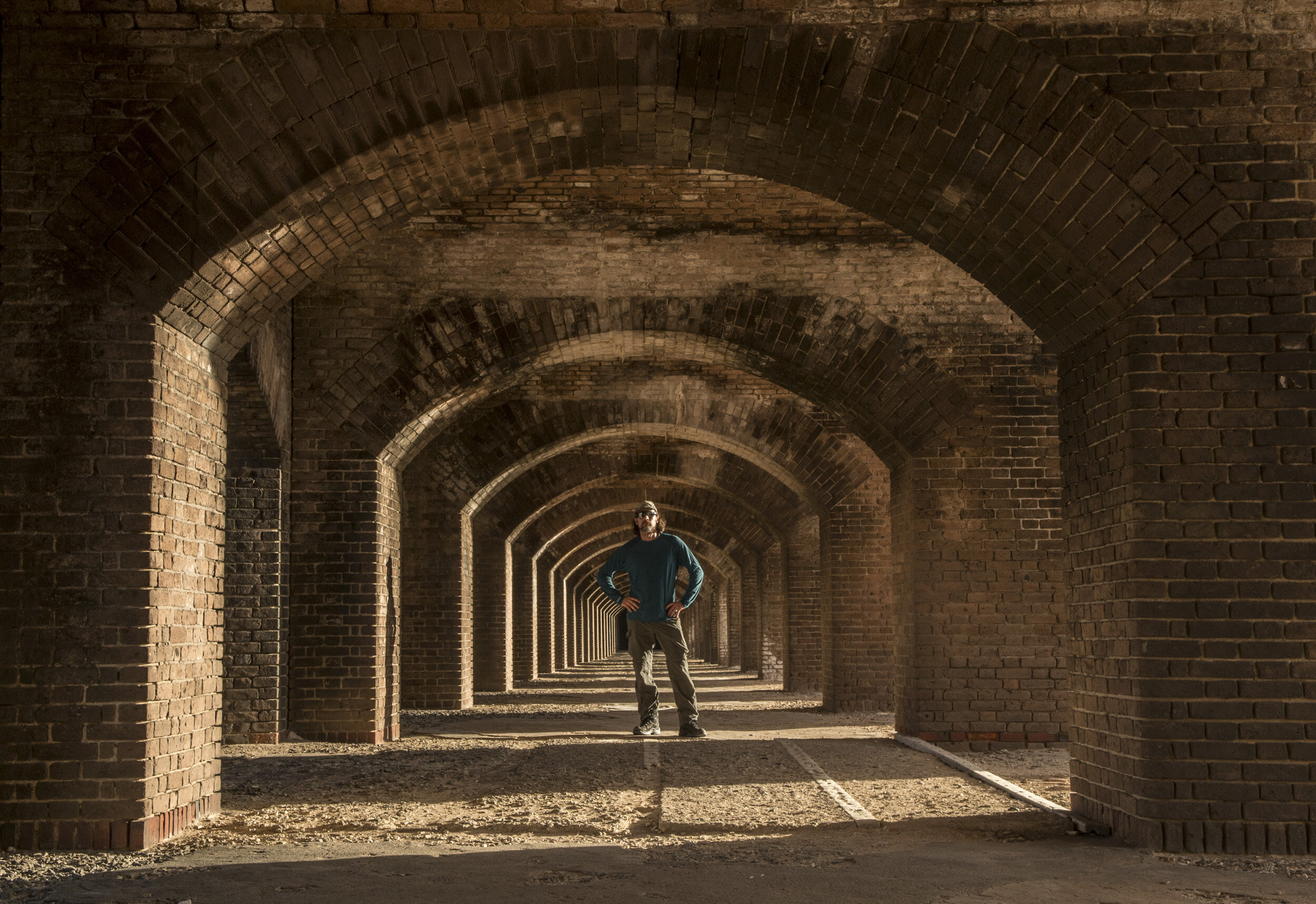
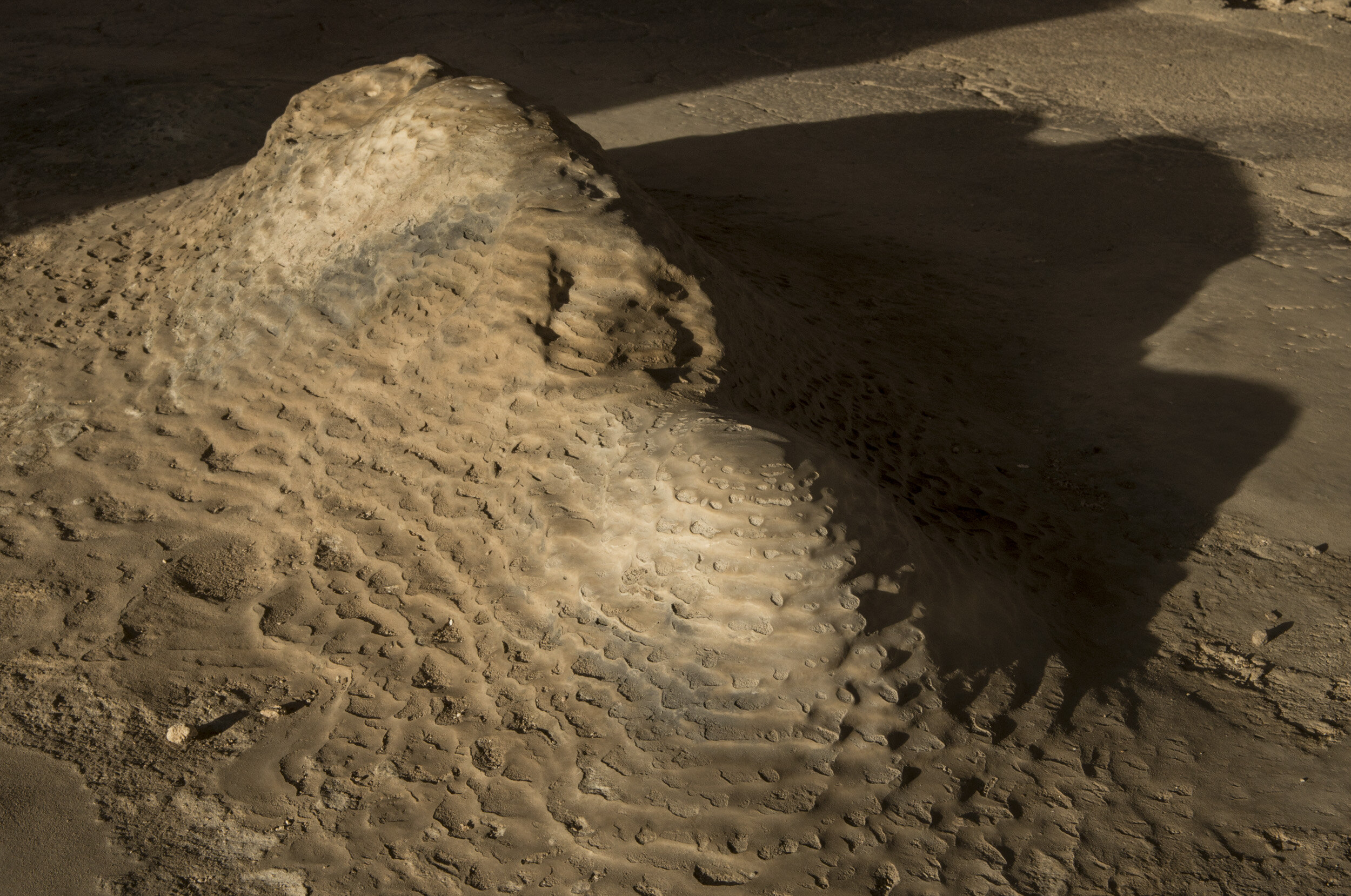
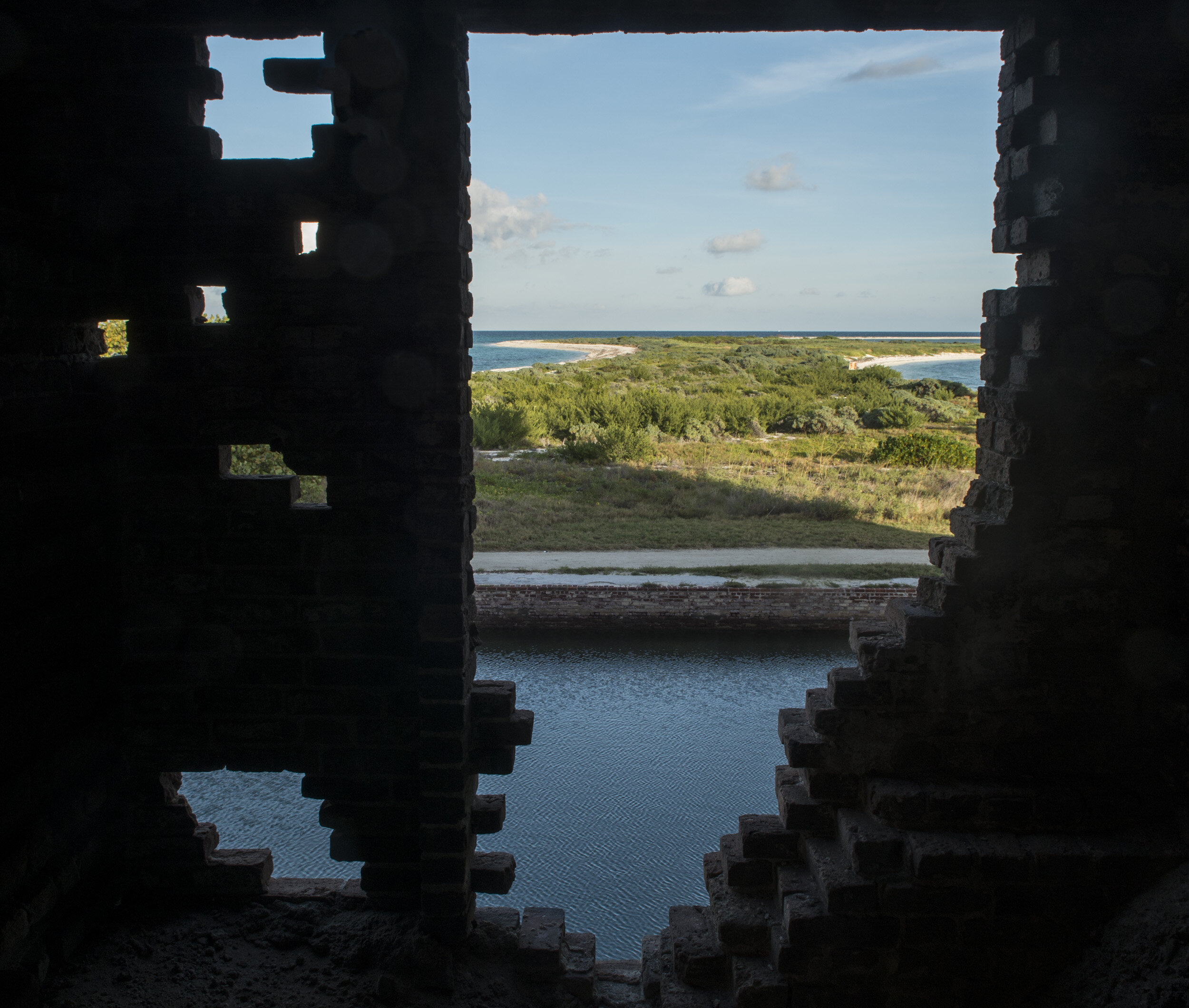
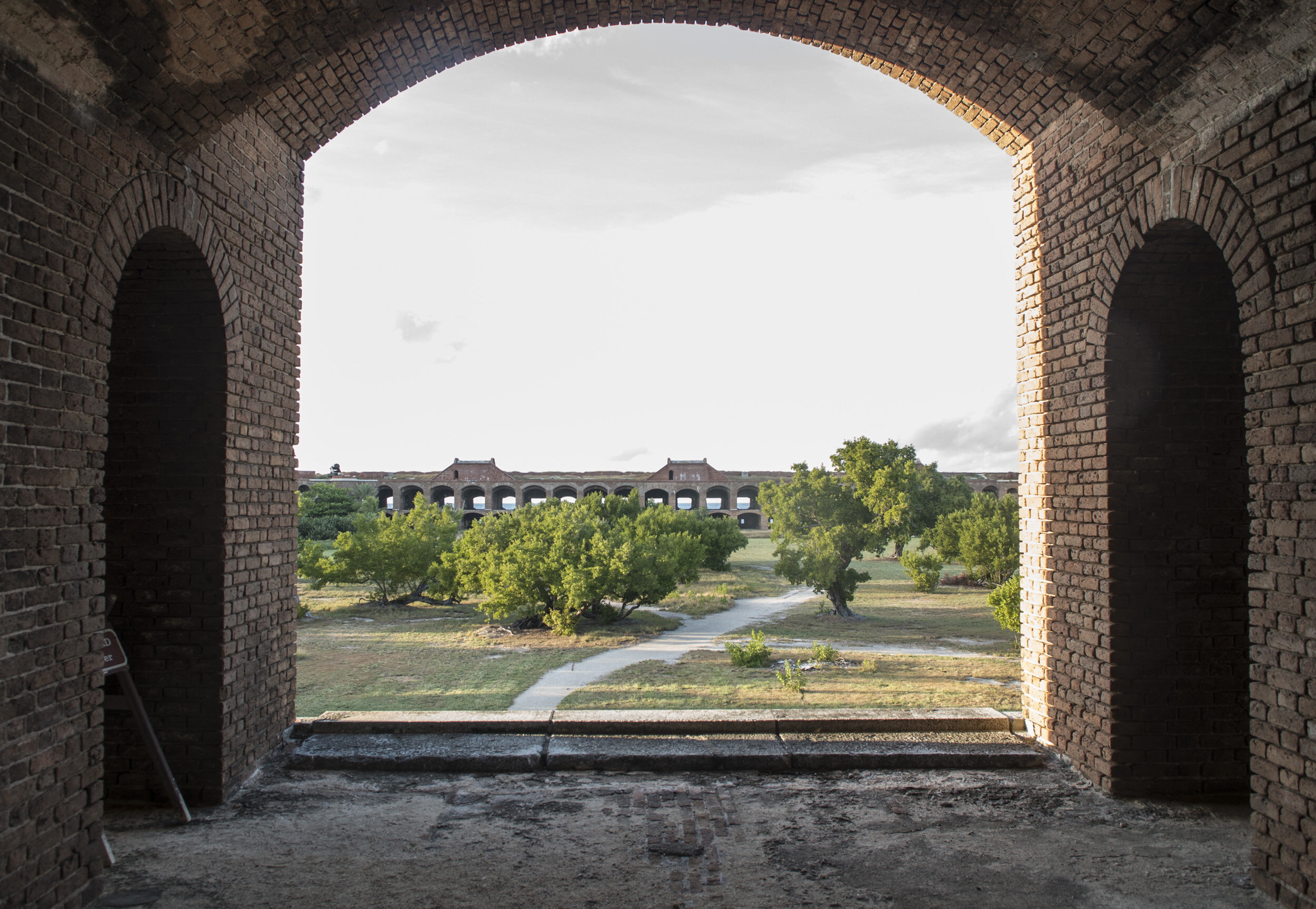
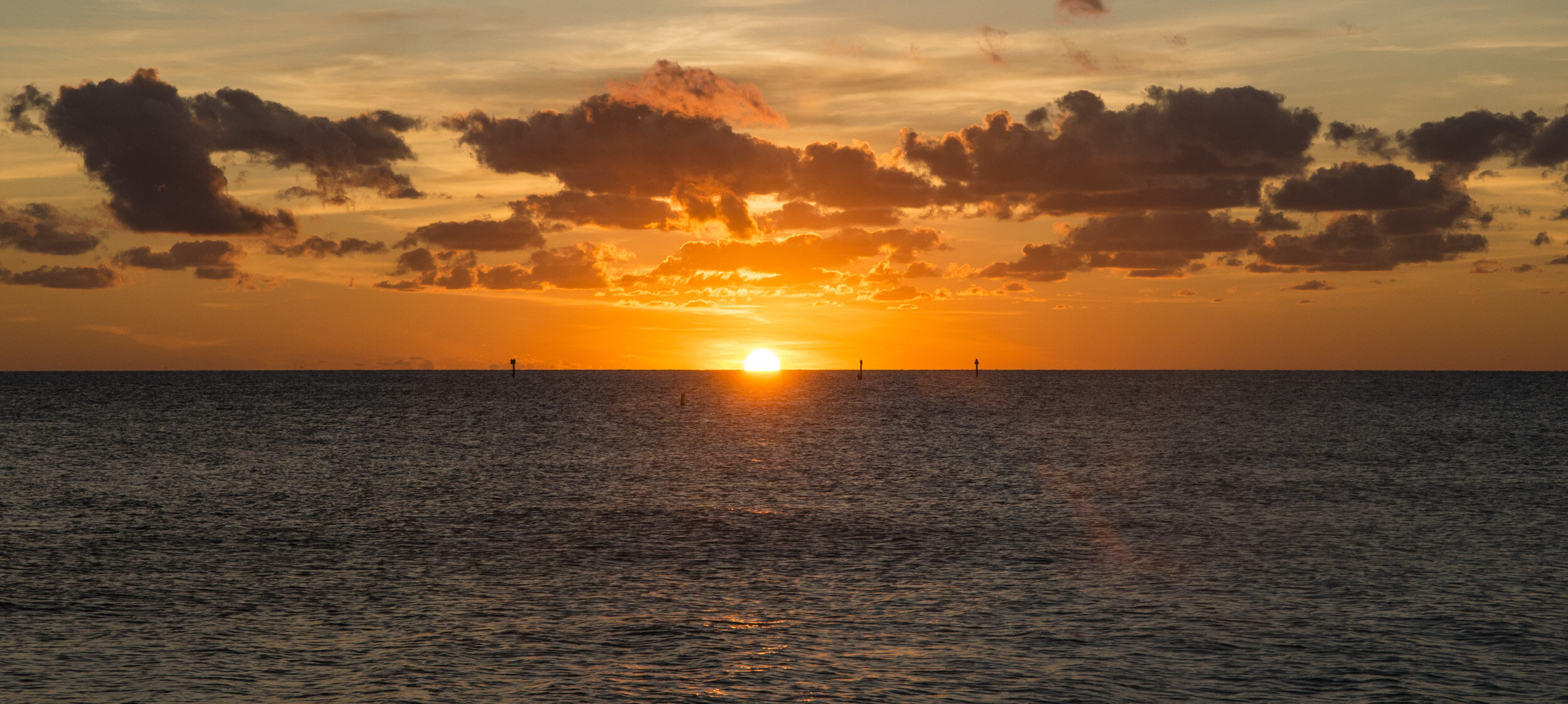
DAY TWO: ISLAND TIME
Pelican on early morning fishing patrol
I was up before the sun, and headed for the dock to watch the sunrise. It gets quite cool overnight and I actually wore my puffy jacket until the sun came up. As I stood there waiting, a couple pelicans were flying about. One would land on a pylon and use it as a high ground to look for fish. When they spot a fish, they would step off the pylon and like a guided missile plunge head first into the water. A few seconds later they would bob back up to the surface. Sometimes with a fish, sometimes without.
After breakfast (cold oatmeal) I took a stroll around the fort. I wish I could’ve camped in the fort but that’s is not allowed. It’s only open during daylight hours. But still, having this available to just walk around in was amazing. Especially before the day trippers showed up. I literally had the whole fort to my self. I headed for the roof for one last scouting of potential snorkel spots. The roof isn’t a normal roof. It’s more like a beach. Covered in sand and crushed coral and thriving with dune grasses, it was engineered as a filter for the fort’s built in water collection system.
My plan for the snorkel was to go along the moat wall from the north beach all the way to the south beach, while at one point heading out from the wall to a seagrass bed I saw that I wanted to try to get some pictures of. One seagrass bed had a clearing in it and I wanted to go down and try to shoot a panorama from the middle of it. I gathered my gear and headed for the north beach. The day before I asked at the snorkel gear stand on the dock if I could borrow an inflatable vest for my stay and they happily obliged (the stand is only open when the YFIII is docked and offers complimentary snorkel gear). I had brought my own snorkel gear.
This would also be first time I would use a new piece of gear I had just got; a DiCaPaC dry bag for my DSLR camera. Aside from a leak test I did at home I had never used it before. I was using it with my Nikon D200, which I hadn’t used in a while since upgrading to the D800. If the bag failed, I didn’t want to use my good camera. I put it in the bag and pointed it at the fort for a test fire to make sure I could find the button though the bag. It worked fine. Then I dipped it under the water to try it and… nothing. Above the water I took another picture. Below the water and nothing again. I soon figured out that the autofocus wasn’t working underwater. There just wasn’t enough contrast to lock onto. I would have to make some adjustments. I tried to get as much water off my hands as possible before opening the bag. I reached in and turned off the autofocus and the set the focus to a distance I thought would cover most situations, with a small f-stop to extend the depth of field. Another test and it was firing consistently underwater. I walked into the surf and headed off.
It was taking me a while to settle in. It had been a while I’d been in the water. I hadn’t thought to shave before I came here and my mustache was causing a leak along the bottom of my mask. I had to clear my mask quite often to keep the water out. The seagrass bed with the opening in it was one of my first stops, about 20 yards out between bastions A and B. I swam out over the top of it I was wearing a weight belt with about 15 lbs on it. Once I deflated the vest I would sink fairly easy to the bottom (8-10 feet) and I would take my panorama. Well, I quickly learned I would not make a good free diver. I hit the bottom, snapped off a couple shots, and quickly felt like I needed to take a breath. I bolted for the surface, spit out my snorkel, and gasped for air while trying to keep my head above the small but present waves. I wasn’t freaking out, but I did feel slightly panicked. I had wanted to do this with scuba gear, but the YFIII doesn’t allow the compressed air canisters onboard, I wasn’t really comfortable trying again, so I continued snorkeling along the moat wall.
Fish and coral along the moat wall
The moat wall has become an artificial reef. Various species of coral can be observed growing on the wall and the loose bricks and rubble on the bottom. There were also several species of tropical fish darting about. Eventually I came to the section between the breaks in the moat wall where the structure has crumbled. Nothing is vastly different in this section compared to the rest of the moat wall, but still, snorkeling is the only way to see it.
As I approached Bastion E, there were two other campers walking the moat wall. They told me they had just seen a shark not far off the wall. This might freak out some people, but I was curious and wanted to see a shark! Besides, chances were good that it was just a reef shark, which I’ve seen in the wild before and they are not aggressive. I swam out a little to look for it, but never did see it.
I rounded the corner of Bastion E and finally made it to South Beach. Not a bad snorkel. It would’ve been much more comfortable had I shaved so I didn’t have to worry about my mask the whole time. The dry bag for my camera worked great, I just wish I could’ve utilized it the way I wanted. The only water that got in it was a few drops from when I was fiddling with the autofocus. I wiped the camera off and left the bag open to dry out.
When I talk to people about staying in the park, this next bit is the first tip that I give them. Do your snorkeling in the morning and time it so you’re out of the water between 9:00 and 10:00. The reason is two fold. One, you’ll have the water all to yourself. I did not see any other snorkelers the whole way around the fort. Once the day trippers arrive there could be a few dozen people in the water at any given time. Which leads me to my second reason. When the YFIII arrives at 10:00 and the passengers finish disembarking, you have access to the onboard showers to rinse off all the salt water. When they said ‘hot showers’ I figured they just meant not cold, but these were legit hot showers. Apparently the water is heated by the engines on the way to the park. It’s not quite like being at home as they’re out in the open on the aft deck of the ship, so I kept my trunks on. You also have to actively hold down a chain to keep the water flowing and you can’t use any soap or shampoo. They’re rinse off only, but holy cow did those showers feel good.
Watching the world go by
After exploring the roof of the fort some more I had lunch on the YFIII, and wound up sitting with my neighbors from the campground, sharing another meal. Then it was back into the fort… again (it’s a recurring theme). I found a window in a quiet corner on the second level in Bastion F. I just sat there, writing in my notebook, watching the occasional day tripper walk by on the moat wall or snorkeling in the water, and just generally watching the world go by. My internal clock was definitely set to island time.
Not long after that it was time for the ferry to head back to Key West. I went up on the roof to watch it depart. And like that, the island was mine again.
I should note that not all day trippers come and go on the YFIII. There are also seaplanes that bring day trippers to the park. You can’t take gear on the seaplanes, so campers must take the YFIII. There are two flights a day carrying 6-8 tourists per flight. The first flight lands in the morning before the ferry arrives and the second flight departs a few hours after the ferry departs. But so few people are barely noticed. I found they tended to sit at a picnic table by the dock drinking wine. While the park is generally very quiet and peaceful, the seaplanes are really loud. It only lasts for a minute, but when they back up onto the beach next to the dock you can hear the engine screaming from all over the island.
Then it was back out to the far side of Bush Key to do some filming of the ever present frigate birds. Sometimes a few would wander over to where I was or toward the fort and I could occasionally see them diving into the water to catch fish. See the video for more on the frigates.
Sunset from the moat wall
Photographing the sunset from the moat wall (photo by Diana Auvert)
It was time to get ready for sunset! I set up in the same spot on the moat wall by Bastion E. Even though it was only my second (and last) sunset in the park, it was already starting to feel like ritual. It’s just what you do at the end of the day, you go watch the sunset. I had the moat wall to myself this time, and it was another gorgeous sunset.
After the sun dipped below the horizon, I wandered over to the beach by the campground to watch the last vestiges of daylight before it got dark. There was a group of about five fellow campers on the beach who had the same idea. I quickly struck up a conversation with them. One of them, Diana, was also a photographer and we were trading notes and showing each other pics we’d been shooting. The whole group was super friendly, and soon enough they were passing me a bottle of bourbon and I was taking swigs out of it.
As night fell, they invited me to eat dinner with them at their campsite. Everyone in the group, except one, was Hispanic. I had been on enough camping trips with my Hispanic friends in Texas to know that the food would be amazing. Was I stereotyping? Perhaps, but I also wasn’t wrong. Appetizer was roasted yucca, sort of a fibrous potato, and grilled chorizo. I’d never had yucca before but it was pretty tasty. And chorizo is one one of my favorites, and their’s was excellent. Main course was grilled steak. I think they were the thickest steaks I’d ever had. And they made a guacamole topping for the steak which was amazing.
Several of the members were certified divers, as am I, so we traded stories of our various adventures. And of course the rats came out and were scurrying about the perimeter of the camp site. It was like a block party! We talked, laughed, drank, ate. Considering I had planned on eating my cold quinoa and tuna by myself, it turned into a great night with great people. As much as I enjoy my solo adventures, I always wind up meeting some incredible people as well. Around 9:00, although it felt like midnight, I headed back to my tent. I had an early morning to get ready for…
DAY TWO PHOTO GALLERY:
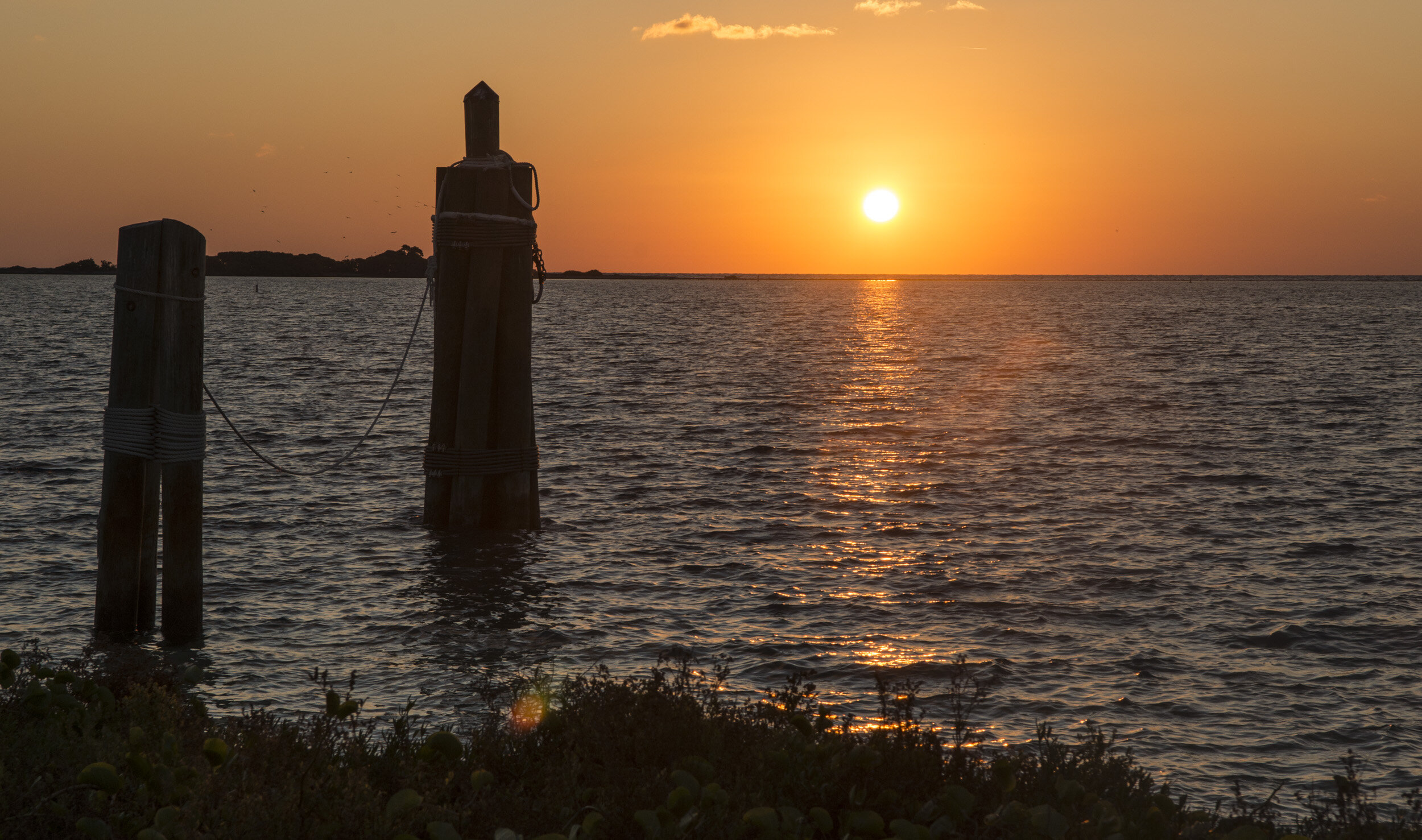
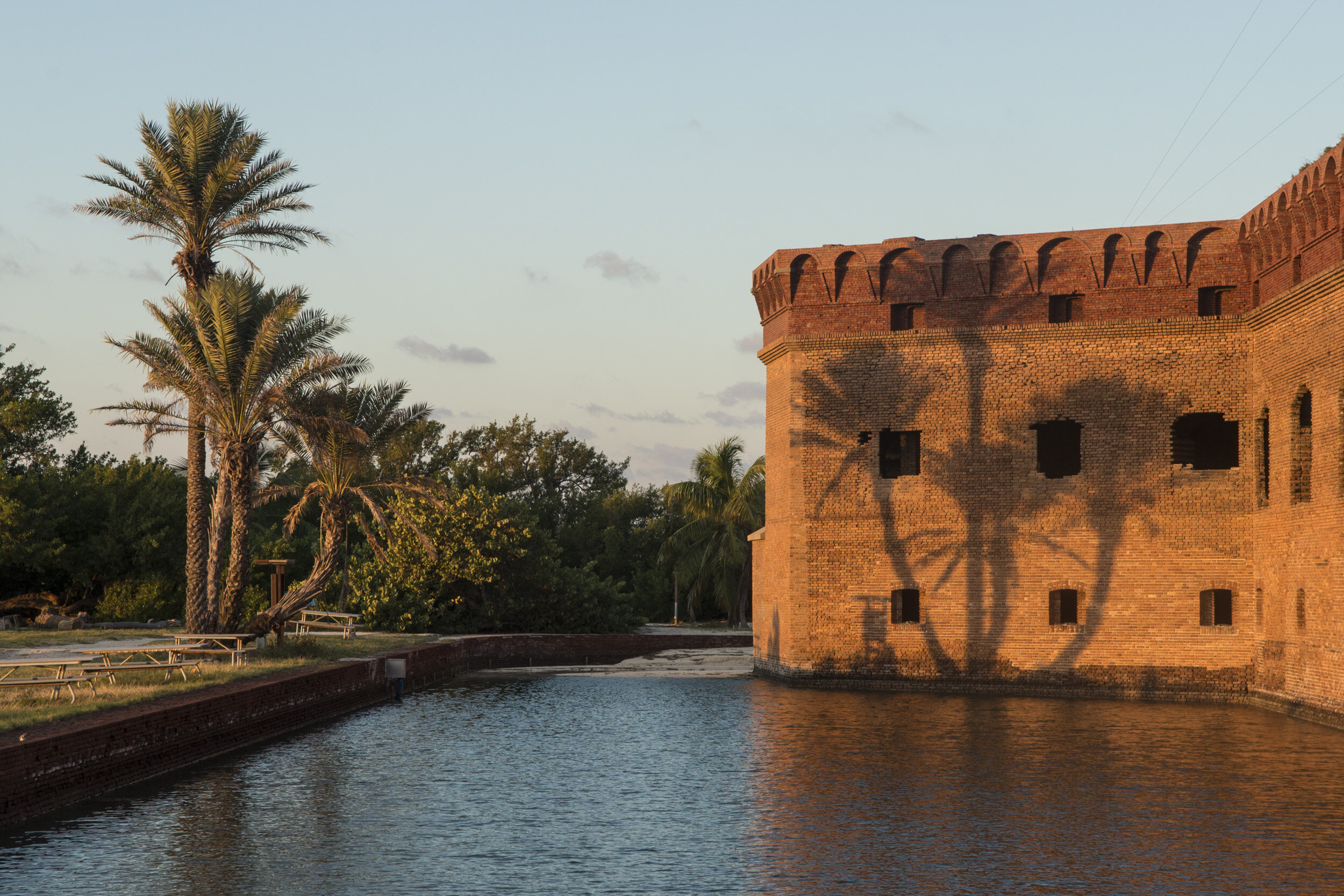
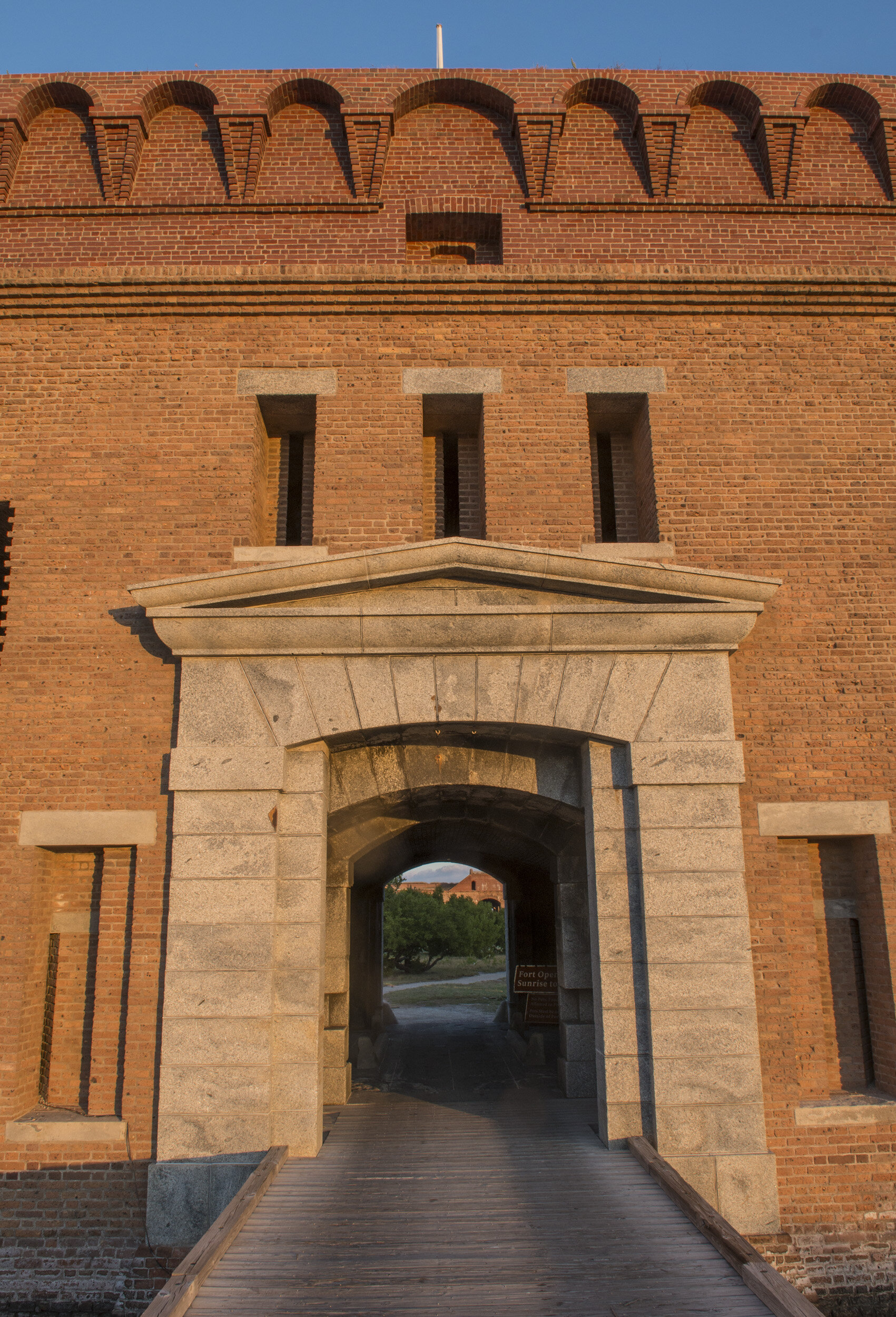
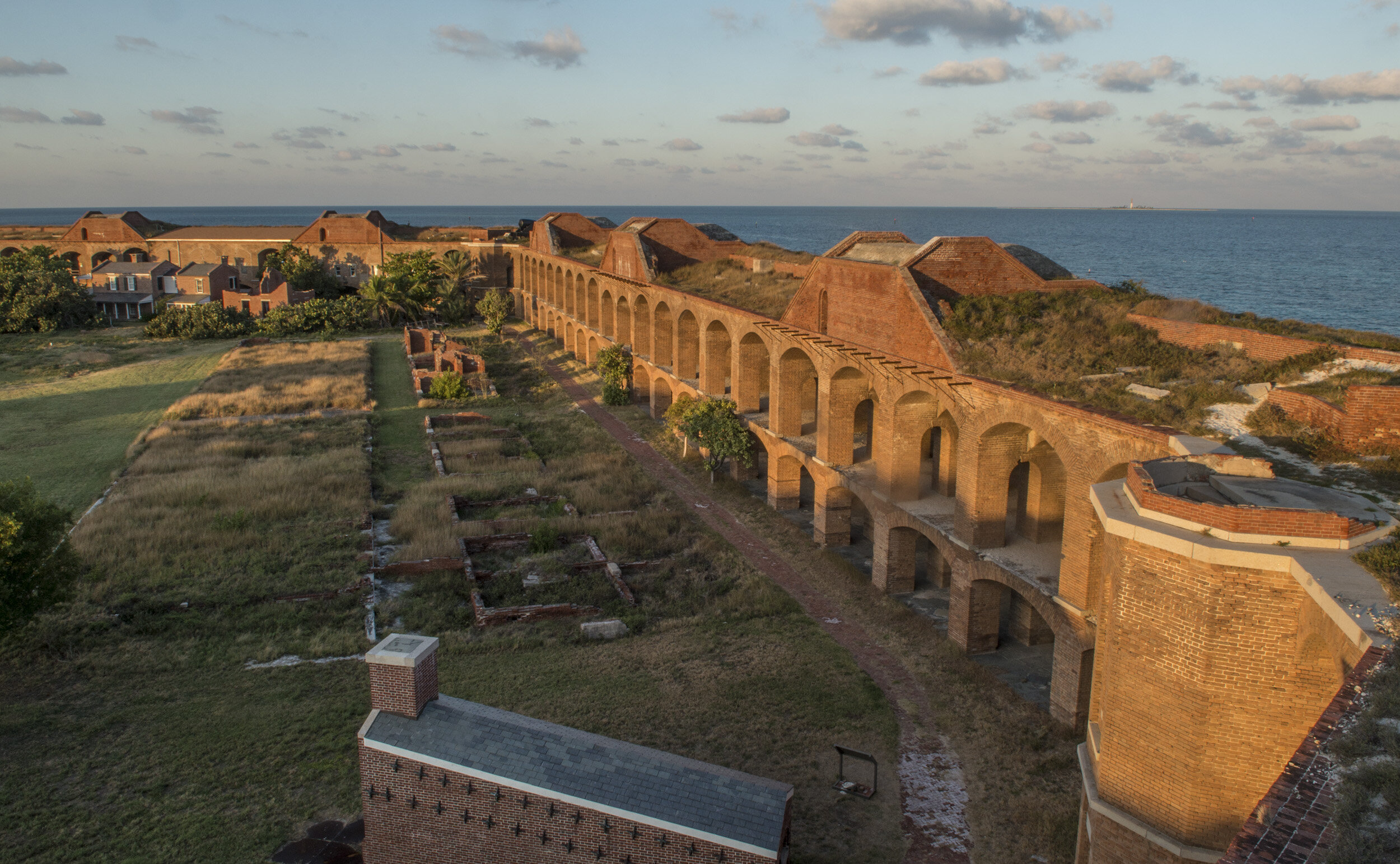
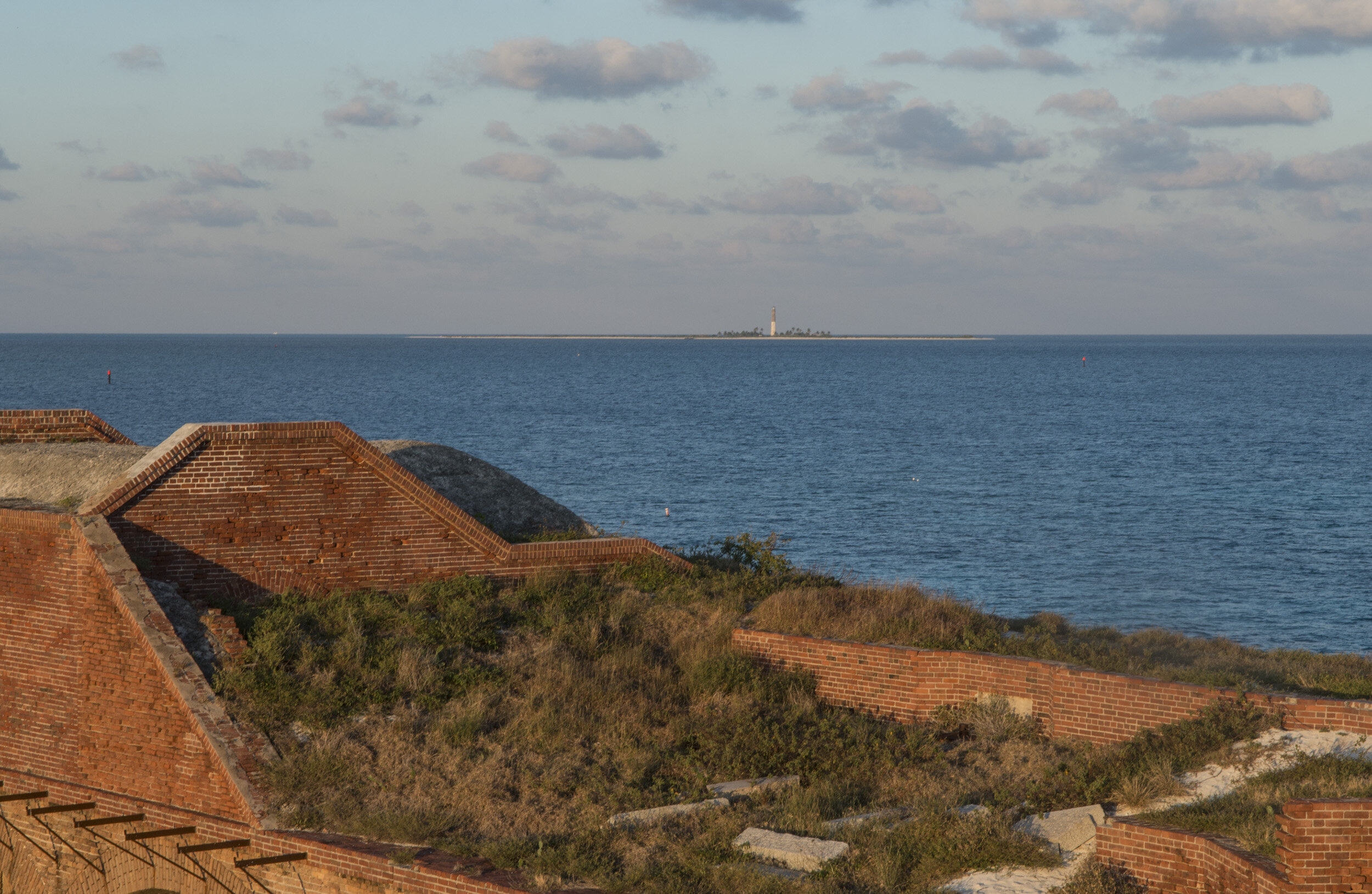
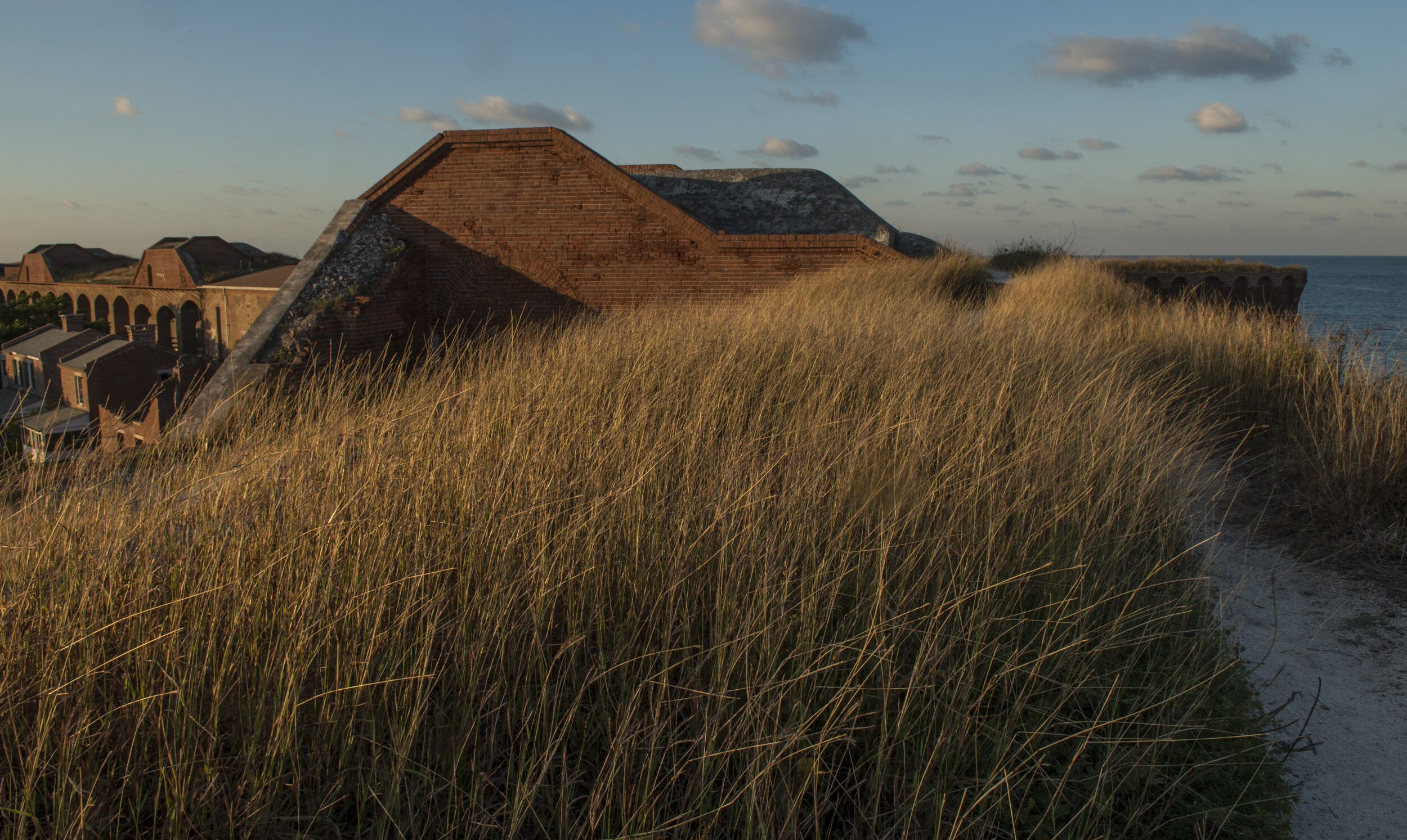

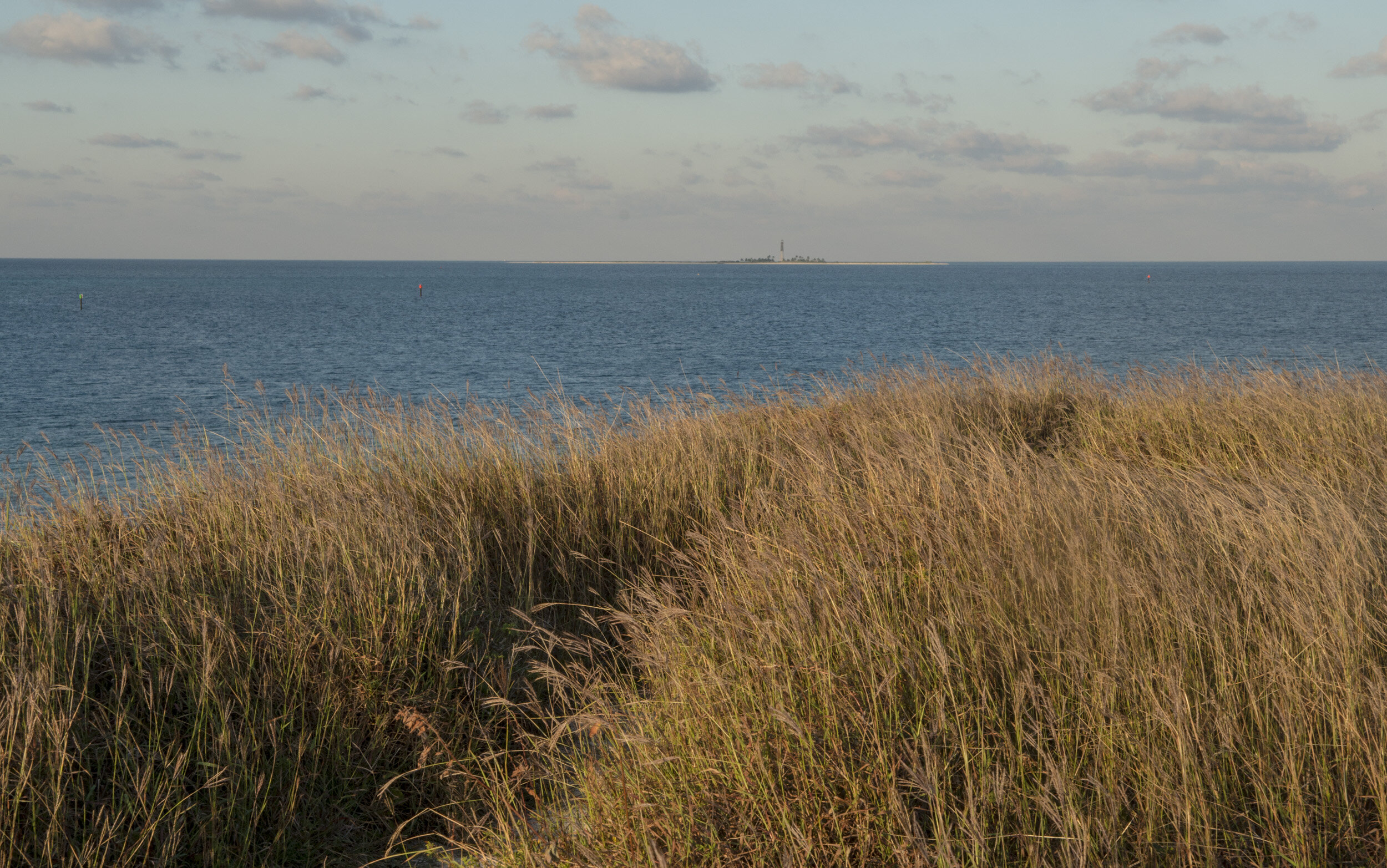
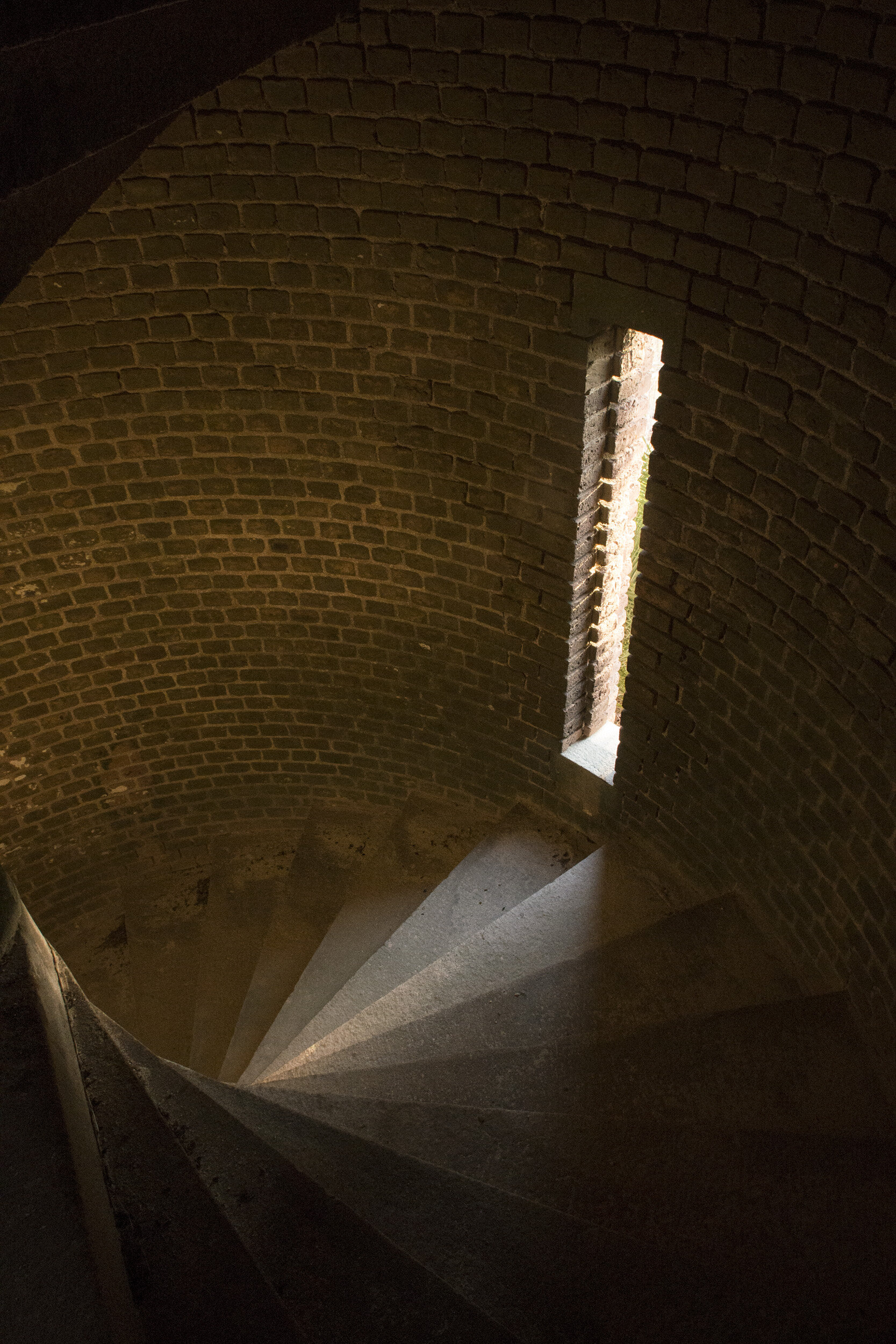
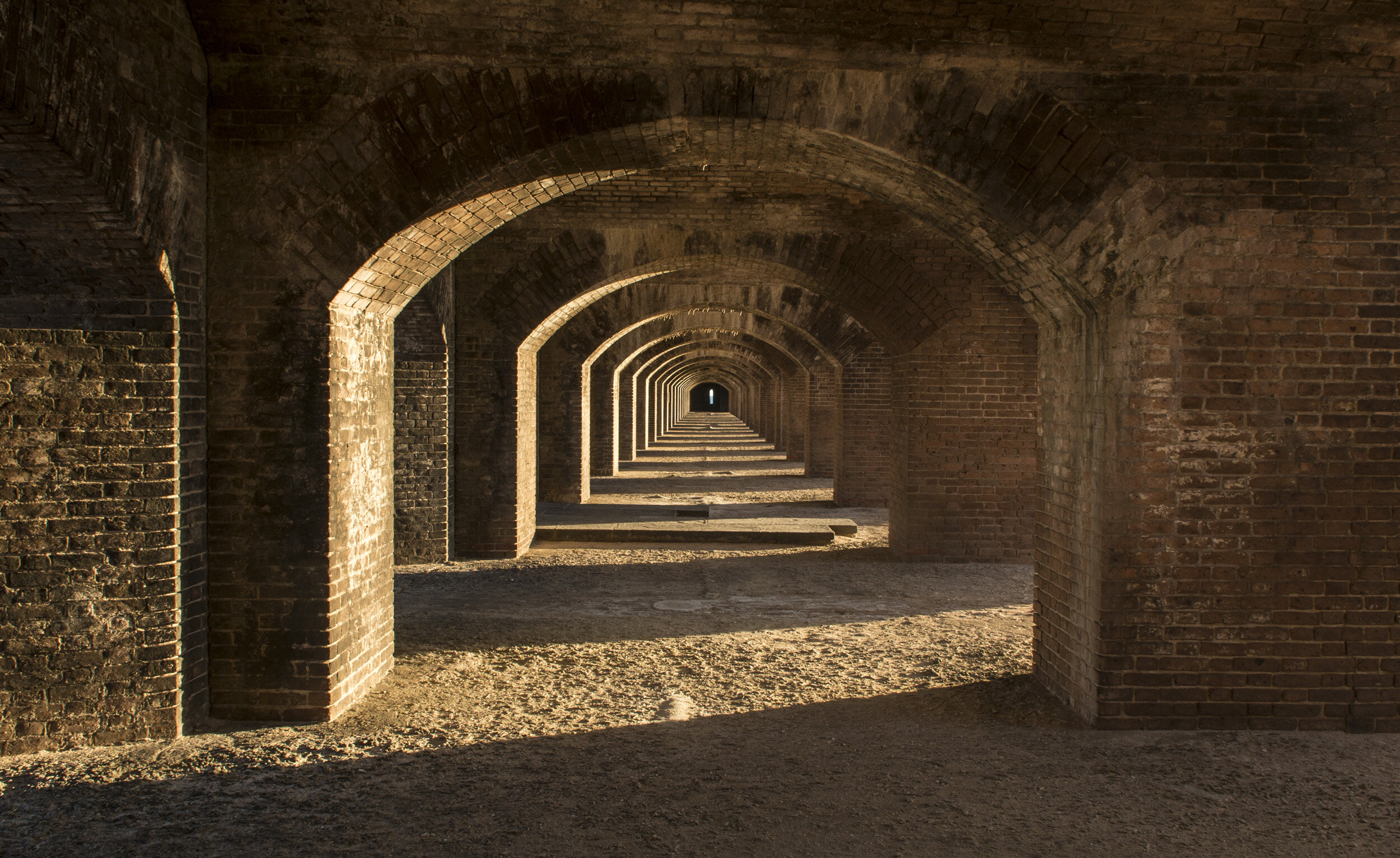
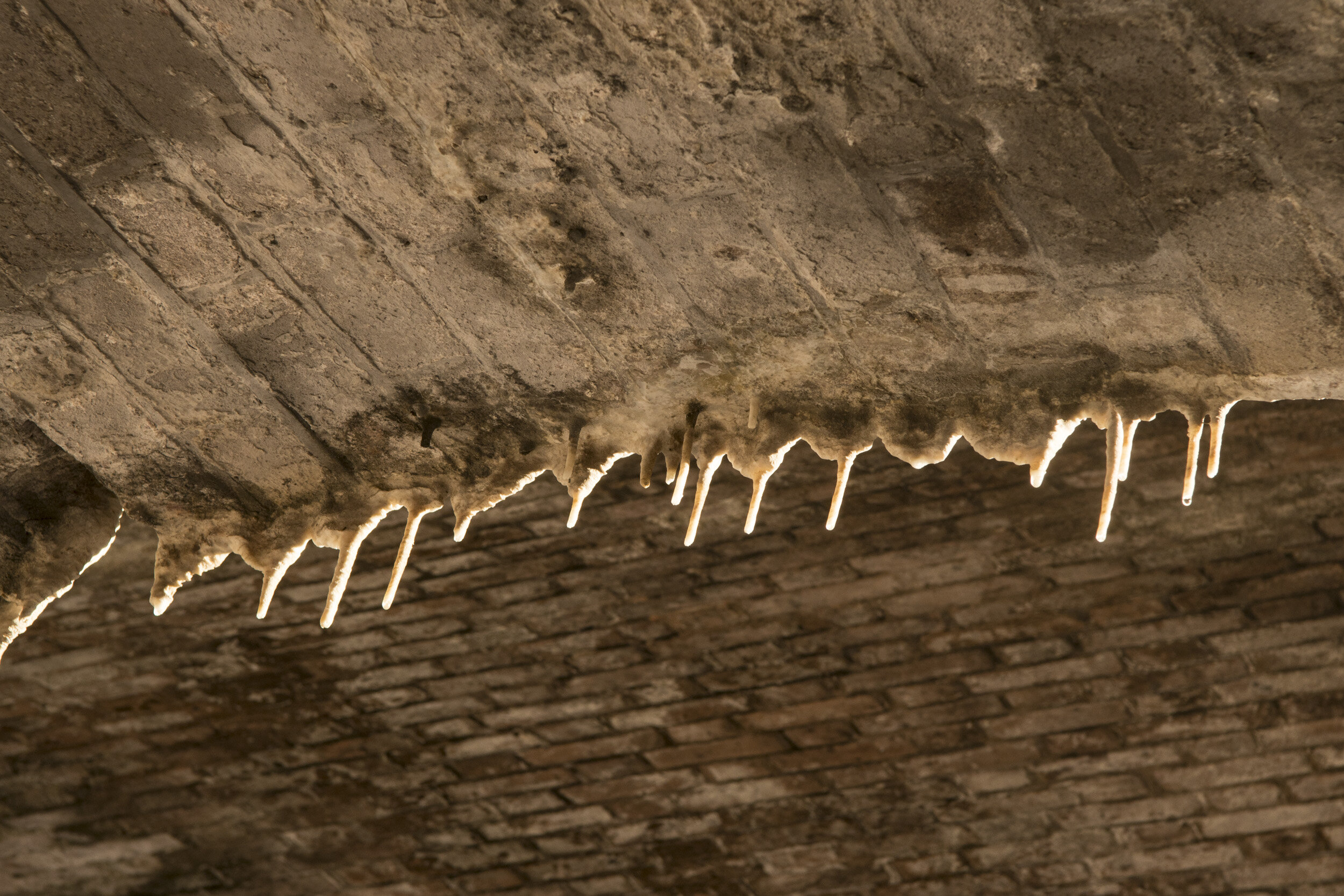

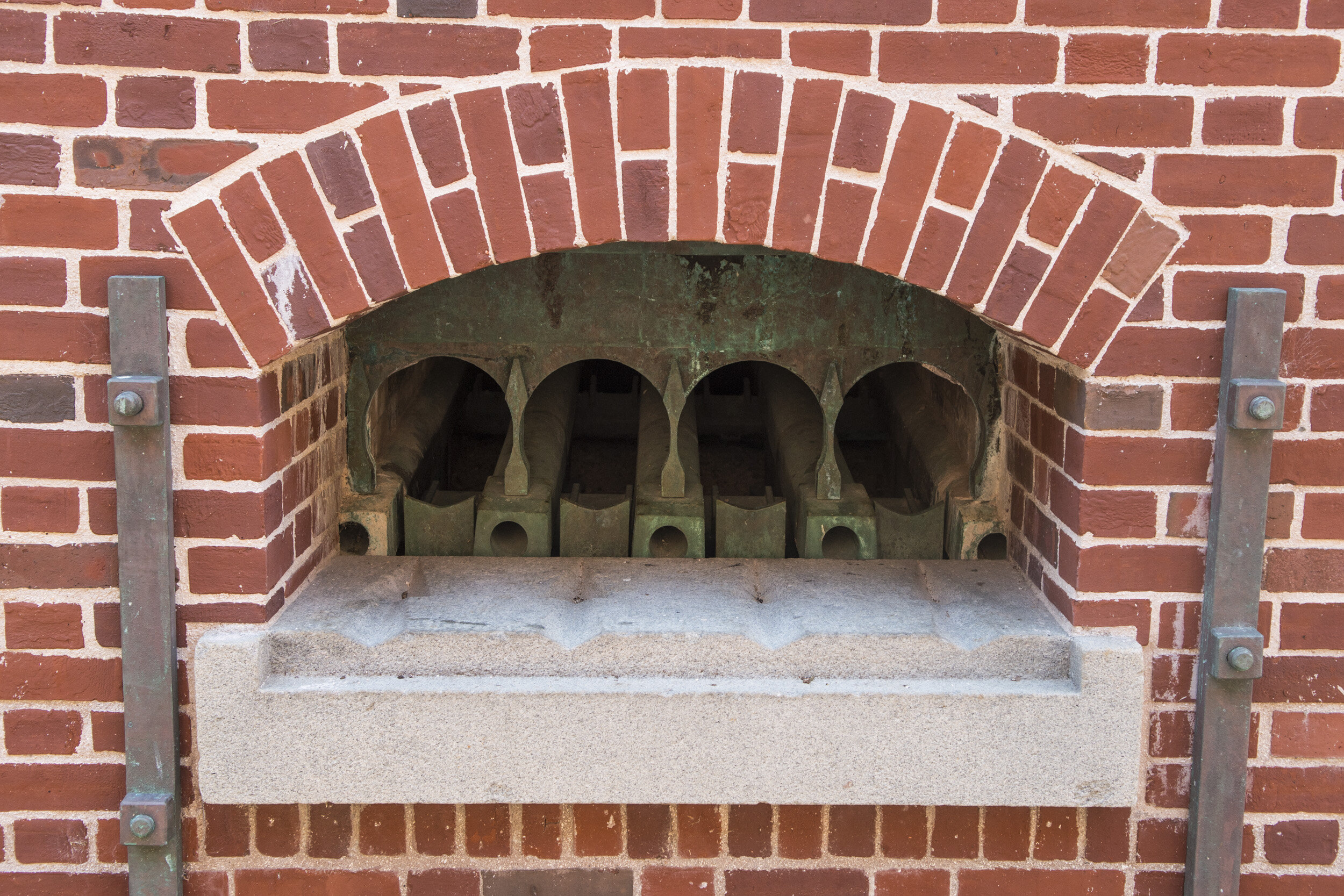

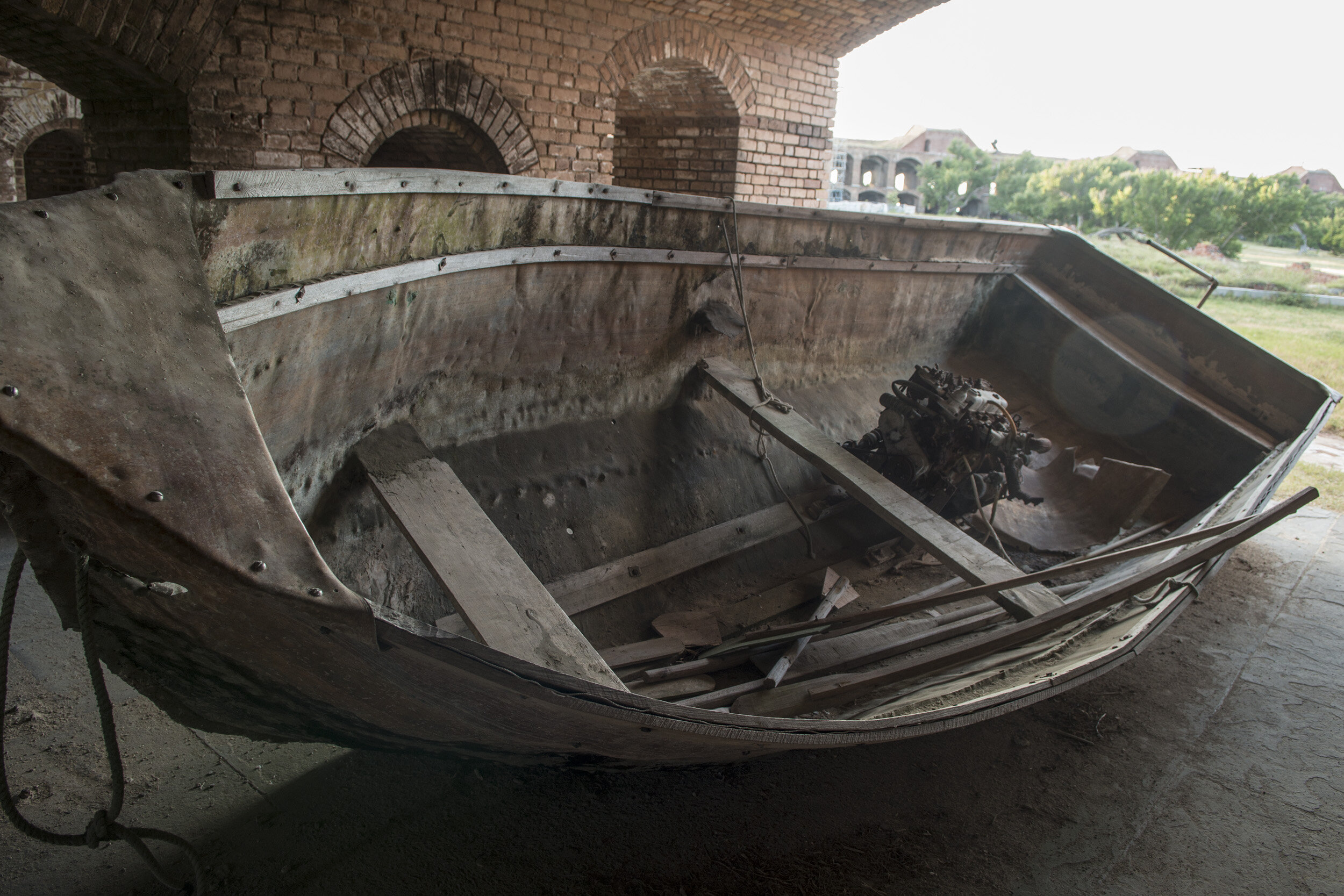
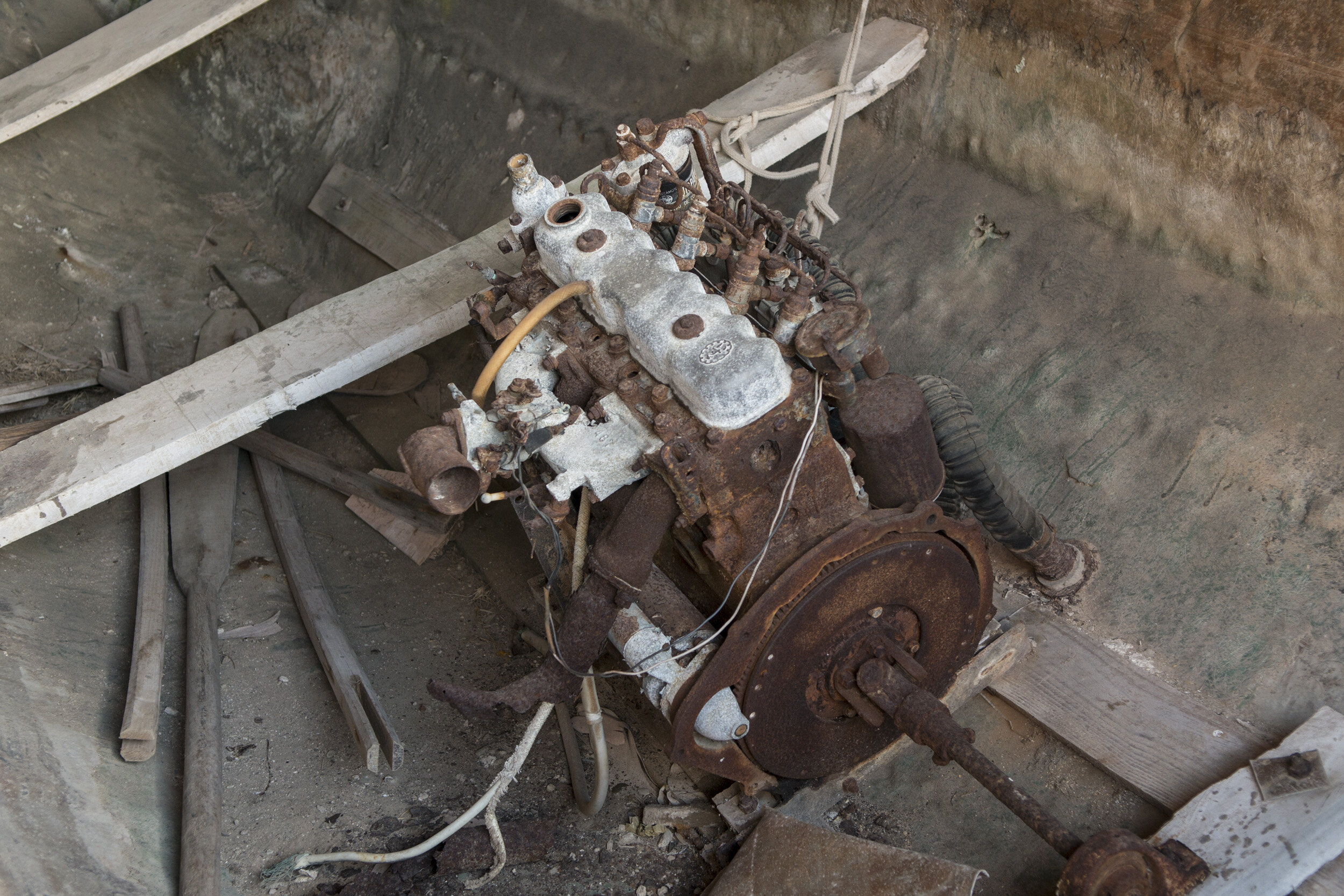
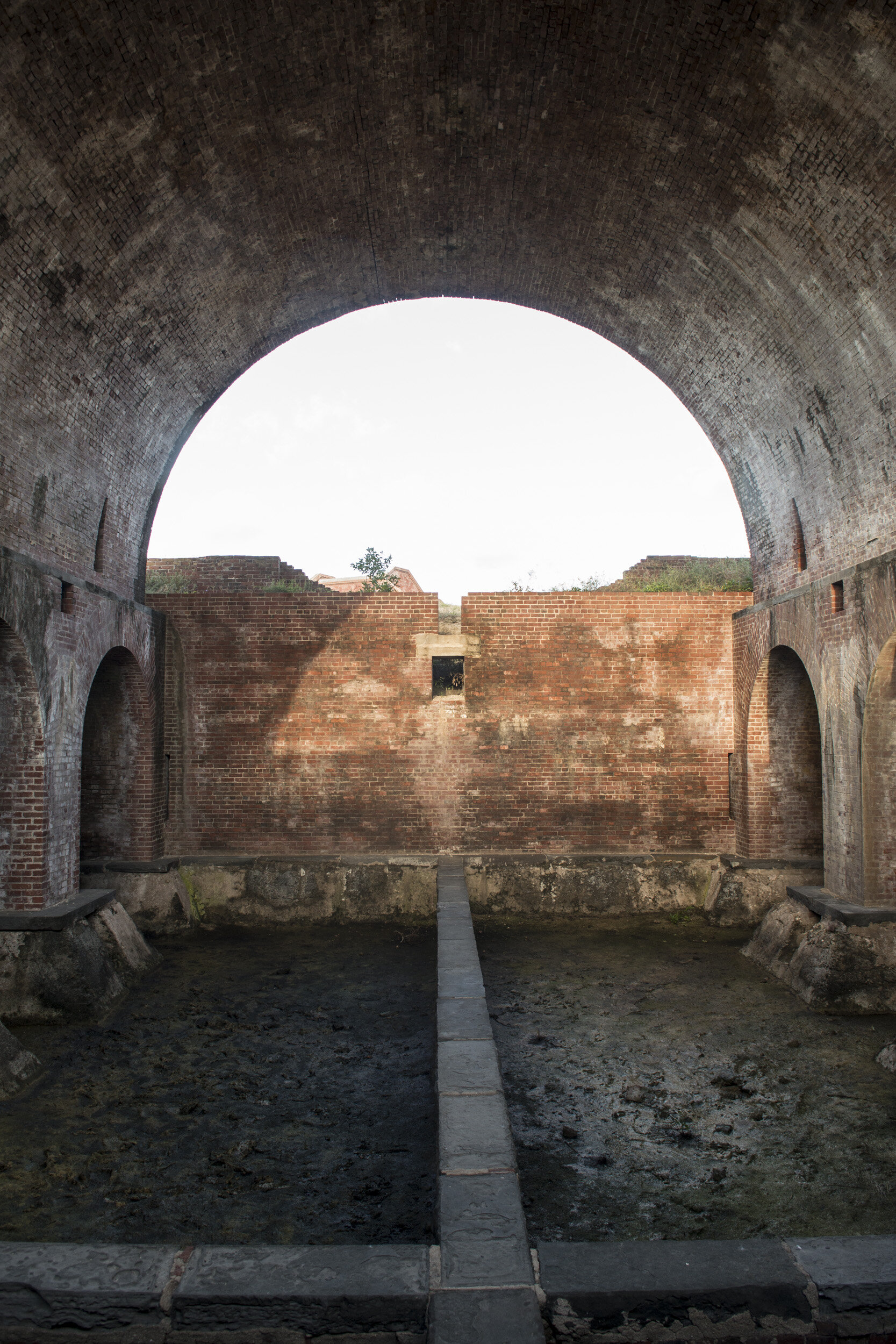
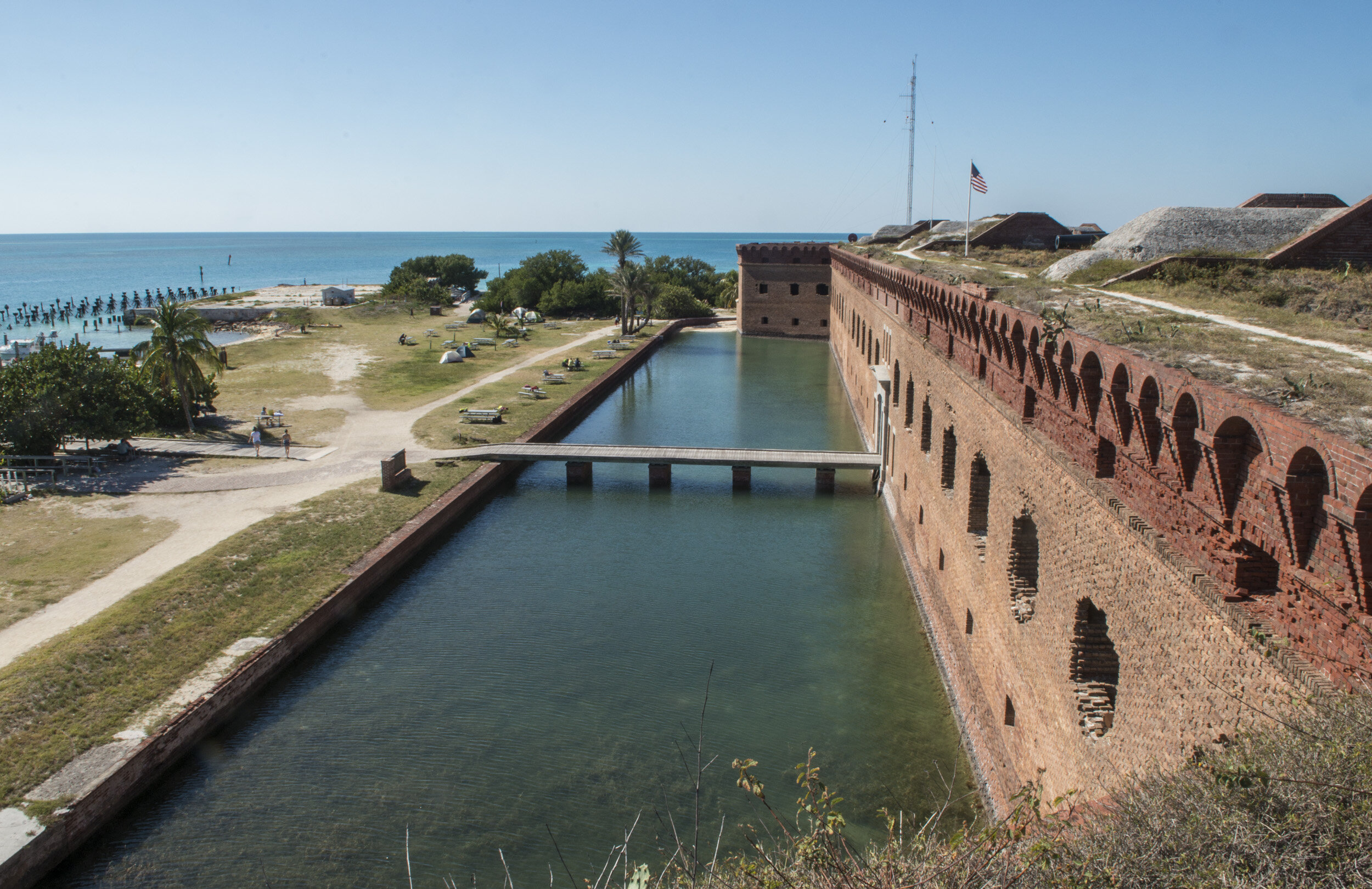
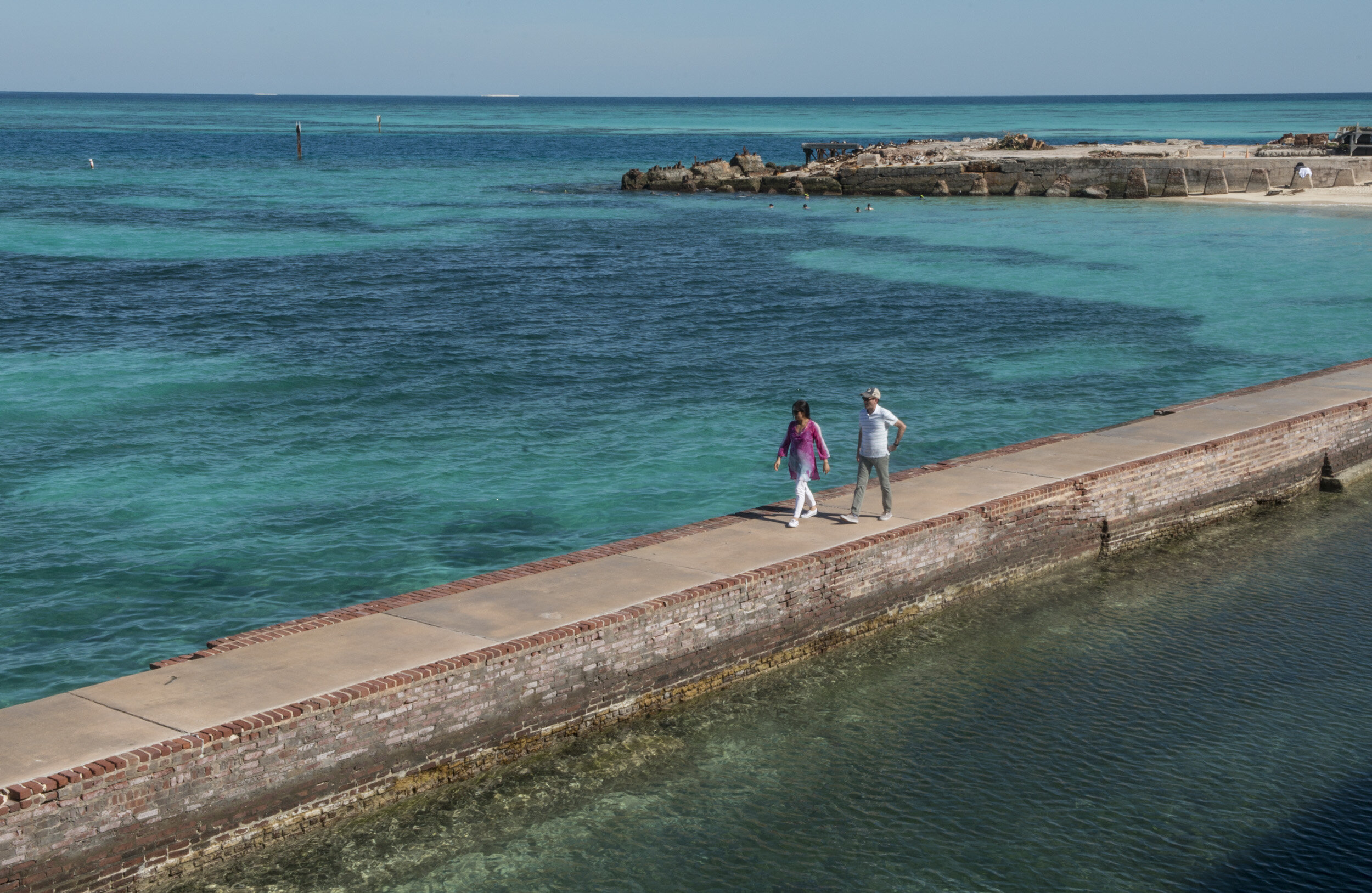
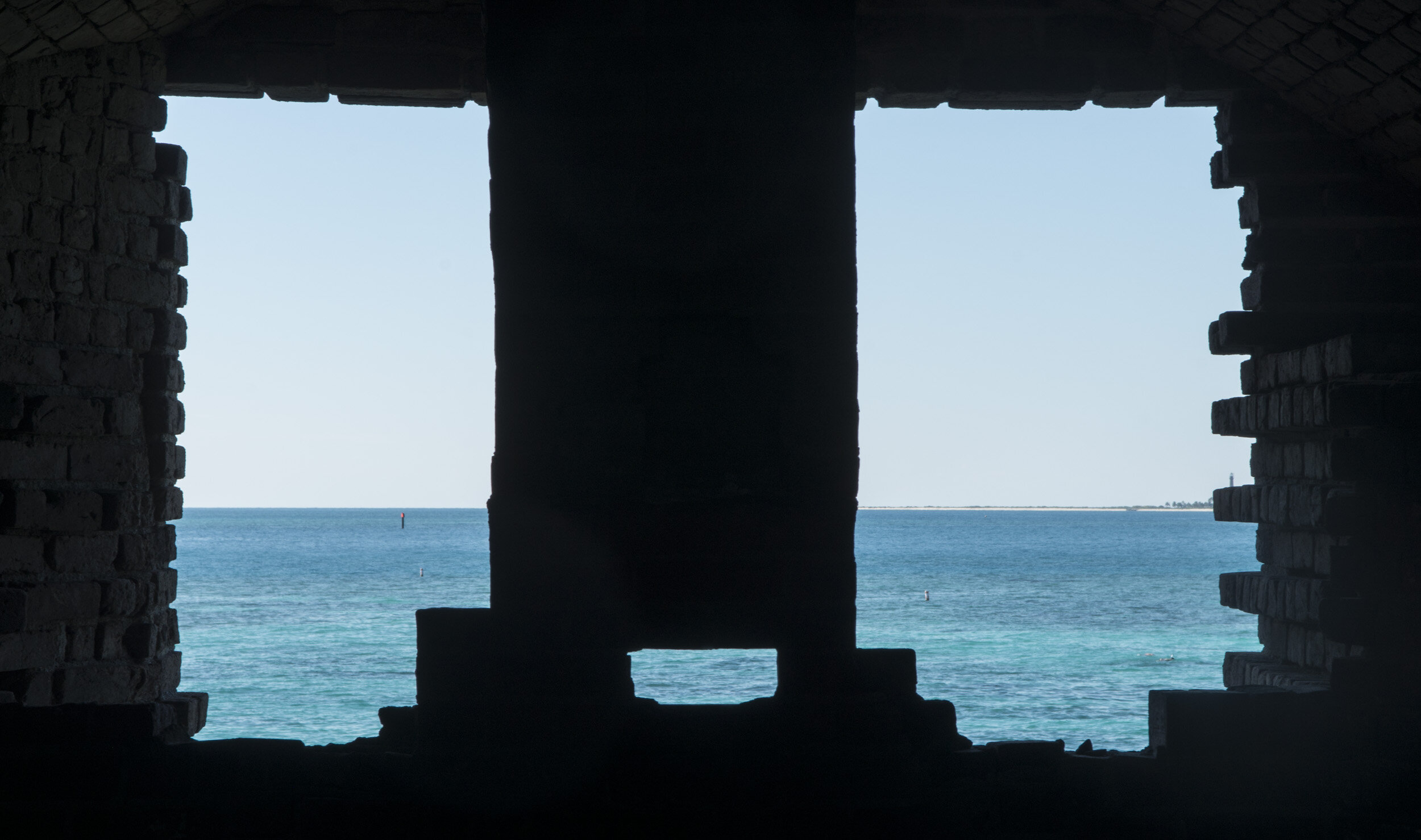

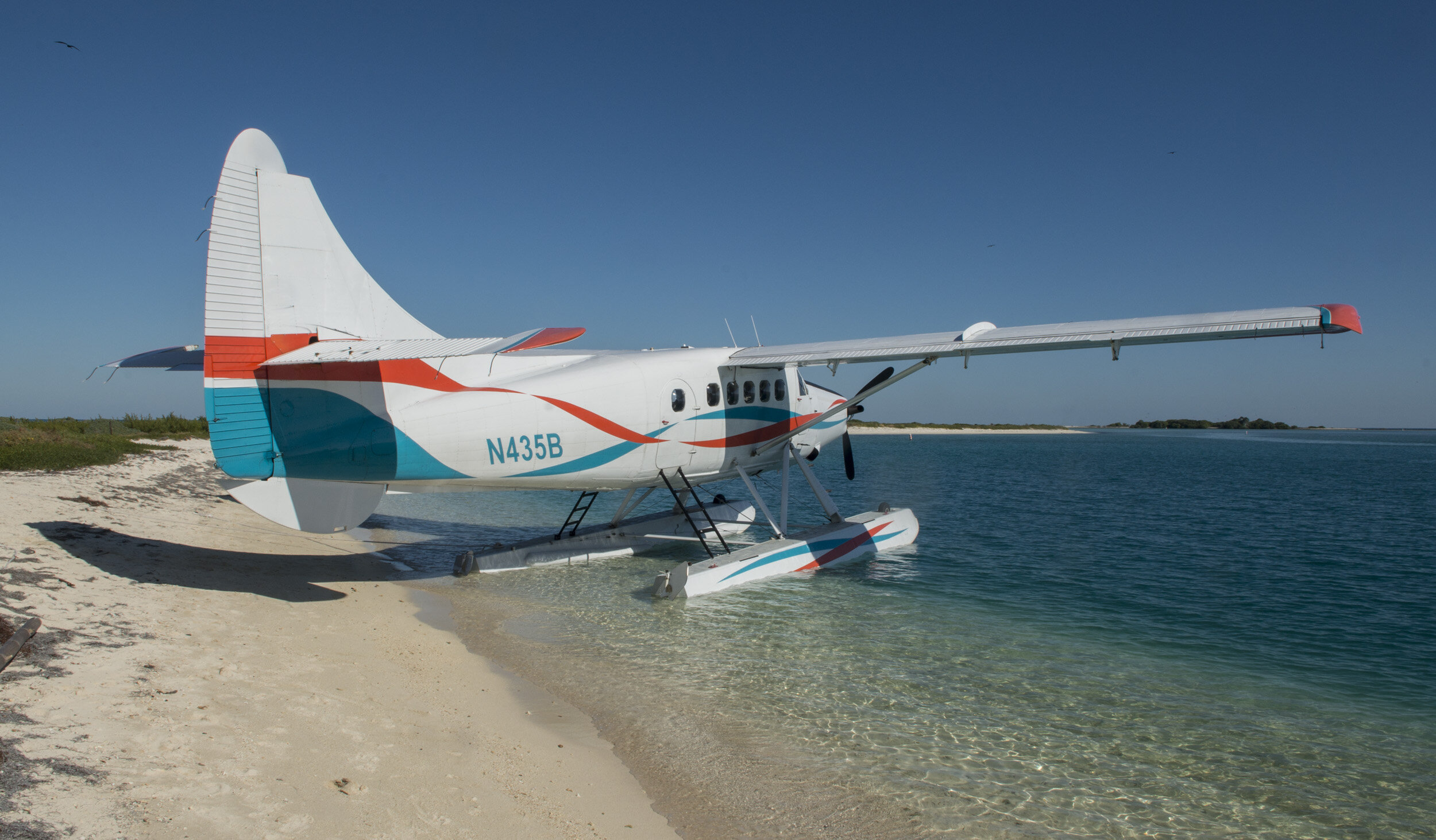
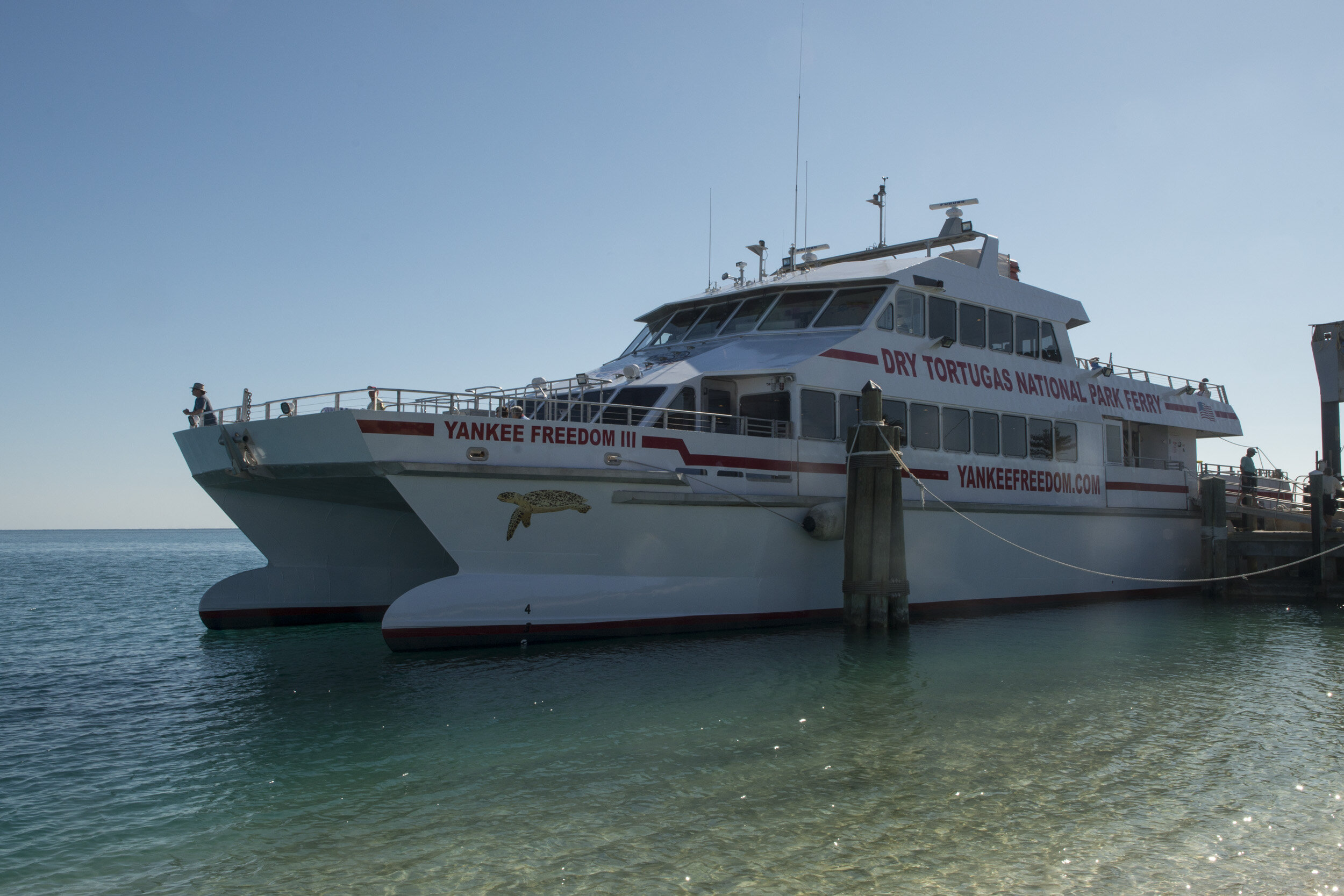
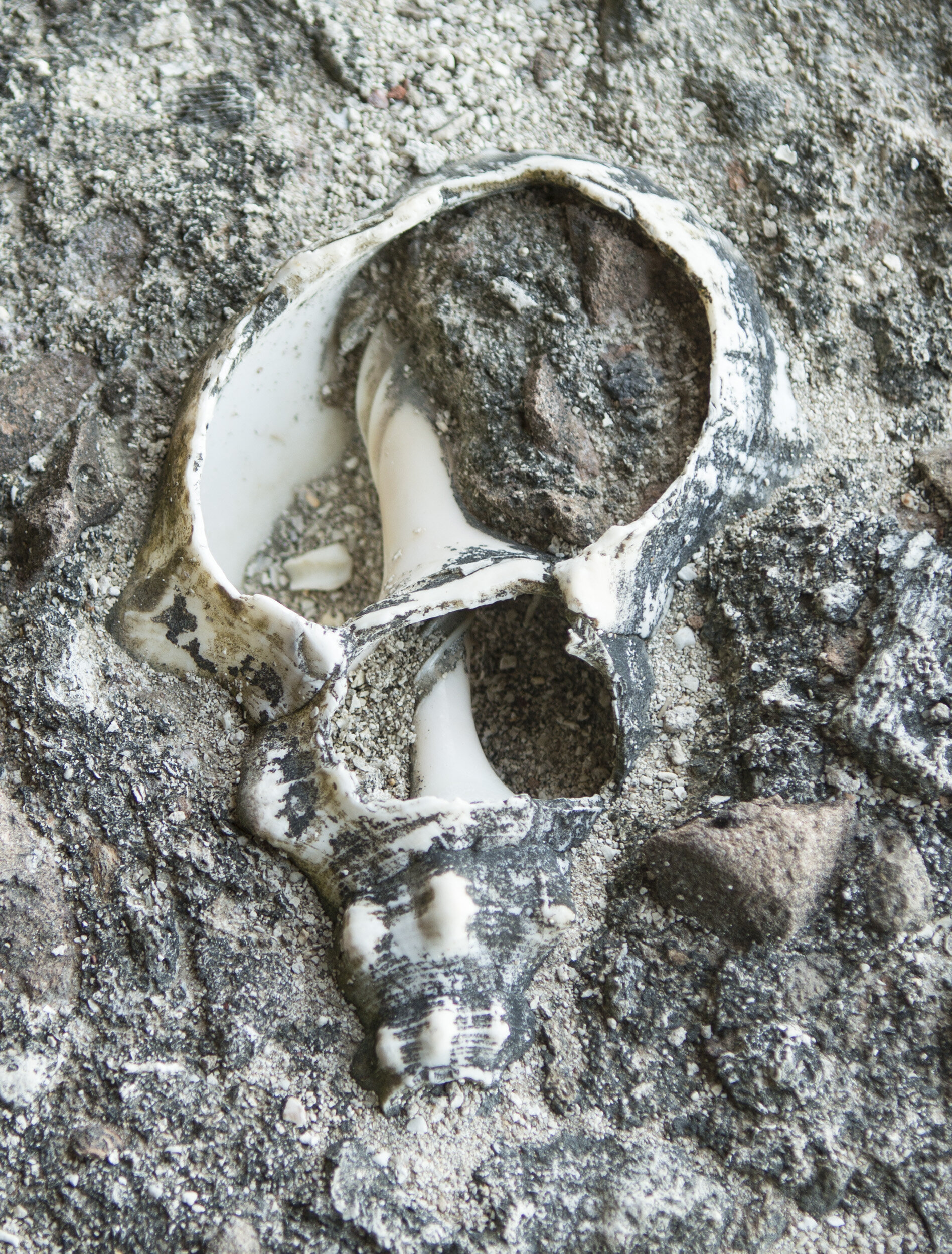
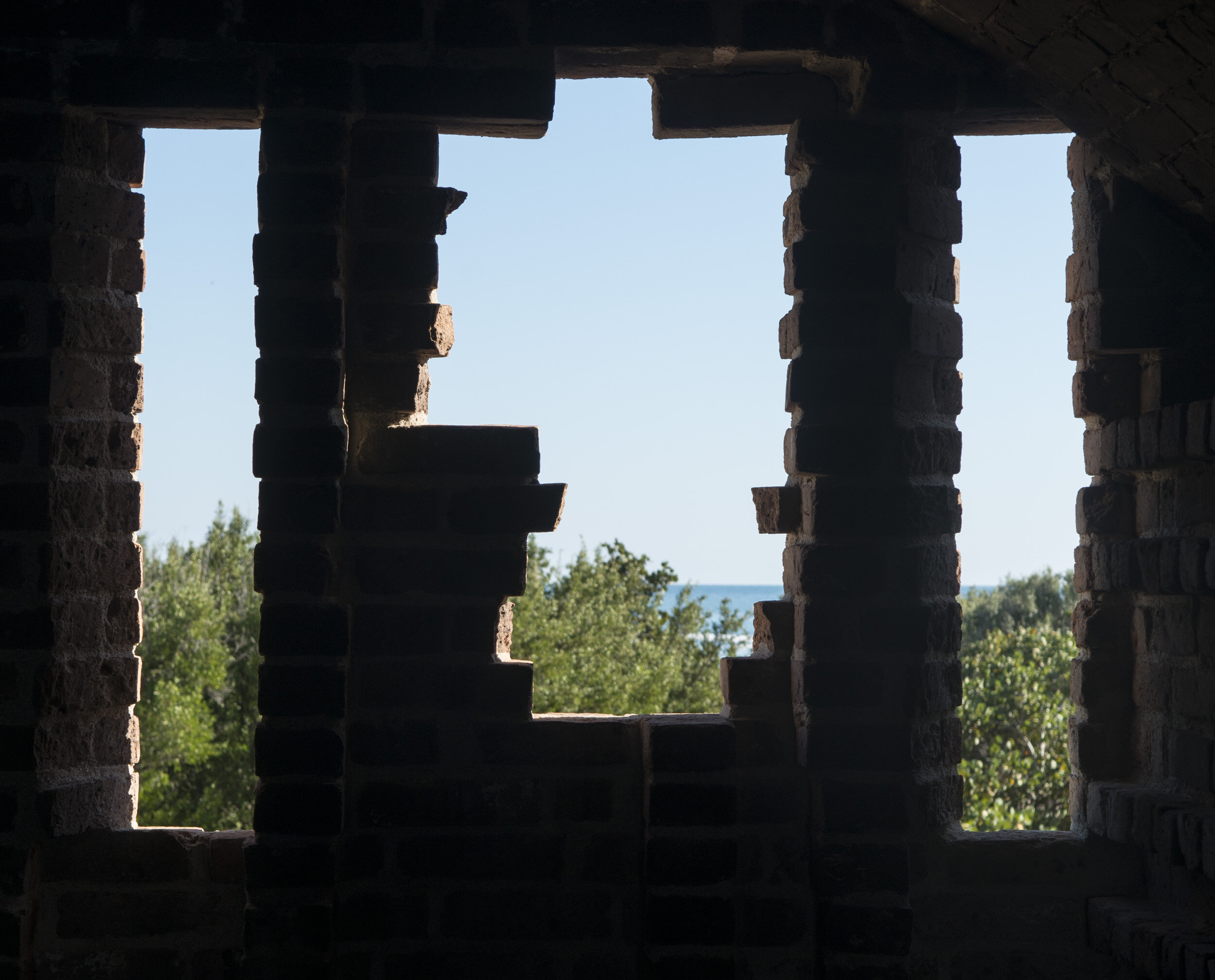
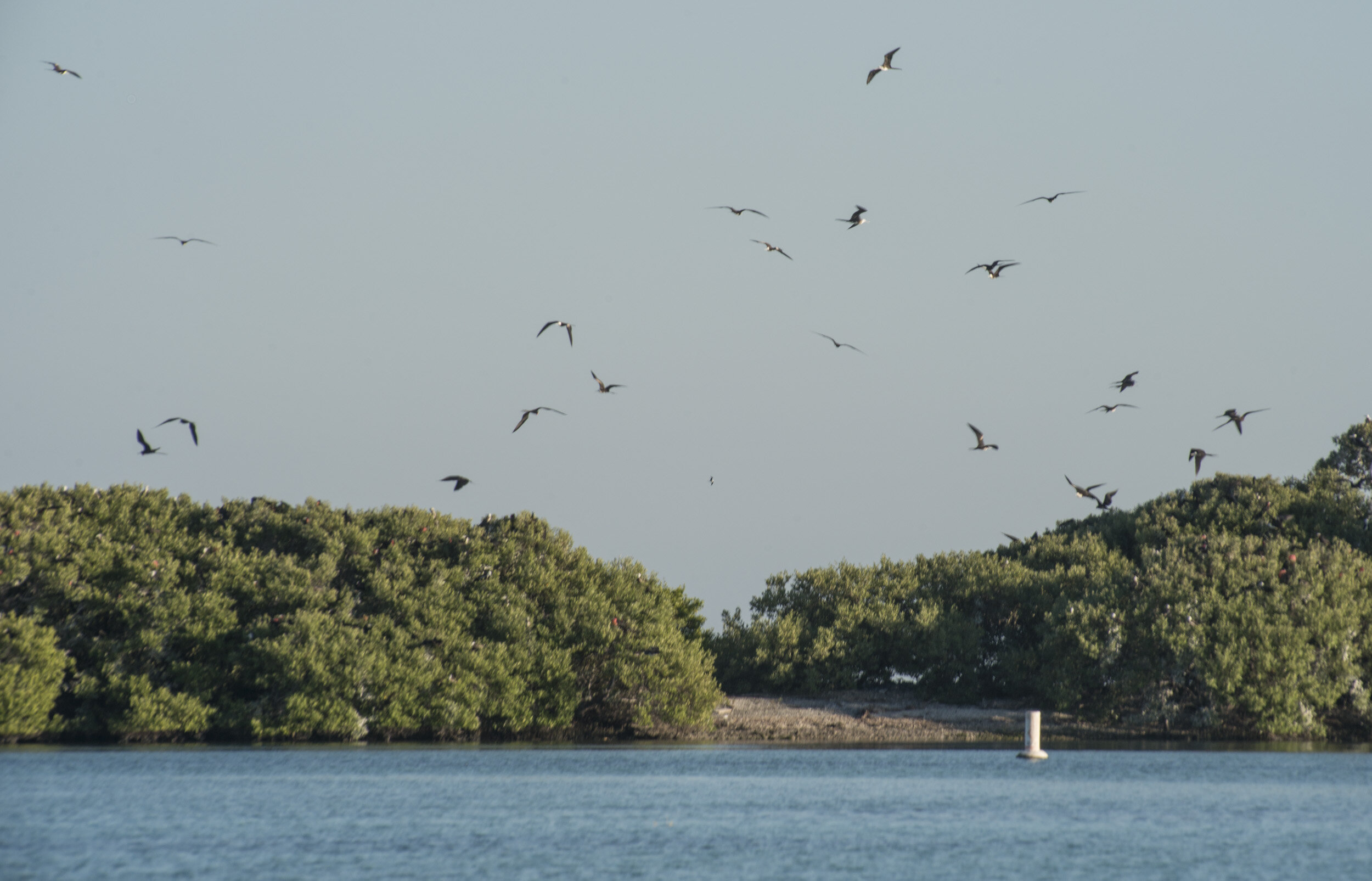
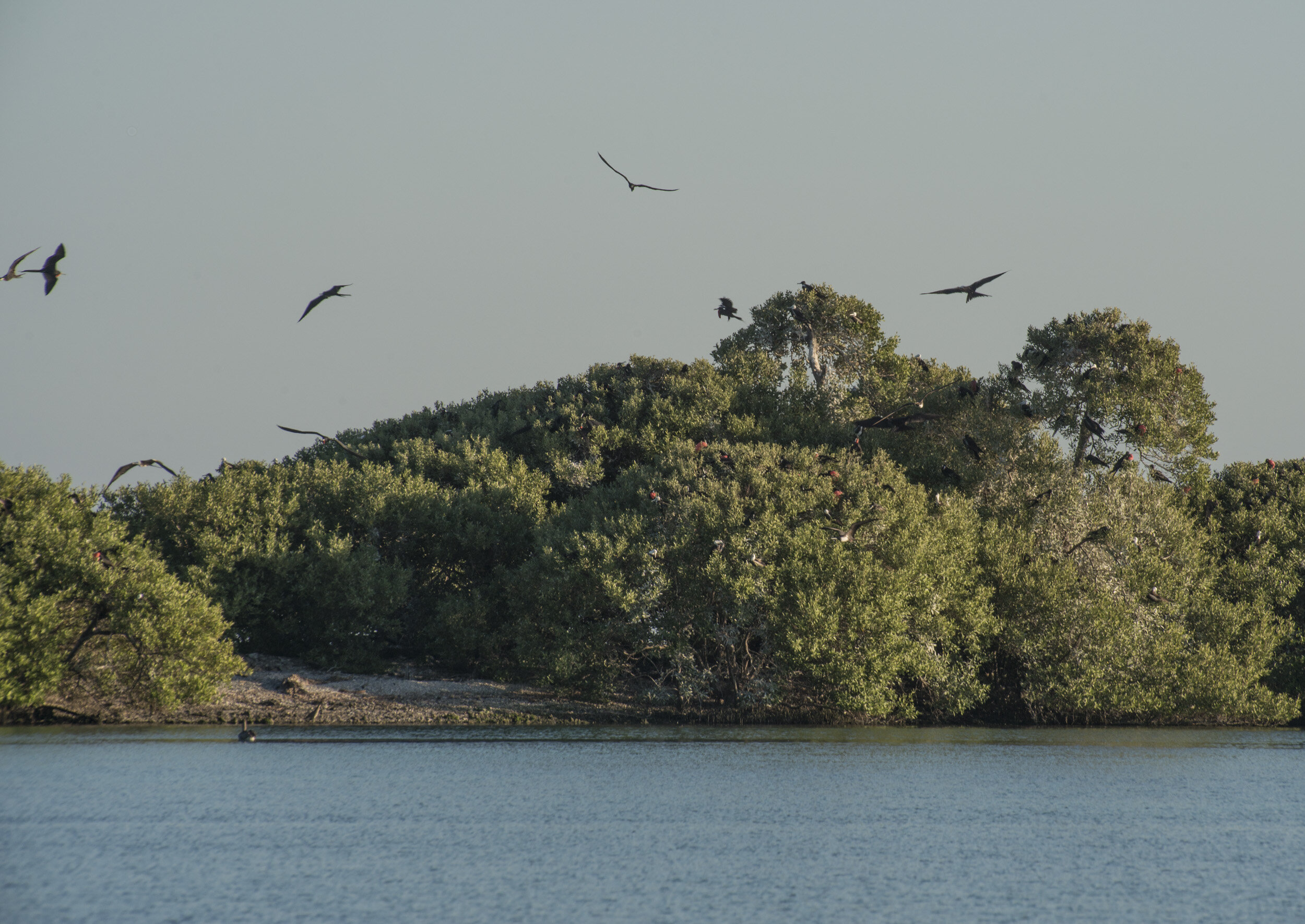
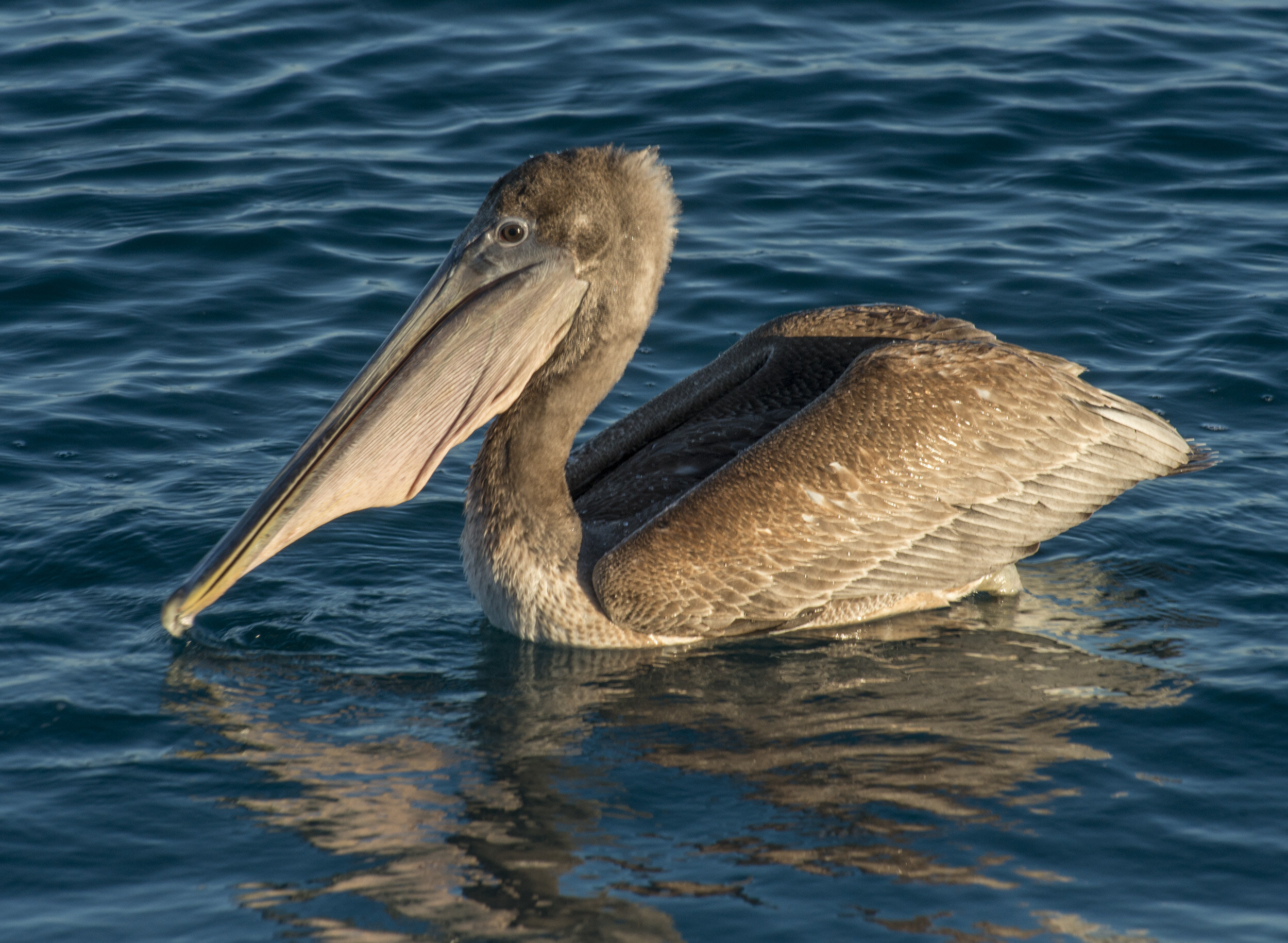

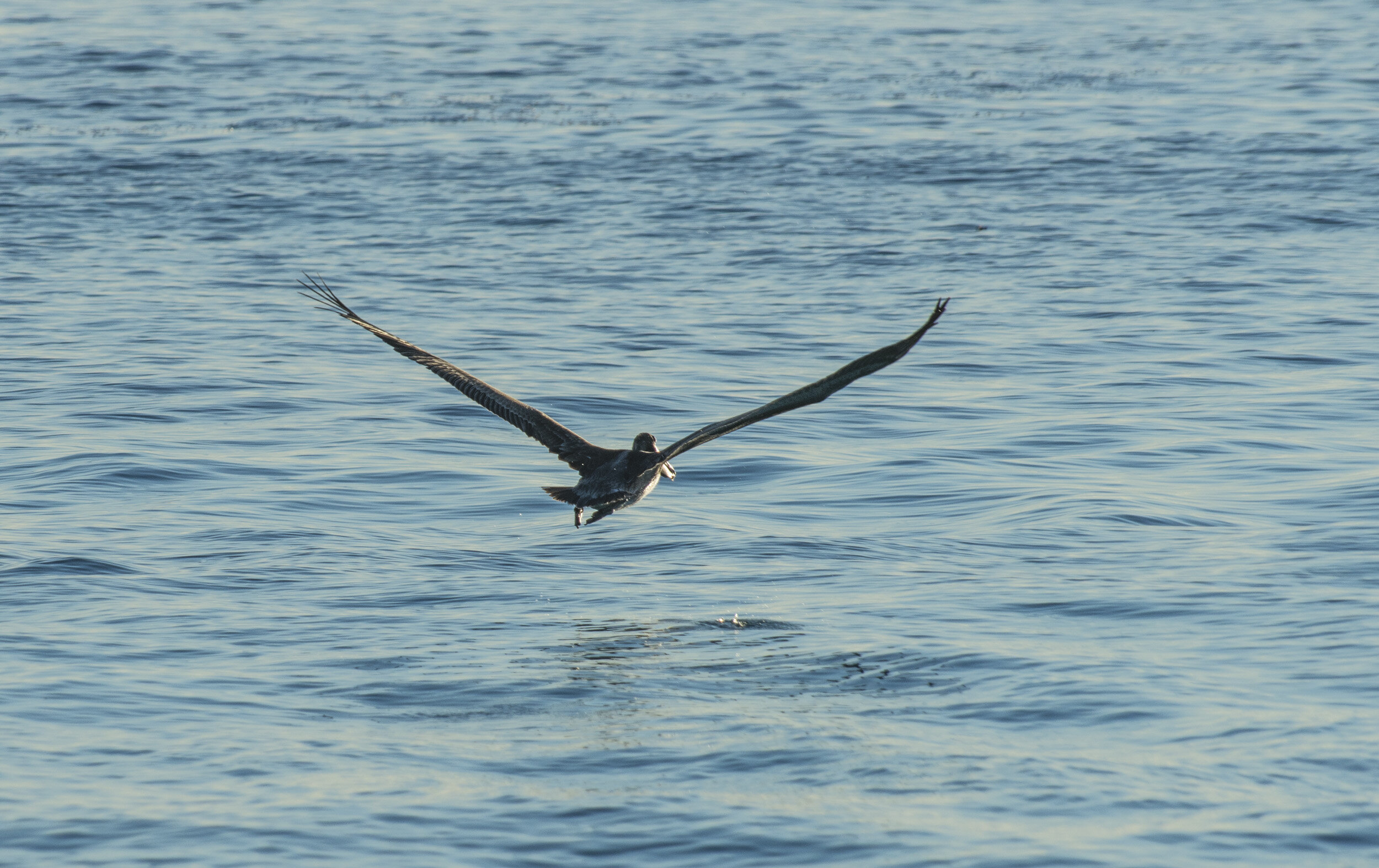

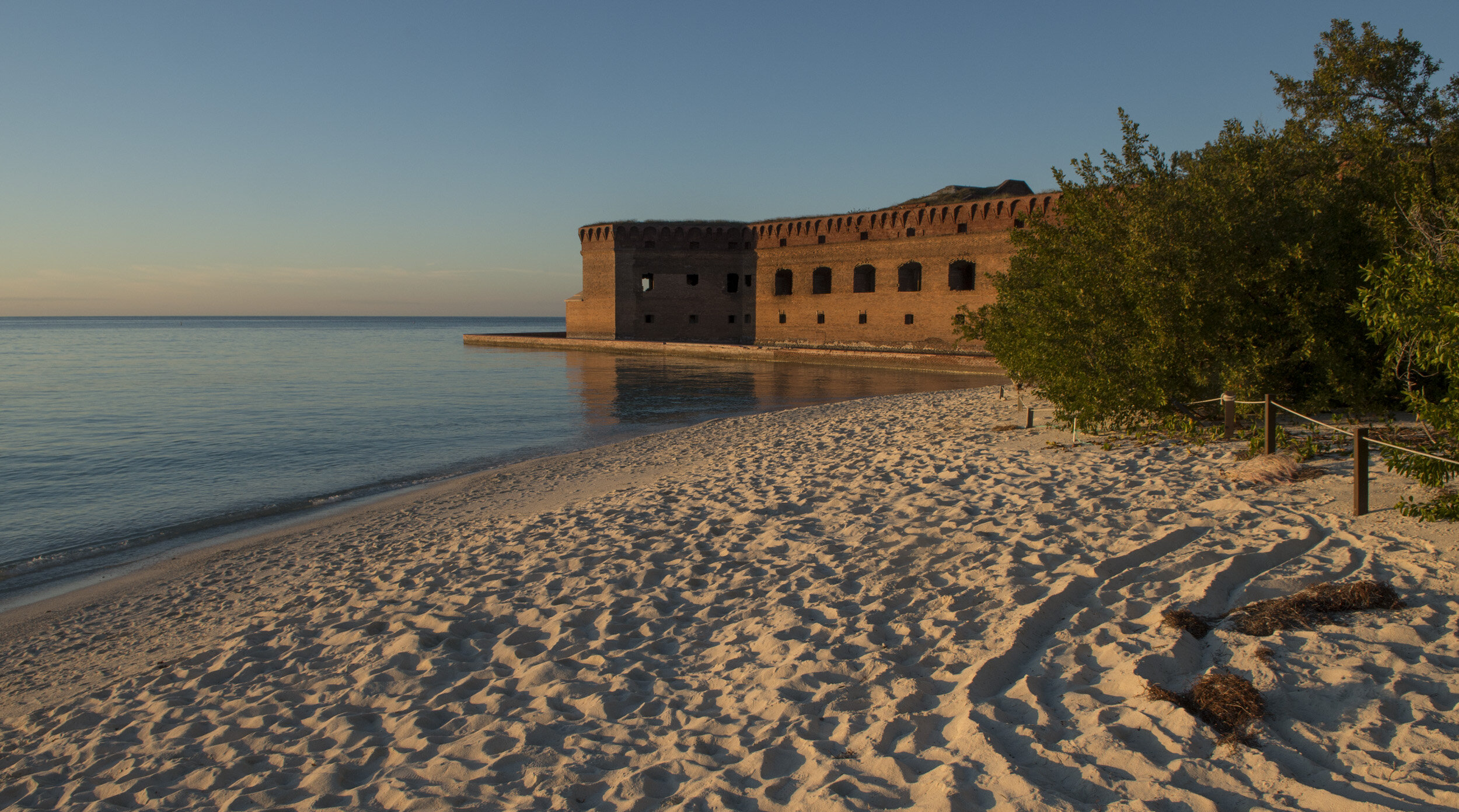
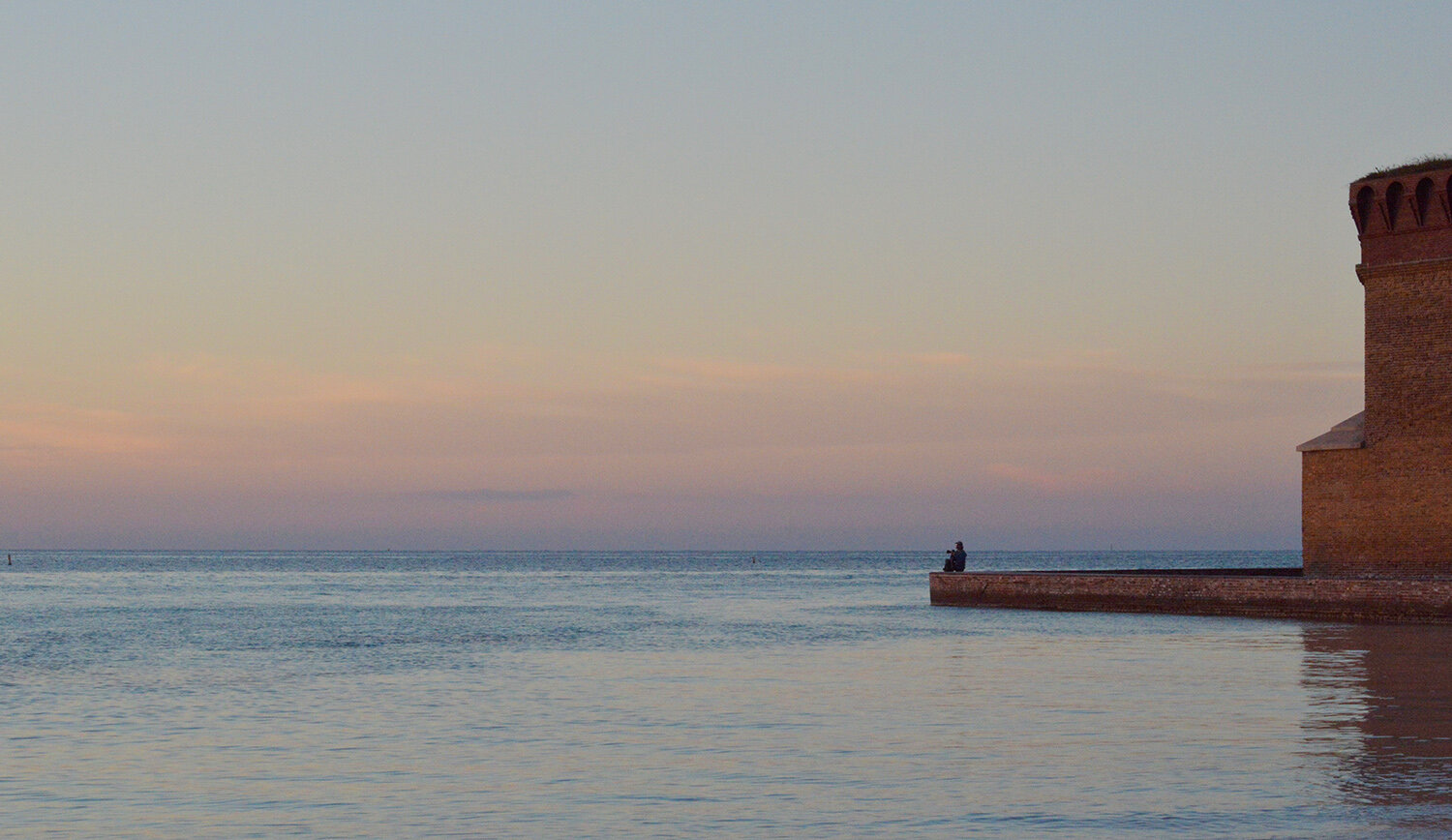
DAY THREE: ONE LAST DAY IN PARADISE
I’d heard the night skies in Dry Tortugas were amazing, but my visit was coinciding with a nearly full moon which doesn’t lend itself to good stargazing. I had found out from Tim, one of the YFIII crew members that was also a photographer, that the moon would be setting around 3:00 a.m., so I’d have a few hours between then and dawn to check out the stars. So I got up at the crack of 3:00 to see what the view was like. Wow! The Milky Way wasn’t up, but the sky was full of stars. I definitely wanted to get some shots of this.
One of the park’s resident rats out for a late night stroll
As I walked out of the campground, I had a little company. A rat was keeping pace in front of me almost all the way to the dock. I walked around the fort to the north beach. I looked up at Bastion B and it was framed by a sky full of stars. This would be my first set up for some night photography. I wanted to do a vertical panorama, showing the fort and all those beautiful stars.
I figured out the exposure for the stars, which was f/4 for 13 seconds at 3200 ISO. That exposure time would be long enough for me to ‘paint’ the fort with a flashlight. As the shutter was open exposing for the stars, I swung the flashlight beam back and forth across the fort. Once I got an exposure I was happy with, I tilted the camera up to get more images of the stars and then later put them together to make one image. Then I walked down the moat wall a bit. The starlight was so bright I didn’t even need the flashlight. I turned the corner at Bastion A and saw the view looking down the moat toward Bastion F with all the stars above and knew I had my new set up. Same process as the last one, except now I had the moat in it. I’ve heard there are efforts under way to get the park certified as a Dark Sky park. It definitely deserves it.
Fort Jefferson under the stars
Sunrise over the coaling dock ruins
Back at the tent, I got another hour of sleep before I got up again for sunrise. I walked over to the ledge overlooking the coaling dock ruins to watch the sun come up. The pelicans were out again landing on the old rusty pylons, and a couple ruddy turnstones (a type of sandpiper) were checking me out. The coaling dock ruins were the day’s snorkeling destination.
I gathered my gear and strolled to the south beach to get in the water. I opted not to bring my D200 in the dry bag and instead would be shooting video with my GoPro. I started by heading for the seagrass beds. The big wildlife sighting here were a couple barracuda.
Then it was over to, for me, the biggest surprise in the park: the coaling dock ruins. I heard they had become an artificial reef but really wasn’t expecting much. It doesn’t look like much on Google Maps, but if you’re getting in the water in Dry Tortugas definitely make it a destination. They are in the protected waters of the anchorage, so the water is quite calm.
All the pylons have support beams going out at a 45-degree angle to the bottom, so the area feels fuller than it looks from above the water. And everything is covered in several species of coral. Lots of different kinds of fish. When I entered the ruins I swam right into a school of these tiny, shimmery, silver bait fish. There were thousands of them and they were almost completely surrounding me. They parted as I moved through them. It felt like swimming through a living cloud. I swam the length of the ruins and back, back through the seagrass beds, and down the moat wall from Bastion E to the beach. It was a much better snorkel than the day before, although I still had to deal with clearing my mask fairly frequently. And once again I had the water all to myself. There is a bunch of footage from this snorkel in the video.
Campers are required to have their stuff back on the docks by 10:30 so the crew can load it and new arriving campers can take your empty site. So after I got back from my snorkel I broke camp. I could’ve easily spent a few more days here, so I was a little sad having to pack up. Even the hermit crabs, my constant companions, had moved on. I couldn’t see a single one from my campsite. I grabbed a cart and wheeled all my gear to the dock.
After my stuff was loaded and I was clear to come aboard, I took a hot shower like I had the day before. As I stood at the aft of the vessel drying off, I noticed several people on the dock intently looking at something in the water. I leaned over to see what they were looking at. It was a huge sea turtle! I quickly grabbed my camera. No time to put the big lens on, I just started shooting. As it came into view on the starboard side, I managed to snap off several pics of it as it surfaced for one last breath before going under. There was a lot of excitement over it. Several crew members even came out to catch a glimpse.
Loggerhead Sea Turtle near the dock
Between lunch and the ferry departure, I just wandered the island shooting ‘B-roll’ video (random video to show the place) which you’ll see inserted throughout the video. It was also a way from me to see the fort and take everything in one last time before leaving.
And then the time came where I had to file onto the YFIII to head back to Key West. I headed outside to the port side deck. The crew pulled up the ropes and we began to pull away from the dock. I started to get a little choked up again as we rounded the fort. This trip had been a goal of mine for so long that I still couldn’t believe that I had actually done it. As the park faded over the horizon, I was already dreaming of my return visit to Dry Tortugas National Park.


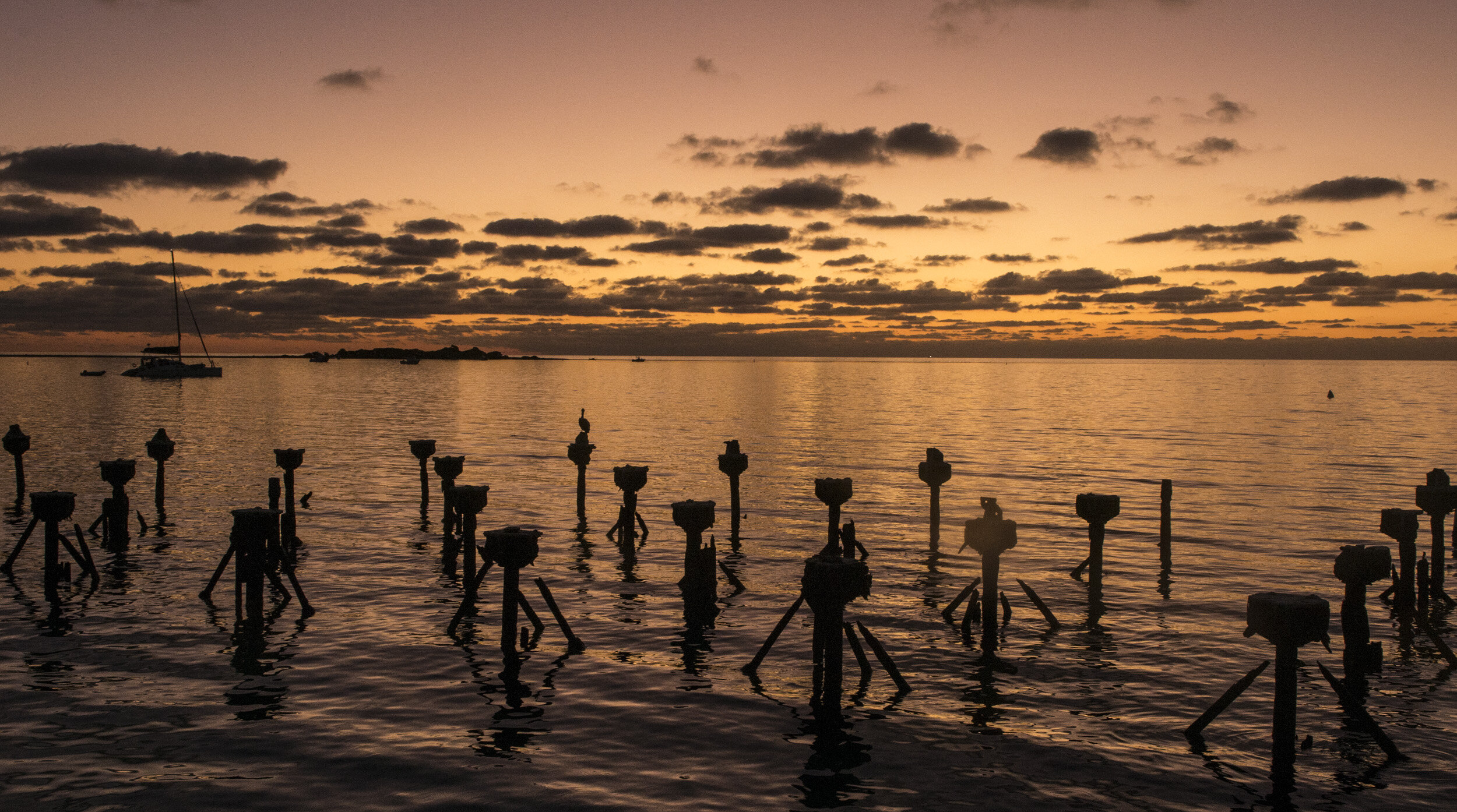
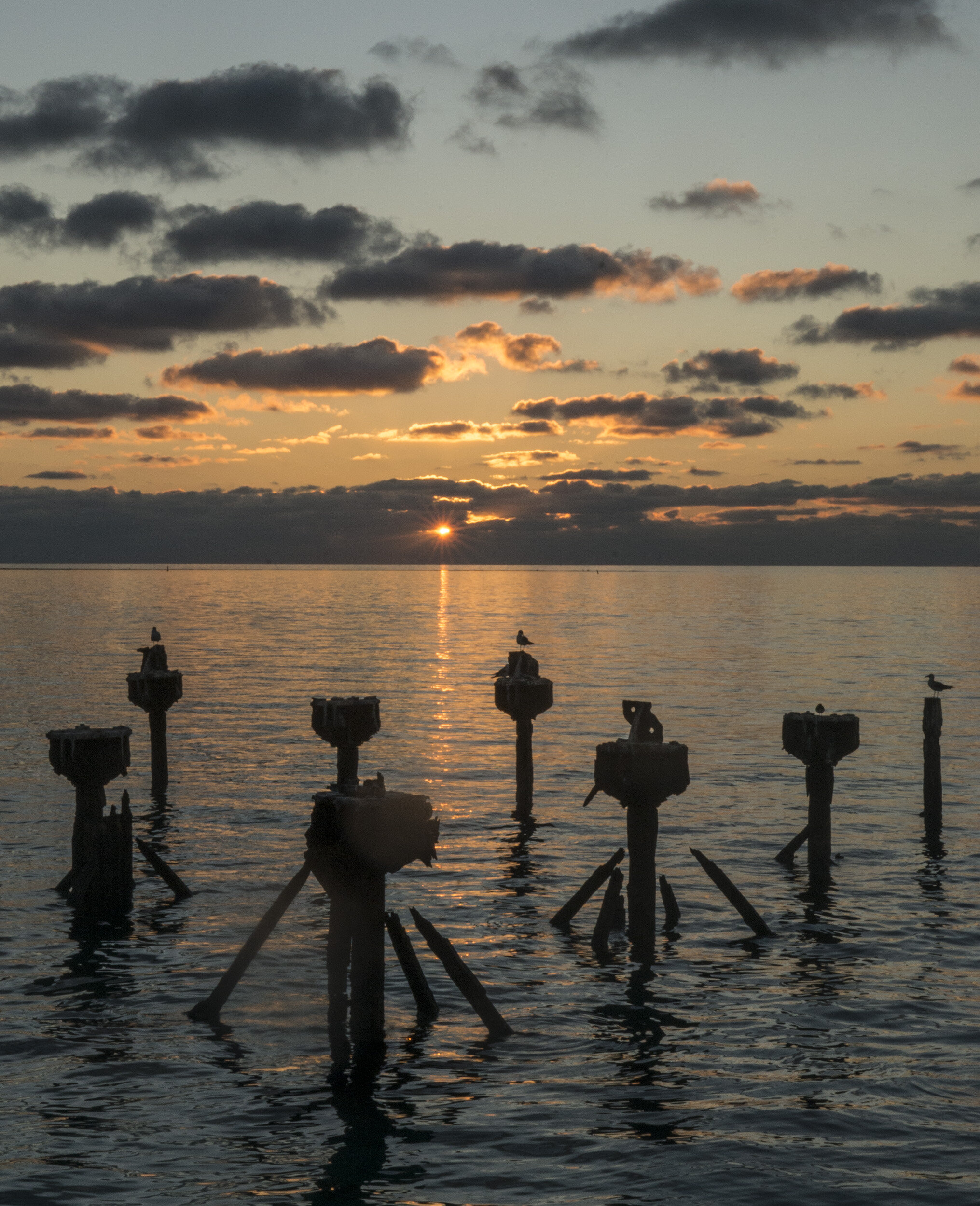
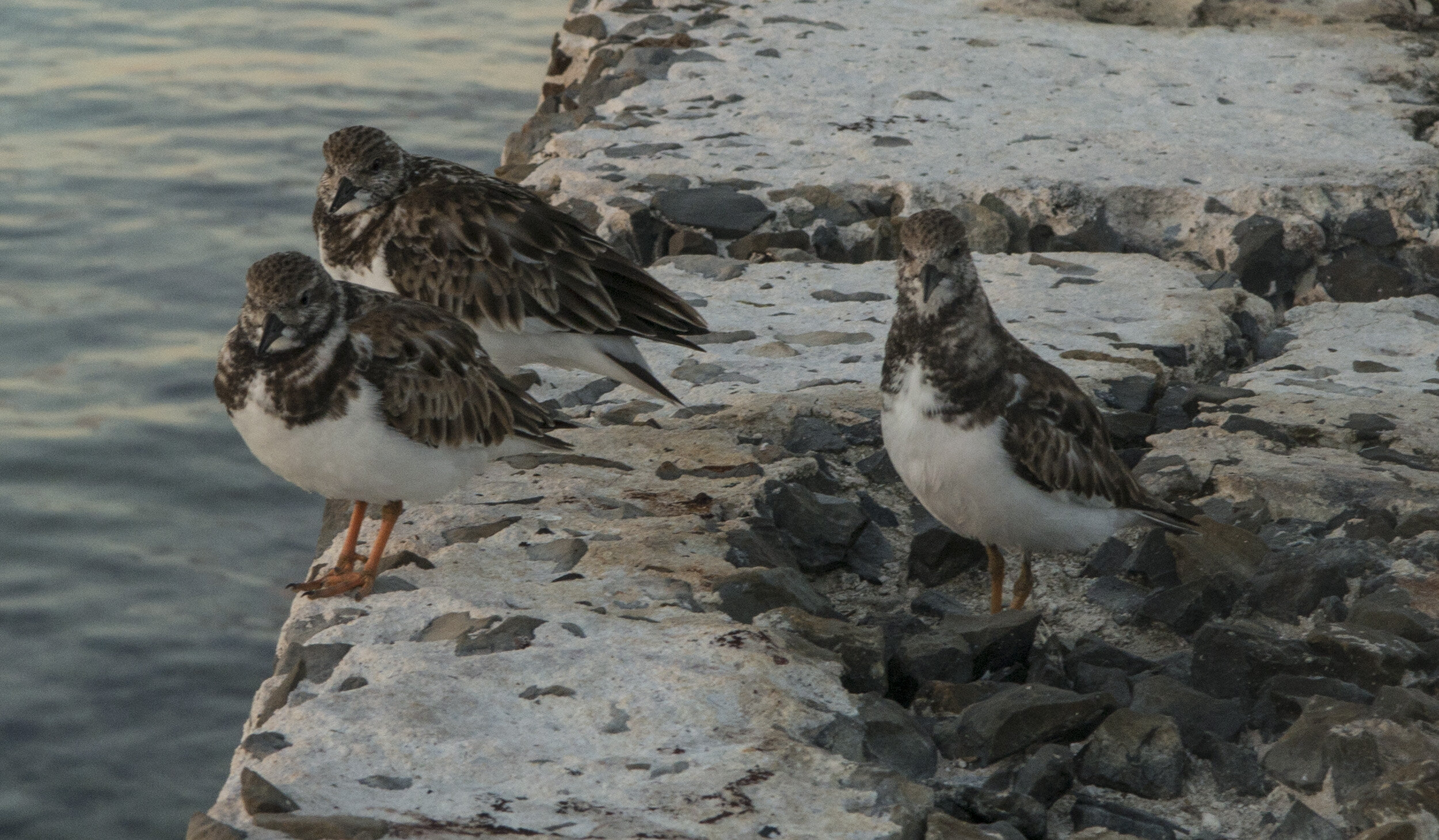
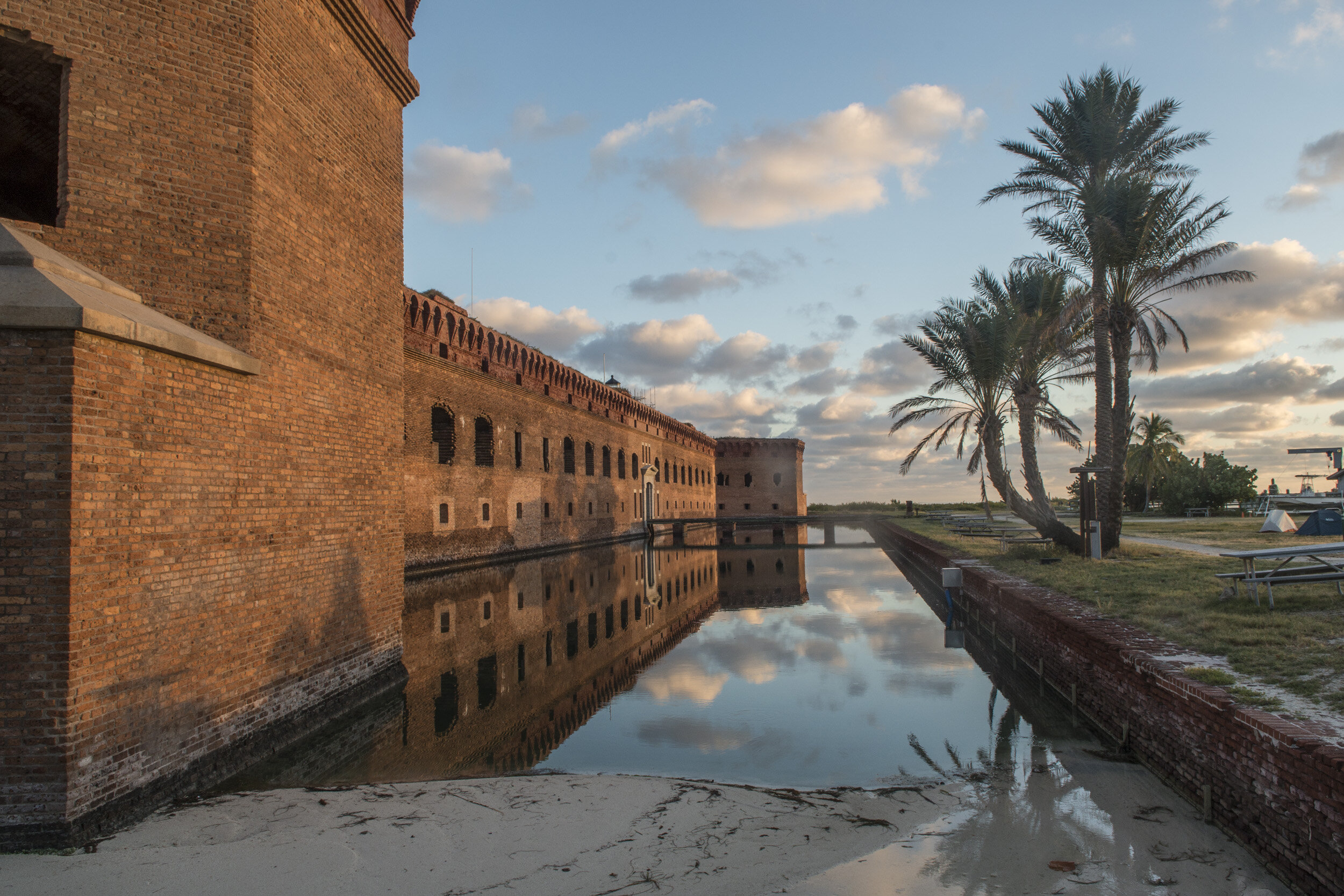

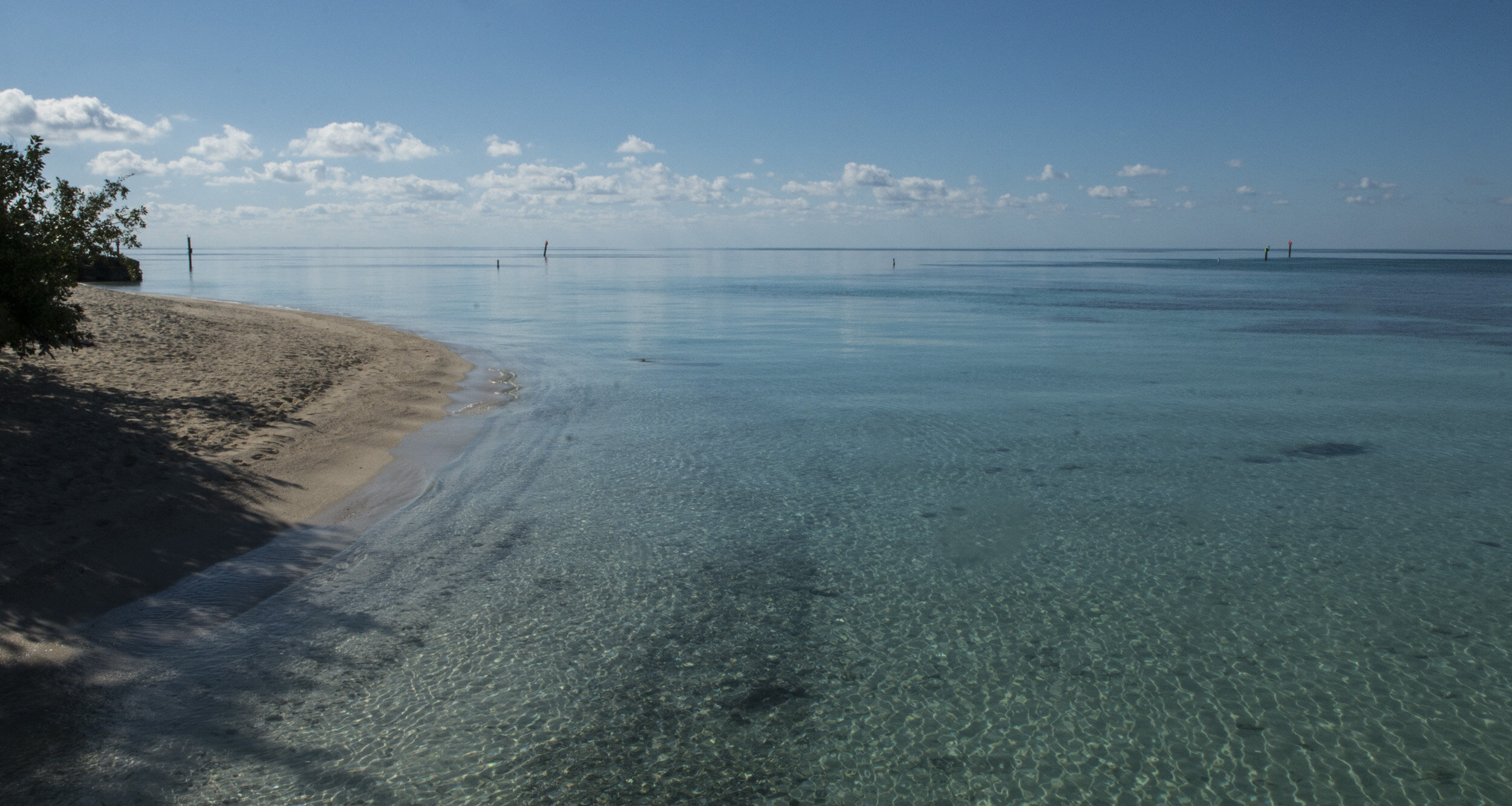
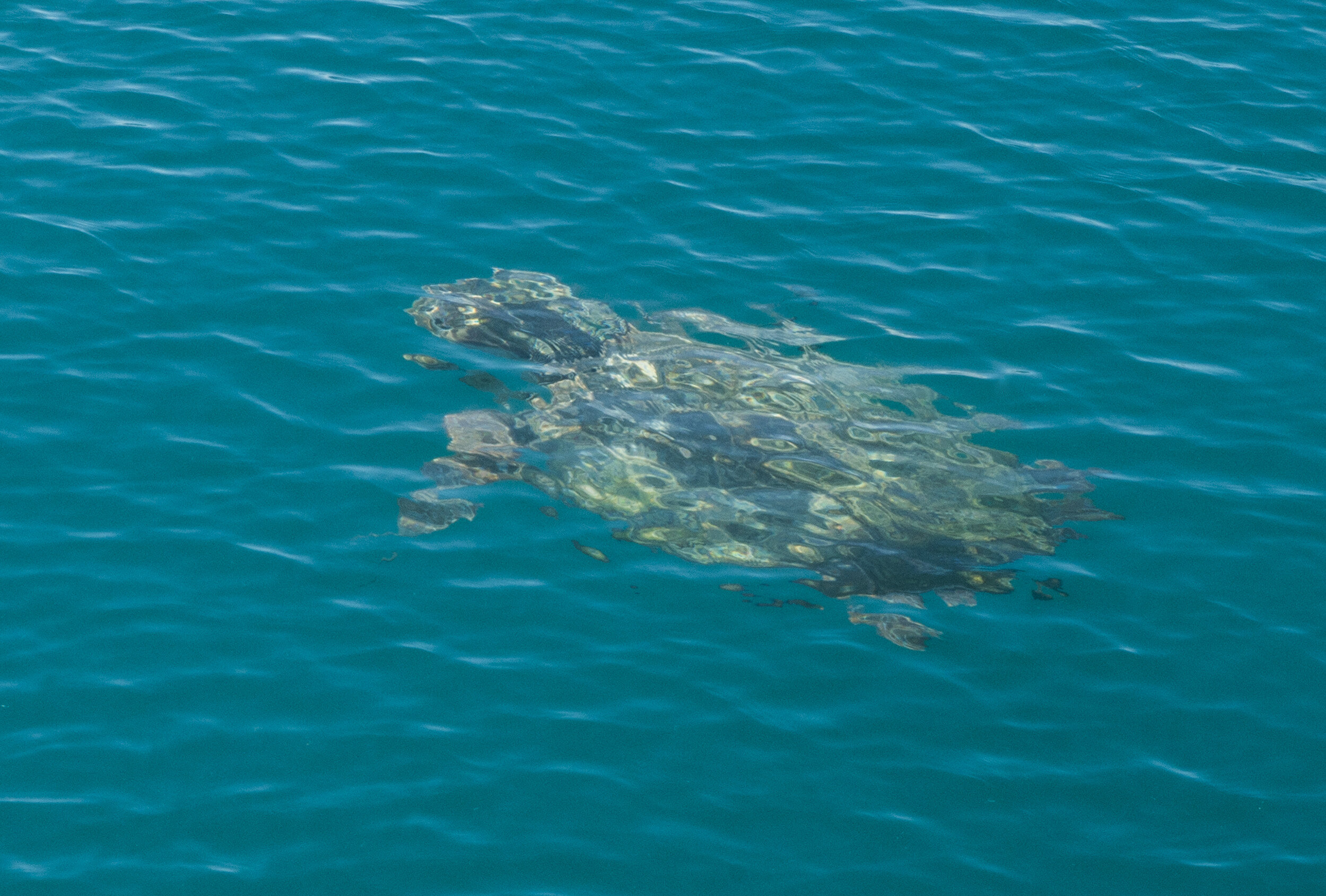

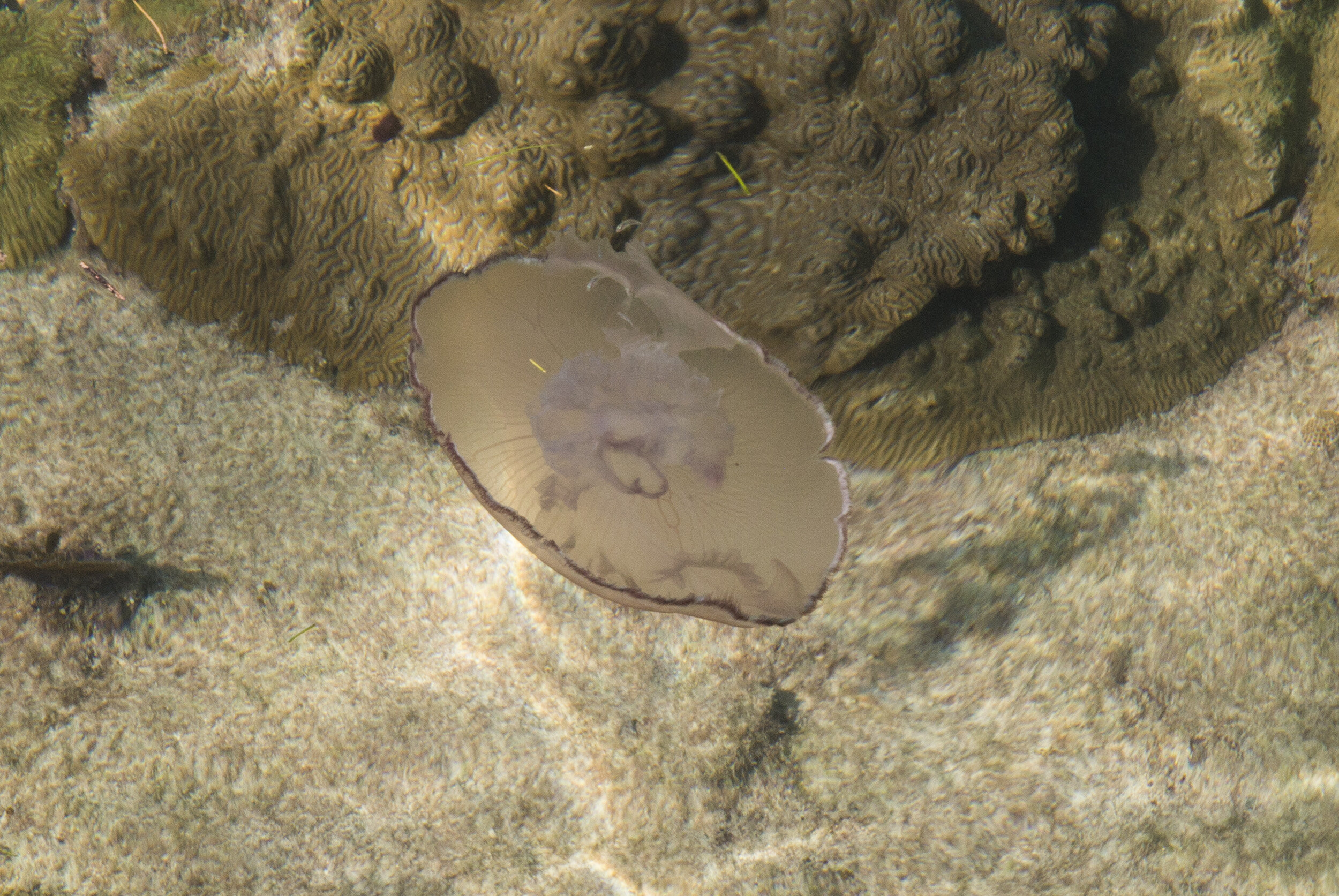
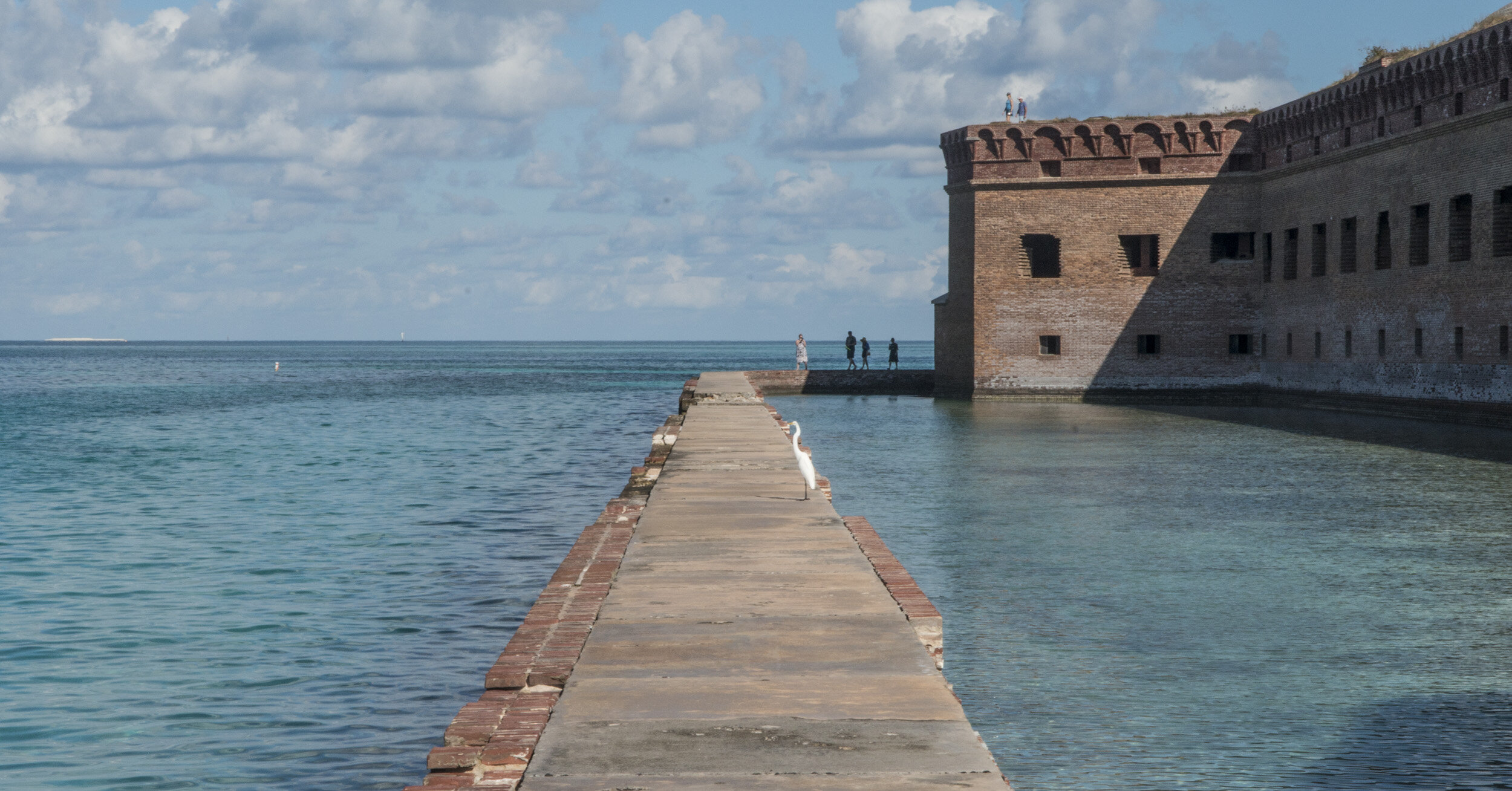
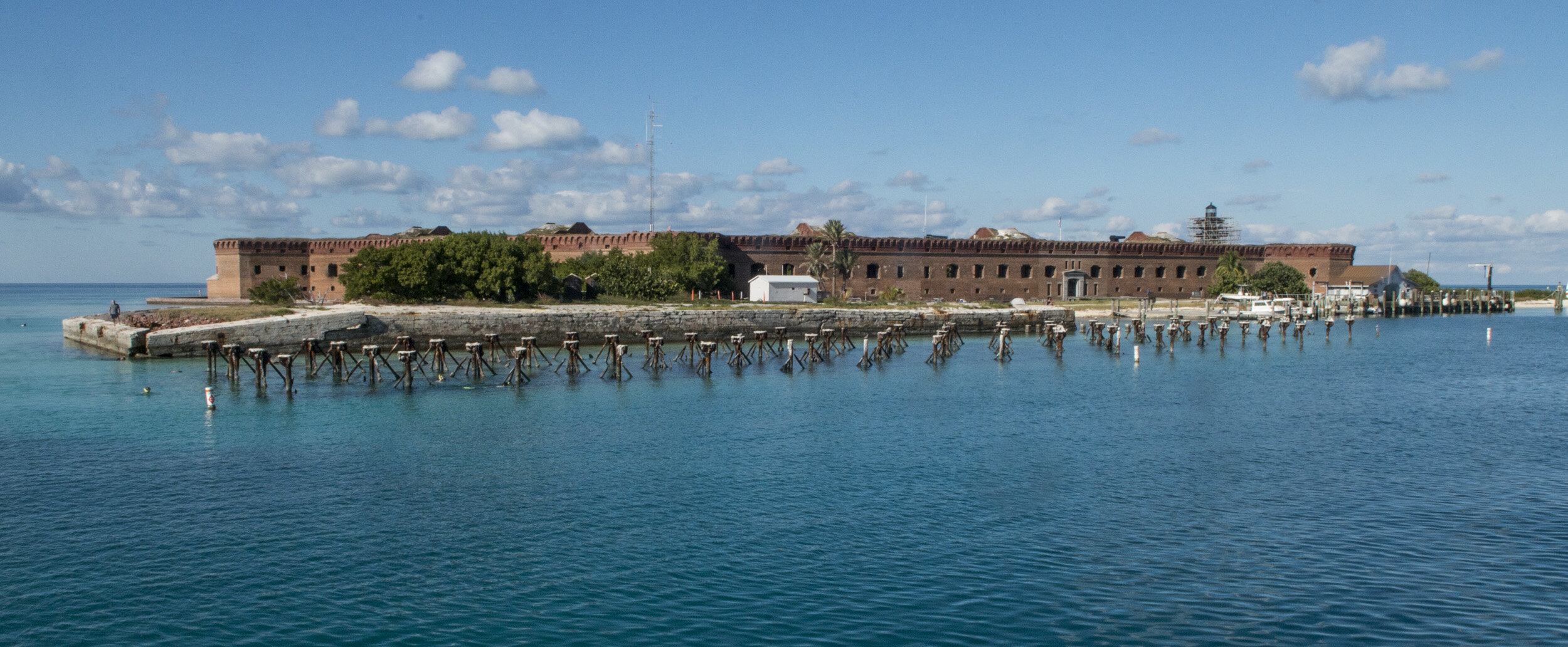
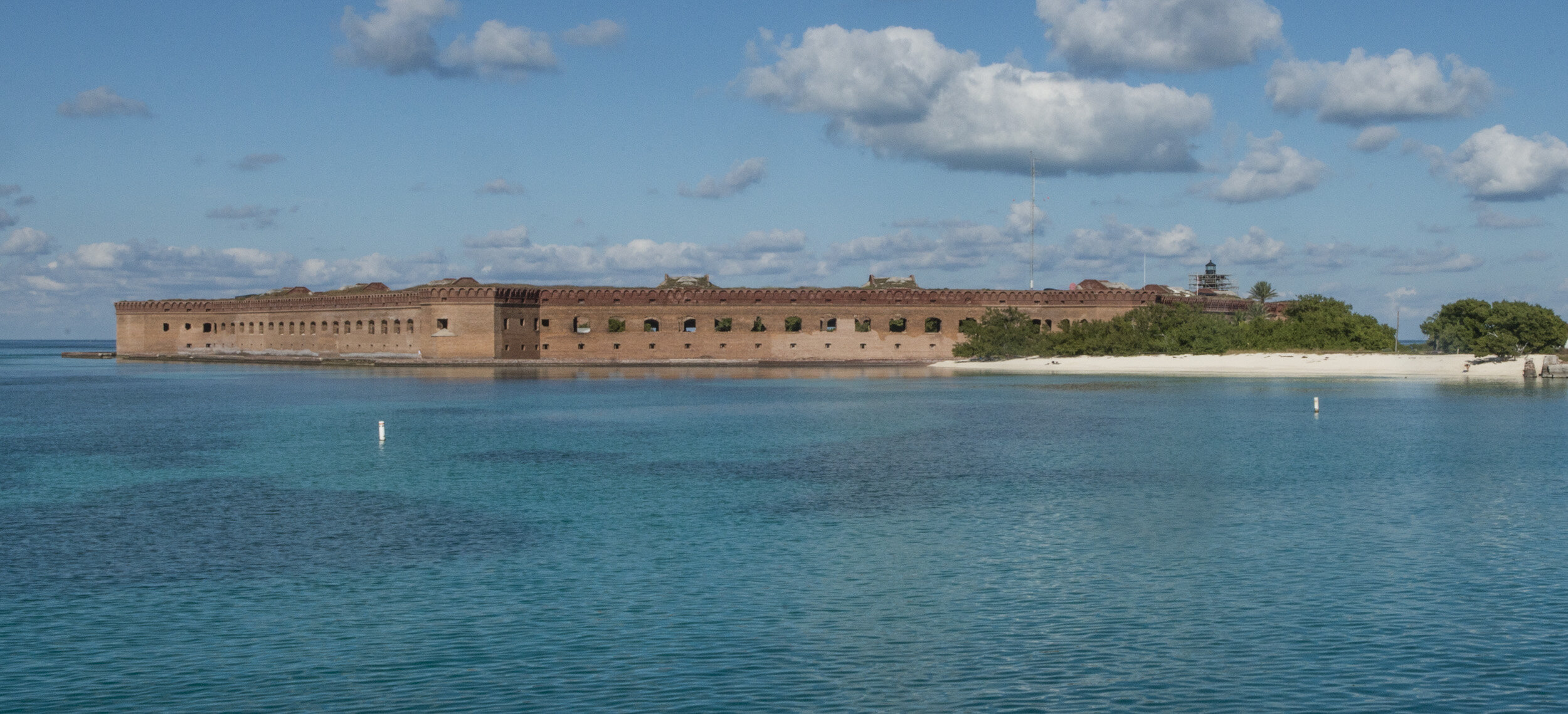
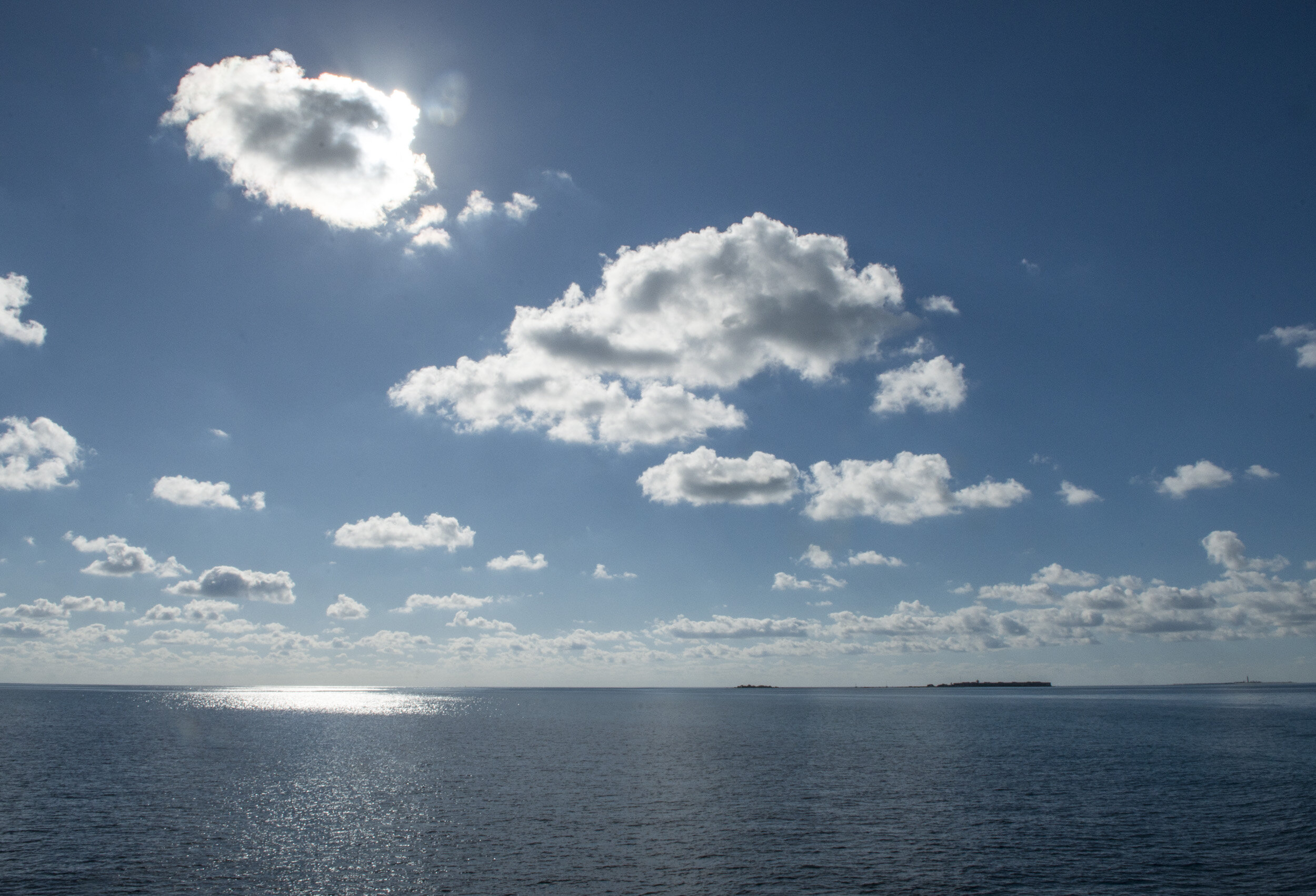
Other posts in this series:
Everglades National Park, Florida. Keeping My Feet On Not-So-Solid Ground.
Great Sand Dunes National Park, Colorado. An Alien Planet In The Middle Of America.
Gateway Arch National Park, Missouri. Super sketchy, But I Did It.
Theodore Roosevelt National Park, North Dakota. Stuck In A Dangerous Situation.
Great Basin National Park, Nevada. An Unexpected Journey.
White Butte, Highpoint of North Dakota. Really? More Goats?
Mount Katahdin, Highpoint of Maine. If At First you Don't Succeed...
Hawkeye Point, Highpoint of Iowa. So... Much... Corn...
Granite Peak, Highpoint of Montana. I Have Seen The Top Of The Mountain, And It Is Good.
Mount Borah, Highpoint of Idaho. The Great American Eclipse Of 2017.
Tri-Point Of Iowa, Nebraska, And South Dakota. Hot. Damn Hot. Real Hot.
Sassafras Mountain, Highpoint of South Carolina. Please excuse our mess.
Ebright Azimuth, Highpoint of Delaware. Rock bands and space shuttles.
Charles Mound, Highpoint of Illinois. A farmland stroll.
Tri-point of NC, TN, and VA. My car meets its match.
Mount Rogers, Highpoint of Virginia. OH MY GOD!!! LOOK AT ALL THE FUZZY PONIES!!!
Guadalupe Peak, Highpoint of Texas. Birth of an obsession. And big freaking bugs.







